Header Text
Footer Text
- The Landscapes of Palestine
- The Rulers of Palestine
- The Climate of Palestine
- Major Jewish Religious Festivals
- What is the New Testament?
- Who wrote the Gospels?
- English Translations of the New Testament
- John's mission foretold
- The birth of John
- John's message
- John begins baptising
- John criticises Herod
- Was John the promised Elijah?
- Jesus's birth announced
- Mary & Joseph go to Bethlehem
- The birth of Jesus
- Shepherds visit the infant
- Jewish religious rituals
- Wise men visit Jerusalem
- The holy family flees to Egypt
- The holy family returns to Nazareth
- Jesus grows up
- Jesus starts his ministry
- Jesus is tempted
- Jesus returns to Galilee
- Jesus goes back to Nazareth
- Jesus travels to Jerusalem
- Jesus passes through Samaria
- Jesus performs healing miracles
- Jesus teaches in Capernaum
- Jesus's teachings on a hillside
- Jesus upsets the Pharisees
- Jesus crosses the Sea of Galilee
- Jesus heals & teaches in Jerusalem
- Jesus teaches how to receive the Holy Spirit
- Jesus journeys among the Gentiles
- Jesus walks on the Sea of Galilee
- Jesus in Tyre and Sidon
- Who is Jesus?
- Jesus is changed on the slopes of Mount Hermon
- Jesus pays the Temple Tax
- Jesus claims God's personal name
- The Parable of the Good Samaritan
- The Parable of the Prodigal Son
- Lazarus, Come out!
- Jesus's entry into Jerusalem
- Jesus curses a fig tree
- Jesus heralds the end of the sacrificial system
- Jesus in Jerusalem during Passover week
- The Parable of the Sheep & the Goats
- Paying taxes to Caesar
- Jesus is betrayed
- The Last Supper
- Jesus crosses the Kidron Valley
- Jesus is arrested
- Jesus is taken to the Praetorium
- Jesus is tried by Pilate
- The death of Judas
- Jesus is executed by crucifixion
- The Pharisees mount a guard on the tomb
- Jesus rises from the tomb
- Jesus appears to his followers
- Jesus is taken into God's presence
- Jesus appears to Peter, James & Paul
- Who were Jesus's followers?
- The believers are filled with the Holy Spirit
- Peter & John heal a crippled man
- The believers share their possessions
- Opposition in Jerusalem
- Stephen is killed & the believers are scattered
- Philip's Journeys
- Peter's Journeys
- Peter hands over the leadership to James
- The Gentile Church at Antioch
- Saul's Early Life
- Saul persecutes the believers
- The beginning of Saul's ministry
- Saul & Barnabas in Antioch & Jerusalem
- Paul starts his 1st Missionary Journey
- Paul, Barnabas & Mark in Cyprus
- Paul, Barnabas & Mark sail to Pamphylia
- Paul & Barnabas travel inland
- Paul & Barnabas in Iconium
- Paul & Barnabas in Lystra
- Paul & Barnabas return to Perga
- Paul & Barnabas return to Antioch in Syria
- Paul & Barnabas attend the Council of Jerusalem
- Paul & Barnabas take the decision to Antioch
- Paul starts his 2nd Missionary Journey
- Paul travels to Troas
- Paul sails across to Europe
- Paul arrives in Philippi
- Paul travels to Amphipolis & Apollonia
- Paul in Thessalonica
- Paul in Berea
- Paul in Athens
- Paul in Corinth
- Paul returns to Jerusalem
- Paul starts his 3rd Missionary Journey
- The Ephesians are filled with the Holy Spirit
- The silversmiths riot in Ephesus
- Paul travels to Corinth
- Paul returns to Macedonia
- Eutychus falls from a window in Troas
- Paul leaves for Assos
- Paul sails to Miletus
- Paul visits Cos and Rhodes
- Paul visits Philip in Caesarea
- Paul meets violent opposition in Jerusalem
- Paul addresses the crowds
- Paul in Caesarea
- Paul appeals to Emperor Nero
- Paul sets sail for Rome
- Paul is shipwrecked
- Paul in Malta
- Paul heads for Rome
- An Introduction to Paul's Letters
- Paul's Letter to Galatia
- Paul explains his personal background
- Alive in Christ
- Set free from Slavery
- The Fruit of the Spirit
- Paul's 1st Letter to Thessalonica
- Paul hopes to visit Thessalonica
- The Day of the Lord
- How Christians should behave
- Paul's 2nd Letter to Thessalonica
- The coming Day of the Lord
- Saved by the power of the Holy Spirit
- Paul's 1st Letter to Corinth
- The Holy Spirit helps us understand
- Temples of the Holy Spirit
- Advice on Marriage & Relationships
- Running the Race of Life
- The Lord's Supper
- Spiritual Gifts
- Worship in the early church
- The risen Lord Jesus appears to his followers
- Paul's 2nd Letter to Corinth
- Paul explains his revised plans
- Christ's Victory Parade & the New Covenant
- How God changes lives
- Paul's plans for the future
- Paul defends himself against criticism
- Paul's weaknesses
- Paul's Letter to Rome
- How to be put right with God
- God's covenant promise fulfilled
- New life in the power of the Holy Spirit
- Persecution by the Jews
- Paul's mission
- Paul's Letter to Ephesus
- God's secret plan
- The new life
- The armour of God
- Paul's Letter to Colossae
- Jesus is exactly like God
- Saved by Christ's death
- Practical advice for believers
- Paul's Letter to Philemon at Colossae
- Paul's Letter to Philippi
- To live is Christ
- Warnings about the Jewish Law
- Introduction to Paul's Pastoral Letters

Paul's 4th Missionary Journey
- Paul's 1st Letter to Timothy in Ephesus
- Worship among the believers
- Holding onto the truth
- Paul's Letter to Titus in Crete
- Appointing Church Leaders
- Paul's 2nd Letter to Timothy at Ephesus
- The 'last days'
- Paul's Final Sacrifice
- The Letter to the Jewish believers
- God speaks through the prophets & Jesus
- Jesus is greater than Moses
- Jesus speaks to God for believers
- Jesus - a priest like Melchizedek
- The New Covenant agreement
- God does not want animal sacrifices
- Having faith
- Looking forwards, not backwards
- The General Letters: James, Jude, Peter & John
- The Letter of James to the Jewish believers
- Faith without actions is worthless
- The power of words
- The Letter of Jude to the Jewish believers
- Signs of 'the last days'
- The 1st Letter of Peter to the Jewish believers
- The living hope
- Living stones
- Baptism & the flood
- The 2nd Letter of Peter to the Jewish believers
- Peter speaks out against immorality
- The 'Last Days' & The 'Day of the Lord'
- Introduction to John & his 3 Letters
- The 1st Letter of John
- The 'logos' of God
- The 'new' commandment
- The last days
- Filled with the Holy Spirit
- Love one another
- God's love drives away fear
- The 2nd Letter of John
- The 3rd Letter of John
- Introduction to the Revelation of John
- John's Letter to the 7 Churches of Asia Minor
- The messages to the believers on the coastal plain
- The messages to the believers living inland
- John's vision of God's heavenly rule
- The satan's rebellion against God
- The downfall of Rome & it's empire
- The resurrection of the dead
- The final judgement
- The new heaven & the new earth
- Introduction to the Romano-Jewish world
- Roman Emperors in the New Testament
- Jewish Religious Leaders
- New Testament Languages
- Jewish & Greek Names
- Jewish & Roman Currency
- Jewish Nationalists
- The Romano-Jewish War
- Constantine & the Helena Churches
- Ecumenical Church Councils
- Palestine - A Land Bridge
- Routes across Palestine
- The River Jordan
- Ancient Israel
- The Message of the Old Testament
- Who wrote the Old Testament?
- Dating events in the Old Testament
- The Biblical account of Creation
- Adam's Journey from the Garden of Eden
- Cain is sent on a journey to the east of Eden
- Enoch founds a city in Mesopotamia
- Noah journeys to Aratta on the flood
- The Colonisation of the Ancient World
- The Tower of Babylonia
- Abram's Journey to Canaan
- Abram settles in Canaan
- Abram travels north to rescue Lot
- The birth of Ishmael
- Sodom and Gomorrah are destroyed
- Abraham journeys south and Isaac is born
- Abraham's sacrifice on Mount Moriah
- Abraham's wife dies at Hebron
- Abraham seeks a wife for Isaac
- Abraham dies at Hebron
- Isaac moves to Beersheba
- Jacob cheats Esau and flees to Mesopotamia
- Jacob returns to Canaan and meets Esau
- God blesses Jacob at Bethel
- Joseph is sold into slavery in Egypt
- Joseph becomes Vizier of Egypt
- Jacob's family joins Joseph in Egypt
- The Israelites in Egypt
- Prince Moses escapes to Midian
- Moses is called by God at Mt Sinai
- Egypt suffers ten plagues
- The Israelites flee from Egypt
- The Israelites cross the Sea of Reeds
- Moses receives the Ten Commandments
- Moses constructs the Ark of the Covenant
- The Israelites rebel against God
- The Israelites are counted
- Hardships encountered in the desert
- Moses sends spies into Canaan
- Korah leads a rebellion against Moses
- The Israelites remain at Kadesh Barnea
- The Israelites attempt to enter Canaan
- The Israelites journey north to Moab
- The Israelites defeat King Sihon and King Og
- Balaam blesses the Israelites
- The Israelites defeat the kings of Midian
- The boundaries of Canaan are agreed
- More laws and religious practices
- Moses dies at Mount Nebo
- The Israelites cross the River Jordan
- The Israelites conquer Jericho and Ai
- Joshua builds an altar at Mt Ebal
- Joshua is deceived by the Hivites
- Joshua conquers the Southern Cities
- Joshua embarks on the Northern Campaign
- Canaan is divided among the twelve tribes
- Six Cities of Refuge are set up
- Joshua says farewell
- The Israelites fight the remaining Canaanites
- God appoints inspirational leaders
- Israel under the 'judges': Othniel and Ehud
- Deborah and Barak defeat Sisera
- Gideon defeats the Midianites
- Abimelech becomes king
- Jephthah defeats the Ammonites
- Samson challenges the Philistines
- The conquest of Laish
- Gibeah is destroyed & the Benjamites punished
- Job is faced with adversity
- Ruth's journey to Bethlehem
- Samuel is taken to Shiloh
- The Ark of the Covenant is captured at Aphek
- The Ark is taken to Ashdod
- The Ark is moved to Ekron
- The Ark is returned to the Israelites
- Samuel administers justice from Ramah
- Saul's Journey to Kingship
- Jonathan demolishes the Philistine pillar at Geba
- Samuel condemns Saul at Gilgal
- David defeats Goliath of Gath
- Saul becomes jealous of David
- Samuel dies and is buried at Ramah
- David marries Abigail
- Saul is killed by the Philistines at Mt Gilboa
- David becomes King of Judah and Israel
- David captures Jerusalem
- The Ark of the Covenant is brought to Jerusalem
- David's victories over Israel's neighbours
- David's affair with Bathsheba
- Absalom's flight & his rebellion against David
- Further events during David's reign
- Solomon succeeds his father David
- Solomon's alliance with Egypt
- Solomon builds the Temple in Jerusalem
- Solomon builds a palace and furnishes the Temple
- The Ark of the Covenant is installed in the Temple
- Solomon rebuilds the cities of Israel
- Solomon's overseas trading expeditions
- The Queen of Sheba travels to Jerusalem
- Solomon builds a network of chariot cities
- Solomon turns away from God
- Solomon dies and the kingdom is divided
- Jeroboam builds temples to worship Baal
- Israel and Judah fight each other
- Israel descends into civil war
- Jezebel kills the prophets & Elijah escapes
- Elijah challenges the prophets of Baal
- Elijah organises the opposition to King Ahab
- King Ahab seizes Naboth's vineyard
- Elijah is taken up to heaven
- Elisha performs miracles and healings
- Elisha displays spiritual gifts
- Jehu races to Jezreel to depose King Joram
- King Joash repairs the Temple in Jerusalem
- Pharaoh Shoshenk I rescues Israel
- Jeroboam II restores the boundaries of Israel
- Tiglath-Pileser of Assyria invades Israel
- Israel falls & the exiles are led to Assyria
- Assyrians settle in Samaria
- King Hezekiah of Judah rebels against Assyria
- Sennacherib attacks and destroys Lachish
- Isaiah prophesies the destruction of Judah
- King Josiah ushers in religious reforms
- Assyria is conquered by the Babylonians
- King Nebuchadnezzar of Babylon invades Judah
- Jerusalem falls and the exile in Babylon begins
- Biblical sources relating to Judah in exile
- The middle years of exile (586-539BC)
- Daniel interprets dreams and riddles
- Daniel's vision of the 'Son of Man'
- Daniel's vision of the 'end times'
- The later years of exile & the return to Judah
- The completion of the Second Temple in Jerusalem
- A third group of exiles returns with Ezra
- A fourth group of exiles returns with Nehemiah
- Nehemiah becomes Governor of Judah
- The people renew their covenant with God
- Jerusalem's new walls are dedicated
- Esther becomes Queen of Persia
- Mordecai uncovers a plot to kill the king
- The origin of the Jewish festival of Purim
- What are the Psalms?
- Some psalms of King David
- Songs of Praise and Despair
- Later psalms ... and the earliest
- Some Memorable Sayings
- The wisdom of Solomon's words
- The Ways of the LORD
- Quarrelling, drinking & gossiping
- The Philosopher
- More wise words from the Philosopher
- More from the Lovers
- Love is as strong as death
- The Mourner
- The LORD's love and mercy continue
- Introduction to the Old Testament Prophets
- Introduction to the Book of Amos
- Amos denounces social injustice in Israel
- Introduction to Hosea's prophesy
- Hosea laments the unfaithfulness of Israel
- The Lord promises to punish Israel
- Introduction to Micah's prophesy
- Micah decries social injustice in Israel and Judah
- Introduction to the Book of Isaiah
- Prophecies written before the fall of Jerusalem
- Isaiah predicts a future golden age
- Isaiah reassures King Ahaz of God's support
- Troubled times and a glorious future kingdom
- Isaiah foresees the return of the exiles
- Isaiah warns of six catastrophes
- The final years before the fall of Judah
- Words of comfort after the fall of Jerusalem
- The LORD will help Israel
- God chooses Cyrus to save his people
- The suffering servant of the LORD
- Encouragement for those in exile
- Those returning are encouraged to follow the LORD
- The LORD's blessing will rest on Jerusalem
- Introduction to the Book of Jonah
- Jonah is thrown overboard to appease the gods
- Jonah arrives at Nineveh
- Introduction to the Book of Nahum
- Nahum predicts the fall of Nineveh
- Introduction to the Book of Jeremiah
- Jeremiah says idolatry will bring Judah's fall
- Jeremiah prophesies the destruction of Jerusalem
- Jeremiah calls for repentance
- Plots are hatched against Jeremiah
- Jeremiah is beaten and arrested
- Jeremiah is charged with treason
- Words of hope and consolation
- Miscellaneous flashbacks to earlier times
- Jeremiah attempts to leave Jerusalem
- Jerusalem falls to the Babylonians
- Gedeliah is murdered & Jeremiah goes to Egypt
- Jeremiah sees disaster in Egypt
- Messages to the surrounding nations
- Introduction to the Book of Zephaniah
- Zephaniah warns of the punishment of Judah
- Introduction to the Book of Habakkuk
- Habakkuk asks why the cruel Babylonians succeed
- Introduction to the Book of Ezekiel
- Ezekiel is called to be a prophet
- Ezekiel's vision of idolatry in the Temple
- Ezekiel speaks through prophesies and parables
- Ezekiel's message of impending doom
- Further prophecies & the fall of Jerusalem
- Hope for the future - New life for Israel
- The defeat of Gog and Magog
- Ezekiel's vision of the New Jerusalem
- Ezekiel sees the glory of the LORD
- The restored land of Israel
- Introduction to the prophecy of Obadiah
- Obadiah prophesies the resurgence of Israel
- Introduction to the Book of Haggai
- Haggai urges the exiles to re-build the Temple
- Introduction to the Book of Zechariah
- Zechariah has visions of horses & horns
- The vision of the measuring line
- Further visions about Jerusalem
- The LORD promises to restore Jerusalem
- Prophesies about the coming of the Messiah
- Prophesies about the Last Days
- An Introduction to the Book of Malachi
- Malachi announces the Day of the LORD
- God promises to send Elijah
- Introduction to the Book of Joel
- Joel foresees the Day of the LORD
- The Names of the God of Israel
- Foreign gods
- Pharaohs of the Old Testament
- The Old Testament & the Jewish Tanakh
- Sources of the History of Israel and Judah
- The Dead Sea Scrolls
- Between the Old and the New Testaments
- The Old Covenant & The New Covenant
- Who is my neighbour?
- Seeking revenge or Offering forgiveness?
- The Commandments - Impossible to keep?
- Was Jesus the Jewish Messiah?
- Was Jesus an outspoken rabbi or was he God?
- How to get right with God: Sacrifice or Faith?
- How to get right with God: By water or the Spirit?
- The power of the Holy Spirit - for everyone?
- A new nation? Or eternal life in God's kingdom?
- 1. From Cain & Abel to the Judges
- 2. From the Kingdom of Israel to the Exile
- 3. From the Exile to the Birth of Jesus
- 4. From the Birth to the Death of Jesus
- 5. From Acts of the Apostles to John's Revelation
- Find People
- Find Places
- Find Feature Articles
- Find Maps & Diagrams
- Find Photos
- What people are saying
- Privacy Statement
- 1 Jan. John 2:1-11
- 2 Jan. Luke 4:14-30
- 3 Jan. Luke 4:31-37
- 4 Jan. John 3:1-7
- 5 Jan. John 3:9-19
- 6 Jan. John 4:1-9
- 7 Jan. John 4:7-13
- 8 Jan. John 4:15-26
- 9 Jan. Mark 1:14-15
- 10 Jan. John 4:43-53
- 11 Jan. Luke 7:11-17
- 12 Jan. Mark 1:16-20
- 13 Jan. Mark 1:21-27
- 14 Jan. Mark 1:29-34
- 15 Jan. Mark 1:35-42
- 16 Jan. Matthew 4:25 - 5:10
- 17 Jan. Matthew 5:13
- 18 Jan. Matthew 5:14-16
- 19 Jan. Matthew 5:38-48
- 20 Jan. Matthew 6:5-13
- 21 Jan. Matthew 6:19-24
- 22 Jan. Matthew 7:1-5
- 23 Jan. Matthew 7:7-12
- 24 Jan. Matthew 7:13-14
- 25 Jan. Matthew 7:24-29
- 26 Jan. Mark 2:1-6
- 27 Jan. Mark 2:13-17
- 28 Jan. Mark 2:21-22
- 29 Jan. Mark 2:23-27
- 30 Jan. Mark 3:7-12
- 31 Jan. Mark 3:13-19
- 1 Feb. Mark 3:20-30
- 2 Feb. Mark 4:1-8
- 3 Feb. Mark 4:30-34
- 4 Feb. Mark 4:35-41
- 5 Feb. Mark 5:1-15
- 6 Feb. Mark 5:21-43
- 7 Feb. Mark 6:1-6
- 8 Feb. Mark 6:6-13
- 9 Feb. Mark 6:14-16
- 10 Feb. John 5:1-18
- 11 Feb. Luke 11:1-4
- 12 Feb. Luke 11:5-13
- 13 Feb. Luke 12:13-21
- 14 Feb. Mark 6:31-44
- 15 Feb. Mark 6:45-52
- 16 Feb. Mark 7:1-13
- 17 Feb. Mark 7:24-30
- 18 Feb. Mark 7:31-36
- 19 Feb. Mark 8:11-21
- 20 Feb. Mark 8:22-29
- 21 Feb. Mark 8:31-33
- 22 Feb. Mark 8:34-9:1
- 23 Feb. Mark 9:2-9
- 24 Feb. Mark 9:11-13
- 25 Feb. Mark 9:14-27
- 26 Feb. Mark 9:33-37
- 27 Feb. Matthew 17:24-27
- 28 Feb. Luke 17:11-19
- 1 Mar. John 7:14-24
- 2 Mar. John 7:37-44
- 3 Mar. John 7:44-52
- 4 Mar. John 8:12-20
- 5 Mar. John 8:21-59
- 6 Mar. John 9:1-34
- 7 Mar. Mark 9:42-43
- 8 Mar. Luke 10:25-37
- 9 Mar. Luke 15:11-24
- 10 Mar. Luke 15:25-32
- 11 Mar. Luke 17:20-21
- 12 Mar. John 10:1-10
- 13 Mar. John 10:11-18
- 14 Mar. John 10:22-33
- 15 Mar. John 10:40-11:11
- 16 Mar. John 11:17-44
- 17 Mar. John 11:45-54
- 18 Mar. Luke 19:1-10
- 19 Mar. Mark 11:1-7
- 20 Mar. Luke 19:28,35-40
- 21 Mar. Luke 19:41-44
- 22 Mar. John 12:12-19
- 23 Mar. Mark 11:12-14,20-24
- 24 Mar. Mark 11:15-19
- 25 Mar. Mark 11:27-33
- 26 Mar. Matthew 23:1-28
- 27 Mar. Matthew 25:31-46
- 28 Mar. Mark 12:1-12
- 29 Mar. Mark 12:13-17
- 30 Mar. Mark 12:18-27
- 31 Mar. Mark 12:28-34
- 1 Apr. Mark 12:41-44
- 2 Apr. Mark 14:1-9
- 3 Apr. Mark 14:12-16
- 4 Apr. John 13:1-15
- 5 Apr. John 13:21-30
- 6 Apr. John 14:1-11
- 7 Apr. John 14:15-26
- 8 Apr. John 15:1-11
- 9 Apr. Mark 14:22-25
- 10 Apr. Mark 14:26-31
- 11 Apr. Mark 14:32-42
- 12 Apr. Mark 14:43-52
- 13 Apr. John 18:12-14,19-24
- 14 Apr. Mark 14:53-59
- 15 Apr. Mark 14:60-65
- 16 Apr. Mark 14:66-72
- 17 Apr. Luke 23:1-11
- 18 Apr. John 18:28-40
- 19 Apr. Matthew 27:27-40
- 20 Apr. Matthew 27:62-66
- 21 Apr. Matthew 28:1-10
- 22 Apr. Luke 24:35-43
- 23 Apr. John 20:24-29
- 24 Apr. John 21:1-13
- 25 Apr. Matthew 28:16-20
- 26 Apr. Luke 24:45-53
- 27 Apr. 1 Corinthians 15:1-9
- 28 Apr. John 21:20-25
- 29 Apr. Acts 1:1-5
- 30 Apr. Acts 1:15-26
- 1 May. Acts 2:1-4
- 2 May. Acts 2:5-13
- 3 May. Acts 2:14-42
- 4 May. Acts 2:43-47
- 5 May. Acts 3:1-10
- 6 May. Acts 3:11-26
- 7 May. Acts 4:1-31
- 8 May. Acts 4:32-5:11
- 9 May. Acts 5:12-16
- 10 May. Acts 5:17-42
- 11 May. Acts 6:1-7
- 12 May. Acts 6:8-15
- 13 May. Acts 7:1-60
- 14 May. Acts 8:1,11:19-21
- 15 May. Acts 8:5-8
- 16 May. Acts 8:9-13
- 17 May. Acts 8:14-25
- 18 May. Acts 8:26-40
- 19 May. Acts 2:1-2,3:1-2,5:1-3,8:14-17
- 20 May. Acts 9:32-43
- 21 May. Acts 10:1-23
- 22 May. Acts 10:23-48
- 23 May. Acts 11:1-18
- 24 May. Acts 12:1-19
- 25 May. Acts 7:58-8:3,9:1-9
- 26 May. Acts 9:10-19
- 27 May. Galatians 1:11-2:2
- 28 May. Acts 11:19-26
- 29 May. Acts 11:27-13:3
- 30 May. Acts 13:1-5
- 31 May. Acts 13:4-12
- 1 June Acts 13:13
- 2 June. Acts 13:14-52
- 3 June. Acts 14:1-7
- 4 June. Acts 14:8-20
- 5 June. Acts 14:21-28
- 6 June. Acts 15:1-20
- 7 June. Acts 15:22-35
- 8 June. Acts 15:36-16:5
- 9 June. Acts 16:6-8
- 10 June. Acts 16:9-10
- 11 June. Acts 16:13-15
- 12 June. Acts 16:16-24
- 13 June. Acts 16:25-34
- 14 June. Acts 16:35-40
- 15 June. Acts 17:1
- 16 June. Acts 17:1-9
- 17 June. Acts 17:10-15
- 18 June. Acts 17:16-33
- 19 June. Acts 18:1-11
- 20 June. Acts 18:12-17
- 21 June. Acts 18:18-23
- 22 June. Acts 18:24-28
- 23 June. Acts 19:1-7
- 24 June. Acts 19:8-10
- 25 June. Acts 19:11-20
- 26 June. Acts 19:23-20:1
- 27 June. Acts 20:1-3
- 28 June. Acts 20:3-6
- 29 June. Acts 20:7-12
- 30 June. Acts 20:13-38
- 1 July Acts 21:1-7
- 2 July Acts 21:7-15
- 3 July Acts 21:17-26
- 4 July Acts 21:27-40
- 5 July Acts 22:1-29
- 6 July Acts 22:30-23:11
- 7 July Acts 23:12-32
- 8 July Acts 24:1-26
- 9 July Acts 24:27-25:12
- 10 July Acts 25:13-27
- 11 July Acts 26:1-32
- 12 July Acts 27:1-6
- 13 July Acts 27:7-20
- 14 July Acts 27:21-44
- 15 July Acts 28:1-10
- 16 July Acts 28:11-31
- 17 July Colossians 4:2-17
- 18 July 2 Peter 1:1-2,3:1-16
- 19 July Galatians 1:1-24
- 20 July Galatians 2:1-10
- 21 July Galatians 3:1-14
- 22 July Galatians 3:19-29
- 23 July Galatians 4:1-31
- 24 July Galatians 5:16-25,6:1-18
- 25 July 1 Thessalonians 1:1-10
- 26 July 1 Thessalonians 2:1-16
- 27 July 1 Thessalonians 2:17-3:13
- 28 July 1 Thessalonians 4:1-12
- 29 July 1 Thessalonians 4:13-5:11
- 30 July 1 Thessalonians 5:12-28
- 31 July 2 Thessalonians 1:1-12
- 1 Aug. 2 Thessalonians 2:1-15
- 2 Aug. 2 Thessalonians 3:1-18
- 3 Aug. 1 Corinthians 1:1-9
- 4 Aug. 1 Corinthians 1:10-17
- 5 Aug. 1 Corinthians 1:18-31
- 6 Aug. 1 Corinthians 2:1-16
- 7 Aug. 1 Corinthians 3:1-23
- 8 Aug. 1 Corinthians 4:1-17
- 9 Aug. 1 Corinthians 6:1-11
- 10 Aug. 1 Corinthians 7:1-16
- 11 Aug. 1 Corinthians 9:1-27
- 12 Aug. 1 Corinthians 10:16-17,11:20-34
- 13 Aug. 1 Corinthians 12:1-11
- 14 Aug. 1 Corinthians 12:12-31
- 15 Aug. 1 Corinthians 13:1-13
- 16 Aug. 1 Corinthians 14:1-25
- 17 Aug. 1 Corinthians 14:26-40
- 18 Aug. 1 Corinthians 15:1-26
- 19 Aug. 1 Corinthians 15:35-55
- 20 Aug. 1 Corinthians 16:1-24
- 21 Aug. 2 Corinthians 1:1-11
- 22 Aug. 2 Corinthians 2:12-17
- 23 Aug. 2 Corinthians 3:5-18
- 24 Aug. 2 Corinthians 4:1-6
- 25 Aug. 2 Corinthians 4:7-18
- 26 Aug. 2 Corinthians 5:1-10
- 27 Aug. 2 Corinthians 5:14-21
- 28 Aug. 2 Corinthians 6:1-18,7:1
- 29 Aug. 2 Corinthians 8:1-12
- 30 Aug. 2 Corinthians 11:16-33
- 31 Aug. 2 Corinthians 12:1-10
- 1 Sept. 2 Corinthians 13:5-14
- 2 Sept. Romans 1:1-7
- 3 Sept. Romans 1:18-32
- 4 Sept. Romans 2:1-11
- 5 Sept. Romans 3:19-31
- 6 Sept. Romans 4:1-16
- 7 Sept. Romans 5:1-11
- 8 Sept. Romans 6:1-14
- 9 Sept. Romans 7:1-6
- 10 Sept. Romans 8:5-17
- 11 Sept. Romans 8:18-30
- 12 Sept. Romans 8:31-39
- 13 Sept. Romans 10:1-13
- 14 Sept. Romans 12:1-21
- 15 Sept. Romans 13:1-10
- 16 Sept. Romans 14:1-12
- 17 Sept. Romans 15:1-33
- 18 Sept. Romans 16:1-27
- 19 Sept. Ephesians 1:1-10
- 20 Sept. Ephesians 1:11-22
- 21 Sept. Ephesians 2:1-10
- 22 Sept. Ephesians 2:11-22
- 23 Sept. Ephesians 3:1-13
- 24 Sept. Ephesians 3:14-21
- 25 Sept. Ephesians 4:1-16
- 26 Sept. Ephesians 4:17-32
- 27 Sept. Ephesians 5:1-20
- 28 Sept. Ephesians 5:21-33
- 29 Sept. Ephesians 6:1-9
- 30 Sept. Ephesians 6:10-18
- 1 Oct. Ephesians 6:18-24
- 2 Oct. Colossians 1:1-14
- 3 Oct. Colossians 1:15-23
- 4 Oct. Colossians 2:1-15
- 5 Oct. Colossians 2:16-23
- 6 Oct. Colossians 3:1-17
- 7 Oct. Colossians 3:18-4:6
- 8 Oct. Colossians 4:7-18
- 9 Oct. Philemon 1:1-7
- 10 Oct. Philemon 1:7-25
- 11 Oct. Philippians 1:1-11
- 12 Oct. Philippians 1:12-26
- 13 Oct. Philippians 2:1-18
- 14 Oct. Philippians 3:1-21
- 15 Oct. Philippians 4:1-23
- 16 Oct. 1 Timothy 1:1-7
- 17 Oct. 1 Timothy 1:12-20
- 18 Oct. 1 Timothy 2:1-15
- 19 Oct. 1 Timothy 3:1-13
- 20 Oct. 1 Timothy 4:1-16
- 21 Oct. 1 Timothy 5:1-22
- 22 Oct. 1 Timothy 6:3-21
- 23 Oct. Titus 1:1-14
- 24 Oct. Titus 2:1-15
- 25 Oct. Titus 3:1-15
- 26 Oct. 2 Timothy 1:1-18
- 27 Oct. 2 Timothy 2:1-26
- 28 Oct. 2 Timothy 3:1-17
- 29 Oct. 2 Timothy 4:6-22
- 30 Oct. James 1:1-21
- 31 Oct. James 2:14-19,4:11-12
- 1 Nov. Jude 1:1-24
- 2 Nov. 1 Peter 1:1-11
- 3 Nov. 1 Peter 2:1-10
- 4 Nov. 2 Peter 1:1-19
- 5 Nov. 2 Peter 3:1-16
- 6 Nov. 1 John 1:5-9
- 7 Nov. 1 John 1:1-4
- 8 Nov. 1 John 2:7-17
- 9 Nov. 1 John 2:18-19
- 10 Nov. 1 John 2:20-29
- 11 Nov. 1 John 3:11-24
- 12 Nov. 1 John 4:7-20
- 13 Nov. 2 John 1:1-13
- 14 Nov. 3 John 1:1-15
- 15 Nov. Revelation 1:1-11
- 16 Nov. Revelation 2:1-7
- 17 Nov. Revelation 2:8-11
- 18 Nov. Revelation 2:12-17
- 19 Nov. Revelation 2:18-27
- 20 Nov. Revelation 3:1-6
- 21 Nov. Revelation 3:7-13
- 22 Nov. Revelation 3:14-22
- 23 Nov. Revelation 4:1-11
- 24 Nov. Revelation 5:1-14
- 25 Nov. Revelation 6:1-17
- 26 Nov. Revelation 7:1-17
- 27 Nov. Revelation 12:1-9
- 28 Nov. Revelation 17:1-18:19
- 29 Nov. Revelation 20:1-15
- 30 Nov. Revelation 21:1-27
- 1 Dec. Luke 1:5-20
- 2 Dec. Luke 1:26,39-56
- 3 Dec. Luke 1:57-80
- 4 Dec. Luke 3:1-16
- 5 Dec. Luke 3:15-20
- 6 Dec. Mark 1:1-8
- 7 Dec. Matt 3:13-17, John 1:28-34
- 8 Dec. Mark 6:14-29
- 9 Dec. Matthew 11:2-15
- 10 Dec. Luke 1:26-38
- 11 Dec. Luke 2:1-5
- 12 Dec. Luke 2:6-7
- 13 Dec. Matthew 1:1-17,22-23
- 14 Dec. Luke 2:8-14
- 15 Dec. Luke 2:15-20
- 16 Dec. Luke 2:21-24
- 17 Dec. Luke 2:25-35
- 18 Dec. Matthew 2:1-6
- 19 Dec. Matthew 2:7-9
- 20 Dec. Matthew 2:10-12
- 21 Dec. Matthew 2:13-14
- 22 Dec. Matthew 2:14-15
- 23 Dec. Matthew 2:16-18
- 24 Dec. Matthew 2:19-23
- 25 Dec. John 1:1-14
- 26 Dec. Luke 2:40-43
- 27 Dec. Luke 2:43-52
- 28 Dec. Hebrews 1:1-4
- 29 Dec. Hebrews 3:1-4:1
- 30 Dec. Hebrews 4:14-5:6
- 31 Dec. Hebrews 9:1-5,11-15
- 1 Jan. Genesis 1:1 - 2:3
- 2 Jan. Genesis 2:4-24
- 3 Jan. Genesis 2:8-17
- 4 Jan. Genesis 3:1-23
- 5 Jan. Genesis 4:1-16
- 6 Jan. Genesis 4:17-26
- 7 Jan. Genesis 6:5-22
- 8 Jan. Genesis 7:11-24
- 9 Jan. Genesis 8:1-17
- 10 Jan. Genesis 9:1-16
- 11 Jan. Genesis 10:11-12,32
- 12 Jan. Genesis 11:1-9
- 13 Jan. Genesis 11:27&37,12:1-7
- 14 Jan. Genesis 12:6,8-20
- 15 Jan. Genesis 13:1-18
- 16 Jan. Genesis 14:8-20
- 17 Jan. Genesis 15:1-11,17-21
- 18 Jan. Genesis 16:1-16
- 19 Jan. Genesis 17:1-16
- 20 Jan. Genesis 18:1-16
- 21 Jan. Genesis 19:1-26
- 22 Jan. Genesis 21:1-21
- 23 Jan. Genesis 22:1-18
- 24 Jan. Genesis 23:1-19
- 25 Jan. Genesis 24:1-61
- 26 Jan. Genesis 24:61-67
- 27 Jan. Genesis 25:1-11
- 28 Jan. Genesis 25:19-21,24-34
- 29 Jan. Genesis 26:1-9,12-15,23-25
- 30 Jan. Genesis 27:1-23,30-33,42-45
- 31 Jan. Genesis 28:10-22
- 1 Feb. Genesis 29:1-30
- 2 Feb. Genesis 29:31-35,30:1-12,17-24
- 3 Feb. Genesis 30:25-43
- 4 Feb. Genesis 31:1-21
- 5 Feb. Genesis 31:25-55
- 6 Feb. Genesis 32:1-8,13,22-30
- 7 Feb. Genesis 33:1-11
- 8 Feb. Genesis 33:12-20
- 9 Feb. Genesis 35:1-7
- 10 Feb. Genesis 35:9-15
- 11 Feb. Genesis 35:16-21,27-29
- 12 Feb. Genesis 37:1-11
- 13 Feb. Genesis 37:12-24
- 14 Feb. Genesis 37:25-34
- 15 Feb. Genesis 39:1-6
- 16 Feb. Genesis 39:6-22
- 17 Feb. Genesis 40:1-23
- 18 Feb. Genesis 41:1-14
- 19 Feb. Genesis 41:15-37
- 20 Feb. Genesis 41:39-57
- 21 Feb. Genesis 42:1-38
- 22 Feb. Genesis 43:1-33
- 23 Feb. Genesis 45:1-28
- 24 Feb. Genesis 46:1-7,28-30
- 25 Feb. Genesis 47:1-7,11-12,27-31
- 26 Feb. Genesis 50:1-26
- 27 Feb. Exodus 1:1-14
- 28 Feb. Exodus 1:15-22
- 1 Mar. Exodus 2:1-10
- 2 Mar. Exodus 2:11-15
- 3 Mar. Exodus 2:16-22
- 4 Mar. Exodus 3:1-10
- 5 Mar. Exodus 3:11-20
- 6 Mar. Exodus 4:1-17
- 7 Mar. Exodus 4:18-31
- 8 Mar. Exodus 5:1-21
- 9 Mar. Exodus 5:22-6:9
- 10 Mar. Exodus 7:14-21
- 11 Mar. Exodus 11:1-10
- 12 Mar. Exodus 12:1-17
- 13 Mar. Exodus 12:21-30
- 14 Mar. Exodus 12:29-40
- 15 Mar. Exodus 13:17-14:4
- 16 Mar. Exodus 14:5-31
- 17 Mar. Exodus 15:1-27
- 18 Mar. Exodus 16:1-18,31
- 19 Mar. Exodus 17:1-7
- 20 Mar. Exodus 17:8-16
- 21 Mar. Exodus 18:1-27
- 22 Mar. Exodus 19:1-11,14-19
- 23 Mar. Exodus 20:1-20
- 24 Mar. Exodus 21:1-23:17
- 25 Mar. Exodus 24:12-18
- 26 Mar. Exodus 25:1-26,33
- 27 Mar. Exodus 32:1-20
- 28 Mar. Exodus 32:21-35
- 29 Mar. Exodus 34:1-22,27-29
- 30 Mar. Exodus 40:1-21,33-36
- 31 Mar. Leviticus 1;1-14:4
- 1 Apr. Numbers 1:1-2:34
- 2 Apr. Numbers 10:11-11:35
- 3 Apr. Numbers 12:1-16
- 4 Apr. Numbers 13:1-33
- 5 Apr. Numbers 14:1-38
- 6 Apr. Numbers 14:41-45
- 7 Apr. Numbers 16:1-40
- 8 Apr. Numbers 16:41-17:11
- 9 Apr. Numbers 20:1-13
- 10 Apr. Numbers 20:14-21:4
- 11 Apr. Numbers 21:4-9
- 12 Apr. Numbers 21:10-20
- 13 Apr. Numbers 21:21-35
- 14 Apr. Numbers 22:1-24:25
- 15 Apr. Numbers 25:1-18
- 16 Apr. Numbers 26:1-65
- 17 Apr. Numbers 27:12-23
- 18 Apr. Numbers 31:1-16,25-31
- 19 Apr. Numbers 32:1-38
- 20 Apr. Numbers 34:1-18,35:1-12
- 21 Apr. Deuteronomy 8:1-11
- 22 Apr. Deuteronomy 34:1-12
- 23 Apr. Joshua 1:1-18
- 24 Apr. Joshua 2:1-24
- 25 Apr. Joshua 3:1-17
- 26 Apr. Joshua 4:1-24,5:1
- 27 Apr. Joshua 6:1-27
- 28 Apr. Joshua 7:1-26
- 29 Apr. Joshua 8:1-29
- 30 Apr. Joshua 8:30-35
- 1 May. Joshua 9:1-27
- 2 May. Joshua 10:1-28
- 3 May. Joshua 10:29-43
- 4 May. Joshua 11:1-14
- 5 May. Joshua 13:1-8,14:1-4,18:1
- 6 May. Joshua 20:1-9
- 7 May. Joshua 22:1-16,21,28,30-34
- 8 May. Joshua 23:1-16,24:14-16,22-27
- 9 May. Joshua 24:29-33
- 10 May. Judges 1:1-11,17-19
- 11 May. Judges 2:1-5,10-15
- 12 May. Judges 2:16-23
- 13 May. Judges 3:5-11
- 14 May. Judges 3:12-30
- 15 May. Judges 4:1-24,5:31
- 16 May. Judges 6:1-27
- 17 May. Judges 6:33-40
- 18 May. Judges 7:1-25
- 19 May. Judges 8:4-28
- 20 May. Judges 8:29-9:21
- 21 May. Judges 9:22-49
- 22 May. Judges 9:50-57
- 23 May. Judges 10:1-16
- 24 May. Judges 10:17-11:33
- 25 May. Judges 11:30-31,34-40
- 26 May. Judges 12:1-6
- 27 May. Judges 12:7-15,13:1
- 28 May. Judges 13:2-25
- 29 May. Judges 14:1-11
- 30 May. Judges 14:12-20
- 31 May. Judges 15:1-8
- 1 June Judges 15:9-20
- 2 June Judges 16:1-3
- 3 June Judges 16:4-15
- 4 June Judges 16:16-31
- 5 June Judges 17:1-13
- 6 June Judges 18:1-31
- 7 June Judges 19:1-30
- 8 June Judges 20:1-48
- 9 June Judges 21:1-23
- 10 June Job 1:1-22
- 11 June Job 2:1-13
- 12 June Job 3:11-13:8
- 13 June Job 38:1-42:17
- 14 June Ruth 1:1-22
- 15 June Ruth 2:1-23
- 16 June Ruth 3:1-18
- 17 June Ruth 4:1-17
- 18 June 1 Samuel 1:1-20
- 19 June 1 Samuel 1:21-2:2
- 20 June 1 Samuel 2:11-12,18-26
- 21 June 1 Samuel 3:1-21
- 22 June 1 Samuel 4:1-18
- 23 June 1 Samuel 5:1-12
- 24 June 1 Samuel 6:1-21,7:1
- 25 June 1 Samuel 7:2-17
- 26 June 1 Samuel 8:1-22
- 27 June 1 Samuel 9:1-27,10:1
- 28 June 1 Samuel 10:1-11
- 29 June 1 Samuel 10:13-25
- 30 June 1 Samuel 11:1-15
- 1 July 1 Samuel 12:1-25
- 2 July 1 Samuel 13:2-7
- 3 July 1 Samuel 13:8-15
- 4 July 1 Samuel 14:1-23
- 5 July 1 Samuel 14:24-46
- 6 July 1 Samuel 14:47-15:9
- 7 July 1 Samuel 15:10-31
- 8 July 1 Samuel 16:1-13
- 9 July 1 Samuel 16:14-23
- 10 July 1 Samuel 17:1-52
- 11 July 1 Samuel 17:57-58,18:1-16
- 12 July 1 Samuel 18:17-29
- 13 July 1 Samuel 19:1-18
- 14 July 1 Samuel 20:1-47
- 15 July 1 Samuel 21:1-9
- 16 July 1 Samuel 21:10-11,22:1-5
- 17 July 1 Samuel 22:6-19
- 18 July 1 Samuel 23:1-13
- 19 July 1 Samuel 24:1-22
- 20 July 1 Samuel 25:1-44
- 21 July 1 Samuel 26:1-25
- 22 July 1 Samuel 27:1-12
- 23 July 1 Samuel 28:1-20
- 24 July 1 Samuel 29:1-11
- 25 July 1 Samuel 30:1-31
- 26 July 1 Samuel 31:1-13
- 27 July 2 Samuel 1:1-16
- 28 July 2 Samuel 2:1-7
- 29 July 2 Samuel 2:8-17
- 30 July 2 Samuel 3:1,6-21
- 31 July 2 Samuel 3:22-32
- 1 Aug. 2 Samuel 4:1-12
- 2 Aug. 2 Samuel 5:1-12
- 3 Aug. 2 Samuel 5:17-25
- 4 Aug. 2 Samuel 6:1-23
- 5 Aug. 2 Samuel 7:1-17
- 6 Aug. 2 Samuel 8:1-14
- 7 Aug. 2 Samuel 9:1-13
- 8 Aug. 2 Samuel 10:1-14
- 9 Aug. 2 Samuel 11:1-17,26-27
- 10 Aug. 2 Samuel 12:1-18
- 11 Aug. 2 Samuel 12:24-31
- 12 Aug. 2 Samuel 13:1-39
- 13 Aug. 2 Samuel 14:21-33
- 14 Aug. 2 Samuel 15:1-12
- 15 Aug. 2 Samuel 15:13-37
- 16 Aug. 2 Samuel 16:1-22
- 17 Aug. 2 Samuel 17:1-29
- 18 Aug. 2 Samuel 18:1-33
- 19 Aug. 2 Samuel 19:1-18
- 20 Aug. 1 Kings 1:5-27
- 21 Aug. 1 Kings 1:28-53
- 22 Aug. 1 Kings 2:1-12
- 23 Aug. 1 Kings 2:13-46
- 24 Aug. 1 Kings 3:1-15
- 25 Aug. 1 Kings 3:16-28
- 26 Aug. 1 Kings 4:7,20-34
- 27 Aug. 1 Kings 5:1-18
- 28 Aug. 1 Kings 6:1-22,38
- 29 Aug. 1 Kings 7:1-12
- 30 Aug. 1 Kings 7:13-30,37-38,45-46
- 31 Aug. 1 Kings 8:1-11
- 1 Sept. 1 Kings 8:22-34,54-57,62-63
- 2 Sept. 1 Kings 9:1-9
- 3 Sept. 1 Kings 10:1-10,13
- 4 Sept. 1 Kings 11:1-13
- 5 Sept. 1 Kings 11:14-40
- 6 Sept. 1 Kings 11:42-12:20
- 7 Sept. 1 Kings 12:25-33
- 8 Sept. 1 Kings 14:1-20
- 9 Sept. 1 Kings 14:21-31
- 10 Sept. 1 Kings 15:1-16
- 11 Sept. 1 Kings 15:25-29,17-24
- 12 Sept. 1 Kings 16:1-22
- 13 Sept. 1 Kings 16:23-28
- 14 Sept. 1 Kings 16:29-33
- 15 Sept. 1 Kings 17:1-16
- 16 Sept. 1 Kings 17:17-24
- 17 Sept. 1 Kings 18:1-9,15-21
- 18 Sept. 1 Kings 18:22-40
- 19 Sept. 1 Kings 18:41-46
- 20 Sept. 1 Kings 19:1-18
- 21 Sept. 1 Kings 19:19-21
- 22 Sept. 1 Kings 20:1-22
- 23 Sept. 1 Kings 21:1-16
- 24 Sept. 1 Kings 21:17-29
- 25 Sept. 1 Kings 22:1-40
- 26 Sept. 2 Kings 1:1-18
- 27 Sept. 2 Kings 2:1-15
- 28 Sept. 2 Kings 3:1-27
- 29 Sept. 2 Kings 2:19-22,4:1-7
- 30 Sept. 2 Kings 4:8-37
- 1 Oct. 2 Kings 4:38-44
- 2 Oct. 2 Kings 5:1-15
- 3 Oct. 2 Kings 6:8-23
- 4 Oct. 2 Kings 8:7-15
- 5 Oct. 2 Kings 9:1-25
- 6 Oct. 2 Kings 9:30-37
- 7 Oct. 2 Kings 12:1-12
- 8 Oct. 2 Kings 13:1-9
- 9 Oct. 2 Kings 13:14-21
- 10 Oct. 2 Kings 14:23-29
- 11 Oct. 2 Kings 15:19-20,16:15-18
- 12 Oct. 2 Kings 17:1-18
- 13 Oct. 2 Kings 17:24-34
- 14 Oct. 2 Kings 18:1-8
- 15 Oct. 2 Kings 18:13-21,28-31,36
- 16 Oct. 2 Kings 19:1-10,19-20,32-36
- 17 Oct. 2 Kings 20:1-11
- 18 Oct. 2 Kings 20:12-21
- 19 Oct. 2 Kings 22:1-13
- 20 Oct. 2 Kings 23:1-4,8-11,21-25
- 21 Oct. 2 Kings 23:29-37
- 22 Oct. 2 Kings 24:1-7
- 23 Oct. 2 Kings 24:8-18
- 24 Oct. 2 Kings 25:1-21
- 25 Oct. Daniel 1:1-17
- 26 Oct. Daniel 3:9-15,19-20,24-30
- 27 Oct. Daniel 5:1-13,16-18,20-31
- 28 Oct. Daniel 6:1-11,16-17,19-23
- 29 Oct. Daniel 7:1-9,11-14,16-18
- 30 Oct. Daniel 11:1-9
- 31 Oct. Daniel 12:1-13
- 1 Nov. Ezra 1:1-11
- 2 Nov. Ezra 2:1-70
- 3 Nov. Ezra 3:1-13
- 4 Nov. Ezra 4:1-13,19-21
- 5 Nov. Ezra 5:1-9,6:1-4.13-22
- 6 Nov. Ezra 7:1-6,11-23,8:31-36
- 7 Nov. Nehemiah 1:1-4,2:1-10
- 8 Nov. Nehemiah 2:11-20
- 9 Nov. Nehemiah 4:1-23
- 10 Nov. Nehemiah 5:1-16,6:1-3,15-16
- 11 Nov. Nehemiah 8:1-12
- 12 Nov. Nehemiah 12:27-43
- 13 Nov. Esther 2:1-18
- 14 Nov. Esther 2:19-23
- 15 Nov. Esther 3:1-13
- 16 Nov. Esther 4:1-16
- 17 Nov. Esther 5:1-14
- 18 Nov. Esther 6:1-14
- 19 Nov. Esther 7:1-10
- 20 Nov. Esther 8:1-14
- 21 Nov. Esther 9:1-17,24-28
- 22 Nov. Amos 1:1-15,2:1-2
- 23 Nov. Amos 5:1-7,10-15
- 24 Nov. Hosea 1:1-11
- 25 Nov. Hosea 9:1-9
- 26 Nov. Micah 1:1-9
- 27 Nov. Micah 4:1-5,5:1-5
- 28 Nov. Isaiah 1:1-7,11-20
- 29 Nov. Isaiah 7:1-17,8:3-4
- 30 Nov. Isaiah 9:1-7
- 1 Dec. Isaiah 10:28-34,11:1-10
- 2 Dec. Isaiah 40:1-11
- 3 Dec. Isaiah 44:1-11
- 4 Dec. Isaiah 45:1-7,13-17
- 5 Dec. Isaiah 52:13-15,53:1-12
- 6 Dec. Isaiah 60:1-14
- 7 Dec. Nahum 2:1-13
- 8 Dec. Jeremiah 6:1-8,13-23
- 9 Dec. Jeremiah 7:1-11
- 10 Dec. Jeremiah 18:1-12
- 11 Dec. Jeremiah 19:1-13
- 12 Dec. Jeremiah 23:1-8
- 13 Dec. Jeremiah 26:1-15
- 14 Dec. Jeremiah 29:1-12
- 15 Dec. Zephaniah 1:1-13
- 16 Dec. Habakkuk 1:1-13
- 17 Dec. Ezekiel 1:1-17,22-28
- 18 Dec. Ezekiel 10:1-19,11:22-24
- 19 Dec. Ezekiel 17:1-10
- 20 Dec. Ezekiel 33:21-26,34:1-24
- 21 Dec. Ezekiel 37:1-14
- 22 Dec. Ezekiel 40:1-31
- 23 Dec. Ezekiel 43:1-12
- 24 Dec. Obadiah 1:1-11
- 25 Dec. Haggai 1:1-15
- 26 Dec. Zechariah 1:1-6
- 27 Dec. Zechariah 9:9-17
- 28 Dec. Zechariah 14:1-11
- 29 Dec. Malachi 3:1-5,4:1-6
- 30 Dec. Joel 2:1-11
- 31 Dec. Joel 2:25-32
- Bible Journey 1
- 1. The World of the New Testament Journeys
- 2. John the Baptist's Journeys
- 3. Jesus's Childhood Journeys
- 4. Jesus's Journeys around Galilee
- 5. Jesus's Journeys beyond Galilee
- 6. Jesus's Last Journey to Jerusalem
- 7. Journeys of Jesus's Followers
- 8. Paul's Journey to Damascus
- 9. Paul's Journey to Cyprus, Pamphylia & Galatia
- 10. Paul's Journey to Phrygia, Macedonia & Archaia
- 11. Paul's Journey to Ephesus, Philippi & Corinth
- 12. Paul's Journey to Rome
- 13. Paul's Letters to Galatia & Thessalonica
- 14. Paul's Letters to Corinth & Rome
- 15. Paul's Letters to Ephesus, Colossae & Philippi
- 16. Paul's Letters to Timothy & Titus
- 17. The Letter to the Jewish believers in Antioch
- 18. Letters from James, Jude & Peter
- 19. John's Letters to the believers in Asia Minor
- 20. John's Revelation to the 7 Churches of Asia
- 21. The Romano-Jewish world of the New Testament
Paul’s Fourth Missionary Journey
The evidence from the ‘pastoral letters’ suggests that the outcome of Paul’s trial before Nero in 62AD was positive, and Paul was acquitted at that time (see 2 Timothy 4:16, where Paul refers to his ‘first’ trial). This is hardly surprising as over two years earlier, in Caesarea in 59AD, the Roman governor Festus and King Herod Agrippa II had agreed that “There is no reason why this man should die or be put in jail” (Acts 26:31). Indeed, Agrippa had said to Festus, “We could let this man go free, but he has asked Caesar to hear his case” (Acts 26:32).
After his acquittal in 62AD, Paul left Rome and probably embarked on a ‘fourth missionary journey’ (see 1 on Map 28 ).

Map 28 Paul's 4th Missionary Journey
Paul commissioned Titus to be the leader of the local church while in Crete (which Paul had visited only briefly before, en route to Rome – see Titus 1:5 & Acts 27:8-9). He visited Miletus (and left Trophimus there because he was ill – see 2 Timothy 4:20) and then left Timothy in charge of the church at Ephesus (see 1 Timothy 1:3) (see 2 on Map 28 ). He may have visited Colossae (see Philemon 1:22) before he continued to Troas (where he left his coat with Carpus – see 2 Timothy 4:13) (see 3 on Map 28 ).
Paul then went on to Philippi in Macedonia (see 1 Timothy 1:3) where he wrote his First Letter to Timothy and his Letter to Titus between 63 and 66AD (see 4 on Map 28 ). He may have visited Ephesus again (see 1 Timothy 3:14 & 4:13) before travelling back via Corinth (see 2 Timothy 4:20) (see 5 on Map 28 ) and Nicopolis (see Titus 3:12) (see 6 on Map 28 ) to Rome (see 7 on Map 28 ) where he was imprisoned in the Mamertine Prison (see 2 Timothy 1:8,16-17 & 2:9). From Rome he wrote his Second Letter to Timothy shortly before he was beheaded (as he was a Roman citizen) in c.67AD during the intense persecution of Jews and Christians by Nero (see 2 Timothy 4:6).
Paul may also have visited Spain at some time between 63 and 67AD (see Romans 15:24 & 28) but we have no Biblical evidence of such a visit.
Go to next page

Paul’s Four Missionary Journeys: The Complete Guide
God did many amazing things through the life and ministry of the apostle Paul. The gospel was spread to many people across the known world thanks to Paul’s efforts, despite the severe opposition and persecution Paul faced.
What were Paul’s missionary journeys? Paul took four missionary journeys. Paul’s first three missionary journeys are recorded in the book of Acts. The fourth is alluded to in Paul’s letters. On the first missionary journey Paul went through Cyrus, Pamphylia, and Galatia. On his second missionary journey he went through Galatia, Macedonia, and Achaia. Paul’s third journey took him through Galatia, Asia, Macedonia, Achaia, and ended in Jerusalem. After his third missionary journey Paul was imprisoned in Caesarea for two years and later transported to Rome where he was then placed under house arrest for another two years. His fourth missionary journey is not clear, but it may have included Spain, Crete, Asia, Achaia, and Macedonia.
By looking at Paul’s missionary journeys we can look and reflect on the beginning of the fulfillment of God’s command to “Go therefore and make disciples of all nations” (Matthew 28:19).
Timeline of Paul’s Missionary Journeys
- A.D. 37: Converted on the road to Damascus
- A.D. 37-40: Spends three years in Arabia
- A.D. 40: Brief visit to Jerusalem to meet with the apostle Peter
- A.D. 40-44: Preaches and ministers in Tarsus and surrounding regions
- A.D. 44 or 45: Relocates to Antioch in Syria
- A.D. 45 or 46: Travels with Barnabas to visit Jerusalem, brings a famine relief offering
- A.D. 46 or 47: First missionary journey with Barnabas, likely lasts 1-2 years
- A.D. 50: Attends the Jerusalem Council
- A.D. 51: Leaves on second missionary journey, trip lasts 2.5 to 3 years, including 18 months in Corinth
- A.D. 54: Leaves on third missionary journey, trip lasts more than 4 years, including 3 years in Ephesus
- A.D. 58: Arrested in Jerusalem, put on trial before the Roman governor Felix
- A.D. 58-60: Held in Caesarea for two years
- A.D. 60: Put back on trial by Festus the new Roman governor; eventually transported to Rome
- A.D. 61: Arrives in Rome
- A.D. 61-63: Placed under house arrest for two years
- A.D. 63: Released from house arrest, likely launches his fourth missionary journey
- A.D. 66 or 67: Imprisoned in Rome again
- A.D. 67 or 68: Martyred under Nero’s persecution
*Dates are approximate.
Paul’s Background
Before he was known as the apostle Paul, he was first known as Saul of Tarsus. He was a brilliant, pious, zealous, and well-educated Pharisee, from a wealthy and well-connected family. Saul was obviously intimately acquainted with the Hebrew Scriptures, but was also thoroughly acquainted with Greco-Roman history, language, and culture.
Saul became famous in Palestine because of his persecution of Christians. But things changed, dramatically. By God’s providence, Saul became a Christian after a supernatural encounter with Jesus on the road to Damascus (Acts 9).
After Saul’s conversion, he traveled to a few different places, over several years, including three years in Arabia (Gal. 1:17–18), a brief visit to Jerusalem (Gal. 1:18), and then several years of preaching in the regions of Syria and Cilicia (Gal. 1:21).
Partnership with Barnabas
After some heavy persecution of the Christians in Jerusalem, some believers ended up living in the city of Antioch. They preached the gospel there and a “great number” believed in Jesus (Acts 11:21). When the apostles in Jerusalem heard about this, they sent a man named Barnabas to Antioch to serve in the church there (Acts 11:22).
Barnabas was a prophet (Acts 13:1) and an apostle (Acts 14:14). Through his ministry a “great number of people were brought to the Lord” (Acts 11:24).
After being in Antioch a while, Barnabas traveled to Tarsus to find Saul. Barnabas recruited Saul to come teach and lead and serve in the church in Antioch in Syria (Acts 11:25-26). Saul relocated to Antioch sometime between 44 and 46 A.D. and served as one of the leaders of the church there.
Barnabas and Saul would become ministry traveling partners for the next few years, including at least one earlier trip to Jerusalem (Acts 11:27-30) in order to bring a famine relief offering to the Christians in Jerusalem (likely sometime between 45 and 46 A.D.).
First Missionary Journey
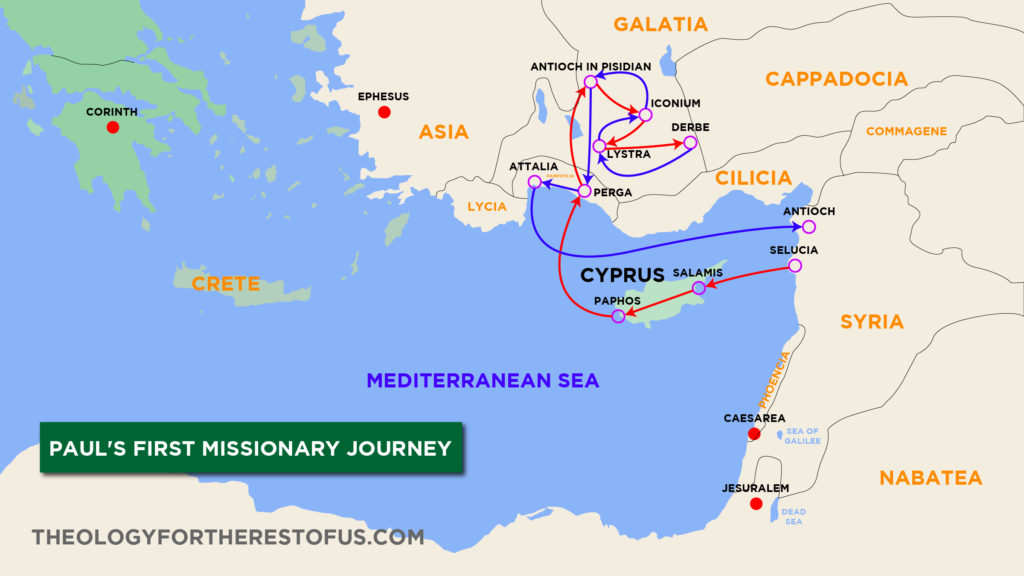
Barnabas and Saul sensed the call of the Holy Spirit to go out on their first missionary journey (Acts 13-14). Sometime around 46 A.D. (or 47 A.D.), Barnabas and Saul were set apart by the Holy Spirit and sent out on their first missionary journey by the church at Antioch.
Before Barnabas and Saul officially left on their first missionary journey, they recruited a young man named John Mark to go with them. John Mark was the son of a woman named Mary (mentioned in Acts 12:12). She owned the house where the Christians had been meeting and praying when Peter was miraculously delivered from jail by the angel.
It is likely that, as a young boy, John Mark had witnessed Jesus’ ministry first-hand. Sadly, however, during the missionary journey, John Mark would eventually abandon Barnabas and Saul. This would later lead to a significant dispute between Barnabas and Saul a few years in the future.
Barnabas and Saul sailed from Seleucia to the island of Cyprus, apx. 100 miles off the coast of Syria. They began by preaching to Jewish people in the synagogues of Salamis. The crew did ministry in several parts of the island until they got to Paphos (Acts 13:4-6).
During their ministry they faced significant opposition. One of their earliest opponents was a magician who was a Jewish false prophet. Saul performed a supernatural act that blinded this false prophet. These events led to the conversion of the Roman proconsul Sergius Paulus (Acts 13:6-12).
Saul Becomes Paul
After the events in Cyprus, the author of the book of Acts, Luke, begins to refer to Saul as Paul. Some Christians have asserted that Saul changed his name. However, it’s more likely that Saul and Paul were two different names for the same person all along; he was known by both names for many years.
After launching a Gentile-focused ministry, Paul would have been interacting with many Gentiles, and they would have likely preferred to refer to him by the Gentile name. It appears Luke sought to make this a point of emphasis. Scholar Greg Lanier says :
“When Saul Paul launches his Gentile-focused ministry among primarily Greek-speakers (beginning with Acts 13:9), it’s natural for Luke, the author of Acts, to begin referring exclusively to him by his Greek name. Nor is it surprising that he’s later referred to as ‘Paul’ in Jerusalem, since there were Greek speakers there too. Indeed, Luke could be making a thematic point by shifting from Saul to Paul around chapter 13, given the broader theme of Acts (e.g., 1:8). After all, the church’s nucleus is shifting from predominantly Jewish-centered Jerusalem to the Greek-centered ‘ends of the earth,’ such as Rome.”
Pamphylia and Galatia
Barnabas, Paul, and John Mark then traveled across the Mediterranean Sea to Perga in Pamphylia. This is where John Mark deserts Paul and Barnabas and heads back to Jerusalem (Acts 13:13).
From Perga, Paul and Barnabas then continued northward into the province of Galatia, coming to the city of Antioch in Pisidia (not to be confused with their home base city of Antioch in Syria).
Archaeologists have discovered an inscription containing the name ‘Sergius Paulus’ in the city of Antioch in Pisidia (he was the Roman proconsul that became a Christian back on the island of Cyprus). This is strong evidence that Sergius Paulus had family roots in Antioch in Pisidia. Some scholars have argued that he was the person that probably encouraged Barnabas and Paul to travel up to Antioch in Pisidia.
Once they arrived in Antioch in Pisidia, Paul went to the synagogue and preached about the good news of Jesus. Paul effectively preached in the synagogue for multiple weeks. This resulted in many people coming to faith in Jesus (Acts 13:14-44).
Unfortunately, Barnabas and Paul faced significant opposition there too. Part of the problem they faced was the jealousy of certain Jews. There were many Gentiles showing up to hear the gospel preached. Some Jews became jealous and started to contradict what Paul had to say. Since the Gentiles were more willing to hear what Paul had to say, he turned and preached to the Gentiles.
And when the Gentiles heard this, they began rejoicing and glorifying the word of the Lord, and as many as were appointed to eternal life believed. —Acts 13:48
The Gentiles’ response to the gospel was positive. The gospel continued to spread amongst Gentiles, but yet again the jealousy of the Jews became a significant issue. The Jews eventually drove Barnabas and Paul out of Antioch.
After leaving Antioch in Pisidia, they traveled eastward, further into the Galatian region, arriving at the city of Iconium. There they preached and did miracles in the name of Jesus.
Very similar to what had happened in Antioch, Paul went into the synagogue in Iconium to teach and the result was that many Jews and Greeks believed in Jesus, but the unbelieving Jews there stirred up trouble against Paul, dividing the city (Acts 14:1-4). Barnabas and Paul left the city when they heard about attempts to stone them (Acts 14:5).
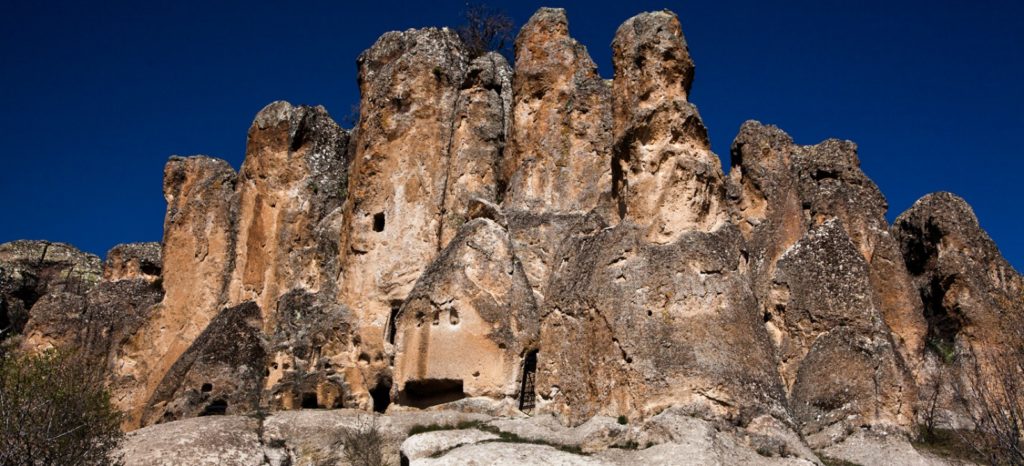
Lystra and Derbe
They then came to Lystra. There Paul performed a miracle causing a crippled man to walk again. When this occurred the people of the area assumed Barnabas and Paul were gods. The priest of Zeus brought animals to offer as sacrifices to Barnabas and Paul. When Barnabas and Paul realized what was happening, they tore their clothes in lament and told the people of the one true God (Acts 14:8-18).
The Jewish unbelievers from Antioch and Iconium had come to Lystra too, stirring up trouble. They convinced the people of Lystra to stone Paul and left him for dead outside the city. But Paul wasn’t dead. He got up walked back into the city (Acts 14:19-20).
The book of Acts doesn’t give us details about the events of that day when Paul walked back into the city, but I imagine the city’s residents were shocked. It was quite rare for anyone to survive stoning.
Barnabas and Paul then continued onto Derbe the next day. They preached and “won a large number of disciples” (Acts 14:21). Archeologists have discovered several inscriptions that show the Christian faith was a major presence in the city of Derbe after Barnabas and Paul’s visit.
Facing Tribulations for the Sake of Discipleship
Barnabas and Paul began their trek back home, but they decided that they’d first travel back through Galatia. When you look at a map, you see that it would have been much faster (and likely easier) to travel from Derbe directly to Antioch in Syria.
Derbe is less than 260 miles away from Antioch in Syria and less than 140 miles away from Paul’s original hometown of Tarsus. Barnabas and Paul could have traveled eastward through the region of Cilicia. Paul was very familiar with Cilicia and likely had friends throughout the region that could give them safe refuge along the way.
But Barnabas and Paul intentionally traveled more than 280 miles in the opposite direction of Antioch in Syria. Even though they had suffered great persecution in Galatia, they wanted to go back through the Galatian cities, before heading home, because they wanted to strengthen the disciples in those cities.
They returned to Lystra and to Iconium and to Antioch, strengthening the souls of the disciples, encouraging them to continue in the faith, and saying that through many tribulations we must enter the kingdom of God. —Acts 14:21-22
The journey through these cities for a second time gave them the opportunity to teach doctrine, establish elders in the churches, and pray with the believers.
After this, Barnabas and Paul then continued back down to Perga in Pamphylia. They preached in that region for a time. They eventually made their way over to the nearby port city of Attalia and sailed from there to Antioch in Syria (Acts 14:24-28).
Return to Antioch
Barnabas and Paul returned back home to Antioch in Syria stay there after the trip for “a long time” (Acts 14:28).
They had traveled more than 800 miles. Their first missionary journey had probably lasted between one and two years. When Barnabas and Paul arrived back in Antioch in Syria, they shared with everyone about the many people who had come to faith in Jesus and the churches that were established.
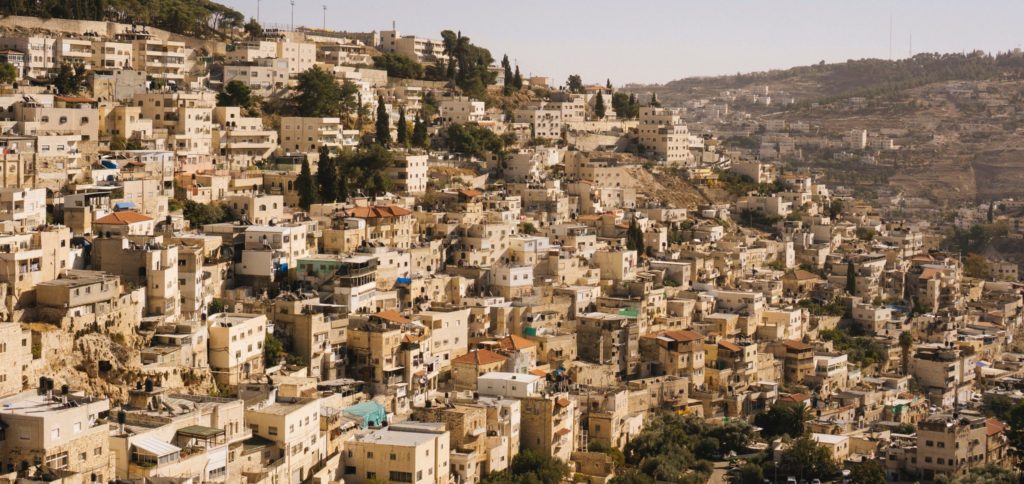
Jerusalem Council
After returning, Barnabas and Paul learned about a particular faction from Judea that had been confusing many Christians in the region by preaching a false gospel. This group had been preaching that, in order to become a Christian, the Gentiles must follow the Old Testament law, including circumcision (Acts 15:1).
Barnabas and Paul seem to have spent significant time disputing this false message and debated the Judean faction.
Eventually, this debate, about this false gospel, was appealed to the apostles in Jerusalem (Acts 15:2). This led to the Jerusalem Council (Acts 15:3-35), which likely took place sometime in 50 A.D. (some scholars date this event as early as 48 A.D. and some date it as late as 51 A.D.).
While traveling to Jerusalem for the council, Barnabas and Paul made stops along the way throughout Phoenicia and Samaria, encouraging believers wherever they went.
At the council, all the apostles concluded that the Gentiles do not need to follow the Jewish laws in order to become Christians. Barnabas and Paul (as well as several other men who had been at the council) headed back to Antioch to declare the good news. After the council they stayed in Antioch “some days” (Acts 15:36).
Paul and Barnabas Separate
Not long after the Jerusalem Council, Barnabas and Paul began planning their second missionary journey. They believed it was essential that they go to the Gentile world to proclaim the statements that came from the council.
Originally, Barnabas and Paul had intended to go out together again, however, they had a “sharp disagreement” (Acts 15:39). The source of this dispute was John Mark. Barnabas wanted John Mark to come along again, but Paul was against this idea since John Mark had deserted them on their previous missionary trip when they were in Pamphylia. Paul saw John Mark as a liability.
Due to this sharp disagreement, Barnabas and Paul would go on separate missionary journeys. Barnabas took John Mark and sailed to Cyprus. Paul took a young man named Silas and traveled by land (Acts 15:39-41).
Paul’s Second Missionary Journey
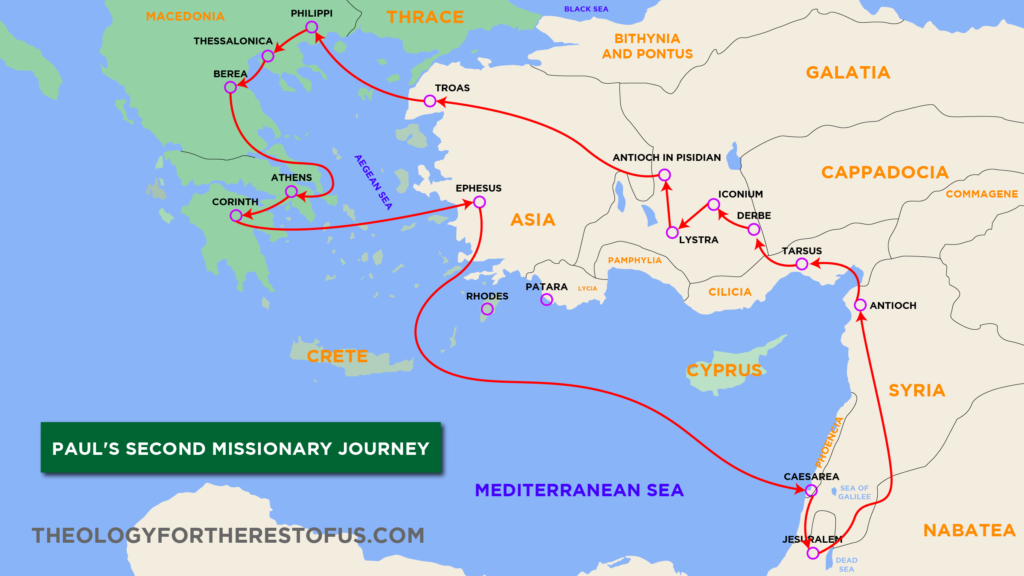
Paul likely started his second missionary journey (Acts 15-18) sometime late in 50 A.D. or early in 51 A.D. (but some scholars date both the council of Jerusalem and the launch of this missionary journey as early as 48 A.D.).
Paul and Silas started by traveling northwestward by land through the region of Cilicia. The Roman road that they would have used went directly through Paul’s hometown of Tarsus. I imagine this would have given Paul the sweet opportunity to reconnect with many old friends.
Paul and Silas made stops in the churches all throughout the region, along their way, “strengthening” believers (Acts 15:41).
Return through Galatia
Paul and Silas continued their travels westward into Galatia. They spent significant time in several Galatian cities including Derbe, Lystra, and Iconium, connecting with the churches that Paul had planted with Barnabas on this first missionary journey.
Paul and Silas taught the believers throughout Galatia what had been decided at the council in Jerusalem and the “churches were strengthened in the faith, and they increased in numbers daily” (Acts 16:5).
Paul Circumcises Timothy
Along the way, Paul and Silas meet a young man named Timothy from that region. He had a good reputation. Paul decided to let Timothy accompany them. However, Paul first circumcised Timothy (Acts 16:3).
It seems that Paul knew that having an uncircumcised man like Timothy with him could somehow impede the advance of the gospel wherever they preached.
Paul intended to continue to preach that circumcision was not necessary for salvation. But Paul knew that Timothy’s presence could potentially cause their opponents to claim that the only real reason that Paul was making these claims is because he had an uncircumcised friend (Timothy).
Paul’s Ministry Restricted
Paul and his crew traveled throughout the “region of Phrygia and Galatia” (Acts 16:6) looking for opportunities to preach the gospel in Asia (modern-day southwest Turkey), but they were restricted from doing so multiple times. They then traveled to the region of Mysia (modern-day northwest Turkey), attempting to eventually make their way northward toward Bithynia, but multiple times they were restricted or diverted by the Spirit (Acts 16:7).
It seemed that God’s providence was leading them somewhere other than what Paul had originally intended. They passed through Mysia again and eventually ended up in the city of Troas near the cost of the Aegean Sea.
Luke Joins the Team
In Troas, Luke joins their missionary crew. The book of Acts does not explicitly state this, but it’s implied. Throughout most of the book of Acts, Luke speaks in the third person. However, starting in Acts 16:10, Luke begins to speak in first person, as if he had joined the team by that point.
Luke would become one of Paul’s ministry protégés. He was a Greek physician, but he also functioned as an investigative journalist. He eventually writes both the Gospel of Luke and the book of Acts. Some scholars have also suggested that Luke wrote the book of Hebrews.
Macedonian Call and Travel to Philippi
While at Troas, Paul received a vision. This vision was of a Macedonian man asking for Paul to come and help them (Acts 16:9-10). After receiving this vision they sailed across the Aegean Sea to the island of Samothrace, and then onto Neapolis (modern-day northeastern Greece).
The missionary crew then traveled to Philippi where they stayed for “some days” (Acts 16:12). While there, they preached the gospel. One specific woman they met was Lydia. She became a believer along with the rest of her household and invited Paul and his companions to stay (Acts 16:13-15).
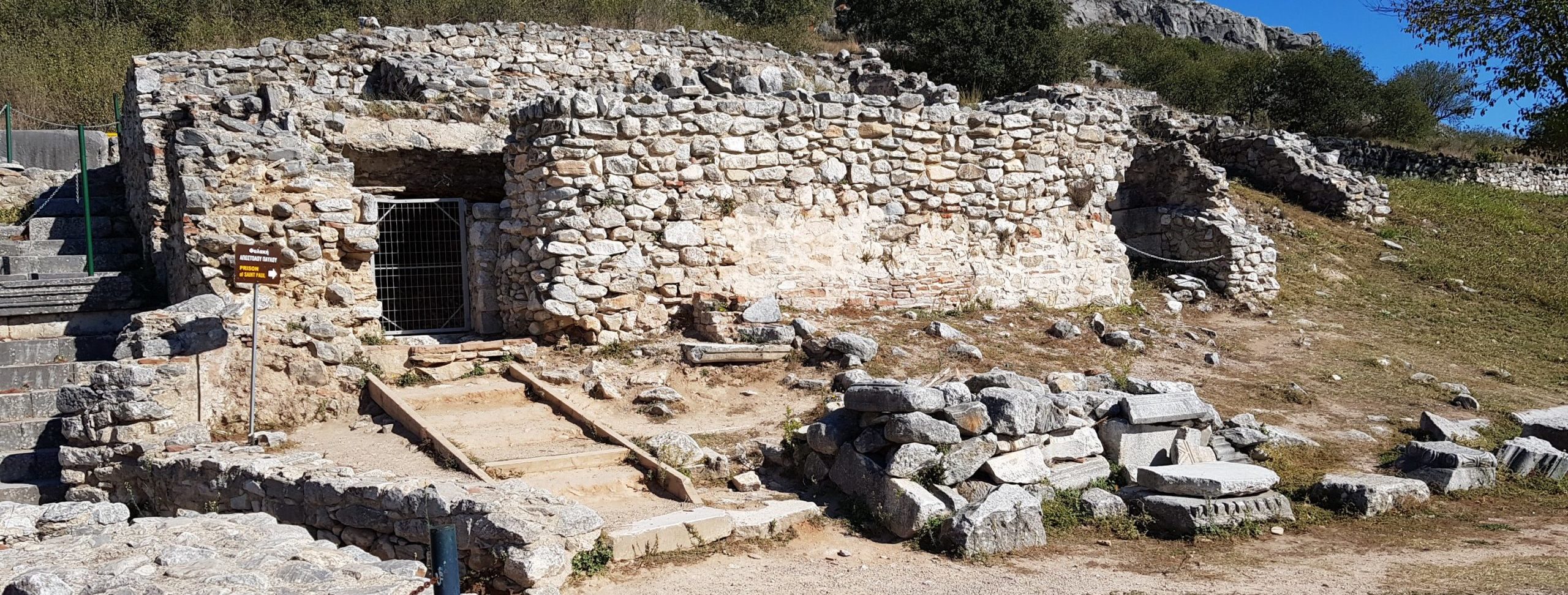
Paul and Silas Jailed in Philippi
While in Philippi, Paul and Silas met a slave girl who was demon possessed. Her owners made money off of her because the demon gave her the ability to function as a fortune-teller. For several days she followed Paul and Silas around, declaring that Paul and Silas were preachers of the one true God (Acts 16:16-18).
Paul cast the demon out of her. The girl’s owners realized that they wouldn’t make any more money from her, because she could no longer function as a fortune-teller. They were angry so they took Paul and Silas to the magistrates. Paul and Silas were beaten with rods and thrown into jail. Paul had previously been beaten and persecuted, but this marked the first time he was officially imprisoned (Acts 16:18-24).
While in prison, Paul and Silas prayed and sung hymns to the Lord. As they sang and prayed many of the other prisoners listened. Late in the night an earthquake occurred, this earthquake not only opened all the doors but broke their chains.
The jailer believed that all the prisoners had escaped and was about to kill himself (the Romans would’ve blamed the guard and likely would’ve executed him). But Paul and Silas stopped him and told him that no one had escaped. Then the jailer responded asking how to be saved.
And they said, “Believe in the Lord Jesus, and you will be saved, you and your household.” —Acts 16:31
God turned the persecution into an opportunity for gospel proclamation. Paul and Silas were not only able to witness to the jailer but all the prisoners listening to their hymns and prayers throughout the night. Paul went to the jailers home to preach and several people came to faith (Acts 16:25-34).
When the town magistrates learned that Paul and Silas were Roman citizens, the magistrates apologized for having unlawfully imprisoned them. This was a public vindication (of sorts) for Paul and Silas. Before leaving, Paul and Silas spent more time with Lydia and the other new converts in the region, encouraging them in the faith (Acts 16:35-40).
Thessalonica
Next, Paul and his crew passed through Amphipolis and Apponia and came to Thessalonica (Acts 17:1). As was his habit, Paul first went to the synagogue to preach to the Jews. He preached there on three consecutive Sabbath days. Many people believed, including many Gentiles.
Yet again, as Paul had seen before, many Jews became angry and jealous, and they caused an uproar. One of the brothers that had welcomed Paul was a man named Jason. The Jews dragged Jason before the city’s leaders. Jason was eventually released.
Paul and Silas left the city. It does seem that the church in Thessalonica continued to face persecution and trouble from their countrymen, but they flourished anyway. We read these words in Paul’s letter to the church:
For you, brothers, became imitators of the churches of God in Christ Jesus that are in Judea. For you suffered the same things from your own countrymen as they did from the Jews. —1 Thess. 2:14
Paul and his crew went to Berea. There, Paul yet again started in the Jewish synagogue, but this time he got a different response. Instead of jealousy and mobs, the Jews there examined the Scriptures to see if what Paul was saying was true. Many believed in Jesus.
Paul praised their willingness to study and pursue truth. Luke says the Jews of Berea were “more noble” than the Jews of Thessalonica (Acts 17:11).
Things seem to be going well. Many people became Christians. But the Jews from Thessalonica heard that Paul was teaching in Berea and they came to stir up the crowds and trouble. Paul was sent away by the brothers there, but Silas and Timothy stayed behind (Acts 17:13-14).
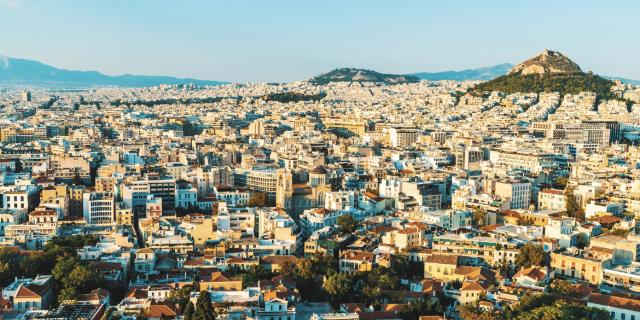
Traveling in Achaia
The apostle Paul was then escorted by some brothers more than 300 miles south, into the region of Achaia, reaching the city of Athens. When they arrived in Athens, the brothers headed back. Paul stayed in Athens, but told the brothers to tell Silas and Timothy that he wanted them to join him as soon as possible (Acts 17:15).
While Paul waited for Silas and Timothy, Paul’s “spirit was provoked within him” (Acts 17:16) because he saw an abundance of idols in the region.
Paul decided to make the best use of his time and talked with the Jews at the synagogue and preached to many Gentiles in the marketplace (Acts 17:17). Paul also talked with Epicurean and Stoic philosophers (Acts 17:18). They eventually brought Paul to the Areopagus, the court where men discussed philosophy, civics, and religion.
In the court of the Areopagus, Paul preached one of his most famous sermon (Acts 17:22-31). Paul’s sermons included quotes from famous Greek philosophers that they would have been familiar with. This gives us insights into Paul’s knowledge of their culture and insights into Paul’s missiology.
After hearing Paul’s sermon, there were some there who laughed at him, but there were also some who believed the gospel and joined Paul (Acts 17:32-34).
First Visit to Corinth
After leaving Athens, Paul traveled 53 miles southwest to Corinth. By this point in his second missionary journey, Paul had traveled more than 1,500 miles.
The apostle Paul probably arrived in Corinth apx. 8-12 months after the start of the second missionary journey, therefore, it’s likely that he got there sometime late in the year of 51 A.D. (or maybe sometime early in 52 A.D., depending on how we date his departure from Antioch in Syria). Paul stayed in Corinth for a year and a half (Acts 18:11), so Paul was likely in Corinth until the summer or fall of 53 A.D.
Silas and Timothy also rejoined Paul in Corinth.
While in Corinth, Paul met two Jews from Rome, Aquila and Priscilla. Like the apostle Paul, Aquila and Priscilla were also tentmakers. Paul stayed with them and worked while also going to the synagogues on the Sabbath to preach, seeking to convert both Jews and Greeks (Acts 18:1-4).
Paul faced some opposition from Jews in Corinth (Acts 18:5-9), but many people in the city believed anyway. Paul may have been considering leaving the city, but he stayed in Corinth after having received a vision from God that told him that “no one will attack or harm you” (Acts 18:10).
While in Corinth the apostle Paul wrote his letters to the Thessalonians, encouraging the new believers there to stand firm under the pressure and pain of persecution. He gives them instructions on how to live a godly lifestyle and gives doctrinal teaching about the future second coming of Christ.
Paul continued to preach the word of God faithfully for those 18 months. Many were saved and the church was established. But many Jews were upset.
The Jews of Corinth eventually tried to bring the apostle Paul before the Roman proconsul Gallio, who happened to be the older brother of the renowned dramatist and philosopher Seneca (the tutor of Emperor Nero). Gallio refused to even hear their case against Paul and sent them away (Acts 18:12-17).
Paul stayed in Corinth for “many days longer” (Acts 18:18) after being brought before Gallio. He then started his journey back home to Antioch in Syria, but planned to first make a stop in Ephesus. Priscilla and Aquila came with him.
Leaving from Cenchreae
Paul’s crew traveled to the nearby port city of Cenchreae, just eight miles from Corinth. We don’t know how long they stayed in Cenchreae, but they were there long enough for Paul to have his head shaved as part of a vow (Acts 18:18). It’s possible that this stop was very brief, but it’s also possible that they spent some time preaching and ministering there in the city.
There does seem to be some evidence that Paul spent some significant time in Cenchreae. But we cannot be certain. Also, we’re not sure if he spent time there during this second missionary journey or if that happened at a later time during his third missionary journey.
Brief Visit to Ephesus
When Paul arrived in Ephesus, he went into the synagogue to talk with the Jews about Jesus. His visit to Ephesus was brief. They requested that he stay in the city longer. He declined but said, “I will return to you if God wills” (Acts 18:21). Paul made plans to leave, but Priscilla and Aquila stayed in the city.
Paul traveled from Ephesus to Caesarea. Once he was there he visited with the believers in the region and preached the gospel in various towns and places. He briefly visited Jerusalem and then traveled back home to Antioch in Syria.
Paul’s second missionary journey lasted between two and a half years and three years, and likely ended back in Antioch sometime in the fall of 53 A.D. (or maybe early 54 A.D.).
Paul’s Third Missionary Journey
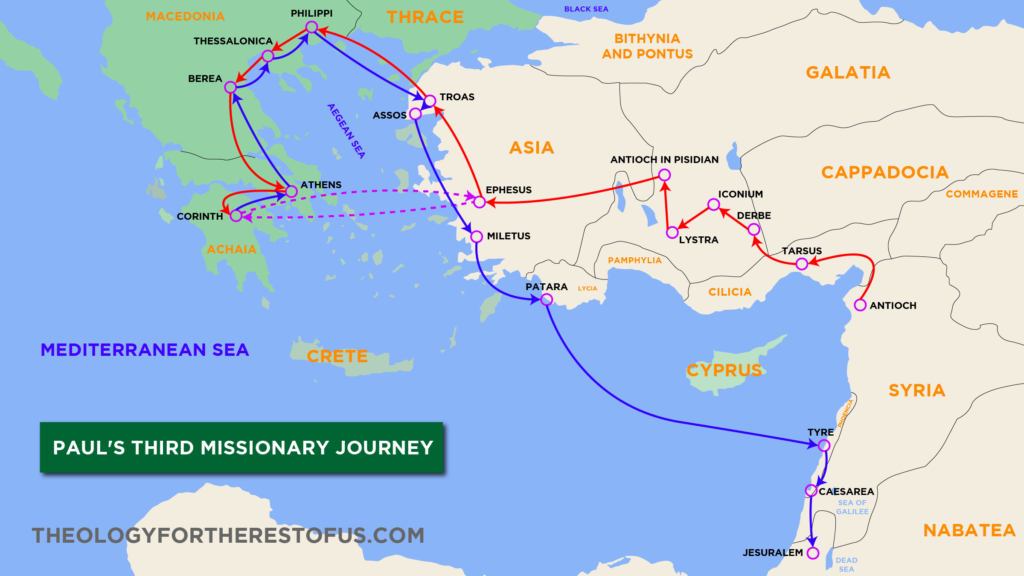
After getting back from his second missionary journey, the apostle Paul stayed Antioch for “some time” (Acts 18:23). Maybe just a few weeks or few months. He then launched his third missionary journey (Acts 18-21).
Paul likely left for his third missionary journey in the spring of 54 A.D. This third missionary journey was probably more than four years long and ended with Paul in Jerusalem in 58 A.D.
Galatia and Phrygia
Paul began his third missionary trip by visiting many of the same locations that he had visited on his first and second missionary journeys. We don’t know his exact route, but it’s likely he began by traveling through the region of Cilicia and through the city of Tarsus, on the way toward Galatia.
He spent several months traveling to the churches throughout the regions of Galatia and Phrygia, “strengthening all the disciples” (18:23). Paul passed through the “inland” route through Asia and traveled west to Ephesus (Acts 19:1).
Three Years in Ephesus
Paul spent three labor-intensive years in Ephesus (Acts 20:31). Paul was likely in Ephesus from the fall of 54 A.D. to the fall of 57 A.D.
Paul’s time in Ephesus was hard. He later says that he experienced many “afflictions” and he wasn’t confident that he would live through this season (2 Cor. 1:6-10). But God did many great things through Paul while he was in Ephesus.
For the first few months of Paul’s ministry in Ephesus, he spent time preaching in the synagogue. That was his focus. However there were many Jews stuck in unbelief, and they said evil things about Paul and the gospel message. So Paul decided to spend the last two and half years of his time in Ephesus preaching in the hall of Tyrannus, instead of the synagogue. He preached in the hall of Tyrannus daily and “all residents of Asia heard the word of the Lord” (Acts 19:10).
During Paul’s ministry, he performed many miracles in the name of Jesus, leading many to believe.
“God was doing extraordinary miracles by the hands of Paul… even handkerchiefs or aprons that had touched [Paul’s] skin were carried away to the sick, and their diseases left them and the evil spirits came out of them.” —Acts 19:11-12
God-Fearers Received the Holy Spirit
One of the most famous events from Paul’s time in Ephesus was when he corresponded with a group of disciples that had known about John’s baptism (referring to John the Baptist), but they did not know about Jesus (Acts 19:1-3). These types of believers were sometimes referred to as God-fearers.
These God-fearers had previously been taught by a great preacher named Apollos. He had taught them to revere the one true God, the God of Israel. But Apollos himself had not known about Jesus until after he had preached to this particular group of disciples. Apollos was later instructed by Paul’s friends, Priscilla and Aquila (Acts 18:24-28).
Paul taught this particular group about Jesus. They believed and received the Holy Spirit (Acts 19:4-7).
The Sons of Sceva
Another event that the book of Acts highlights, from Paul’s time in Ephesus, is about seven traveling Jewish exorcists, the sons of Sceva. These exorcists came across a demon-possessed man. They attempted to cast-out the demons (Acts 19:11-14). But one of the demons responded to them, “Jesus I know, and Paul I recognize, but who are you?” (Acts 19:15).
The demon-possessed man (under the control of the evil spirits) attacked the seven men and badly beat them (Acts 19:16). This caused many people in the region to respect Paul and his ministry. Many of the magicians in the area repented and burned their magic books (Acts 19:17-19) and “the word of the Lord continued to increase in the region” (Acts 19:20).
Demetrius, Riots, and Leaving Ephesus
Paul was planning to leave Ephesus. However, before he left Ephesus, a silversmith named Demetrius caused trouble. Demetrius made and sold idols. Paul preached against idolatry, so many people stopped buying Demetrius’ idols. This cost him money. Demetrius clearly was not happy.
There were other business owners that were also hurt financially because of Paul’s preaching. Many people had stopped buying their idols as they responded to the gospel. When these merchants got together, they started a massive riot in the city.
Paul wanted to go into the crowd to calm them down, but the disciples would not let him because they knew that Paul could get killed. Some of the Christians went into crowd and calmed the riot. Shortly after these riots, Paul set sail for Macedonia (Acts 19:21-20:1).

The “Painful” Visit
Paul had made plans to travel through Macedonia and then southward into Achaia (1 Cor. 16), which would likely include a visit to the church in Corinth.
At some point, Paul received some correspondence telling him that there were massive problems in the church of Corinth. How did Paul respond when he received this news? There are two main views from scholars.
View #1: Paul immediately changed plans and left from Ephesus to Corinth.
Some scholars argue that as soon as Paul received word that there were big problems in Corinth, Paul changed his plans and decided to visit the Corinthians immediately, skipping his original plans to travel through Macedonia.
Paul probably thought that once he was there in Corinth, that he’d be able to resolve the conflicts. But it seems that the exact opposite happened. Paul would later describe this visit as “painful” (2 Cor. 2:1). During this “painful” visit Paul was deeply hurt by someone in the church (2 Cor. 2:5).
The scholars that embrace View #1 say that Paul then left Corinth after this “painful visit” and headed back to Ephesus for a brief period of time.
It then appears that Paul was contemplating returning to Corinth, yet again, before heading over to Macedonia, but Paul ultimately decided against this additional visit, in order to “spare” the Corinthians (2 Cor. 1:23). Paul defends this decision in 2 Corinthians (vv. 1:12-2:2).
Paul then left from Ephesus to Macedonia (Acts 20:1). However, Paul would eventually make a third visit back to Corinth a few months later toward the end of this journey.
These scholars typically piece it all together like this:
- Paul (while in Ephesus) receives news of trouble in the church of Corinth and changes his plans
- Travels from Ephesus to Corinth for a second visit (known as the “painful” visit)
- Travels from Corinth back to Ephesus
- Contemplates another visit to Corinth, but decides against it
- Experiences the Demetrius-led riots in Ephesus
- Travels onto to Macedonia
- Goes from Macedonia down into Greece
- Eventually makes it back to Corinth (third overall visit)
Scholars that hold to View #1 assert that Paul ultimately made three total visits to Corinth; his first visit (the 18 months he spent there during his second missionary journey), the “painful” visit from Ephesus, and then a third visit toward the end of this third missionary journey.
View #2: Paul did not change his plans, but visited Corinth later.
Scholars that hold to View #2 say that Paul likely received some communication from Corinth (that there were indeed big problems in the church), but these scholars conclude that receiving this communication did not cause Paul to visit Corinth immediately.
The scholars that embrace View #2 argue that Paul did consider changing his plans, which would have consisted of a visit to Corinth before going through Macedonia, but these scholars argue that ultimately Paul decided against going to Corinth immediately, so he stuck to his plans to travel through Macedonia. They interpret Paul’s words in 2 Corinthians (vv. 1:12-2:2) as Paul giving a defense as to why he did not visit them.
These scholars say that eventually Paul did visit Corinth, a few months later, toward the end of his third missionary journey. Scholars that embrace View #2 often say that the word “painful” (2 Cor. 2:1) was not a description of an actual visit that ever happened, but that it was a description of the type of visit that would have ensued if Paul had indeed visited them. He knew that if he did visit, it would have been painful, so he sought to “spare” them (2 Cor. 1:23).
- Paul (while in Ephesus) receives news of trouble in the church of Corinth
- Contemplates an immediate visit to Corinth, but ultimately decides against it
- Goes from Ephesus to Macedonia
- Eventually travels to Corinth for his second visit
Scholars that hold to View #2 assert that Paul ultimately made two total visits to Corinth; his first visit (the 18 months he spent there during his second missionary journey) and then his visit to Corinth toward the end of this third missionary journey.
Leaving For Macedonia and the Sorrowful Letter
Paul leaves Ephesus and heads toward Macedonia. In the book of Acts, Luke gives us no details. He only says that Paul “departed for Macedonia” (Acts 20:1). However, by examining Paul’s letters, we get more insight into these travels.
It appears that, at some point during this journey, Paul had sent Titus to Corinth with a letter (this is sometimes referred to as the “sorrowful letter”). Paul later describes this “sorrowful” letter as having been written with “much affliction and anguish of heart and with many tears” (2 Cor. 2:4).
Some scholars contend that this “sorrowful letter” is the epistle that appears in the New Testament, that we know today as 1 Corinthians. Other scholars argue that the “sorrowful letter” is a separate correspondence that has been lost to history.
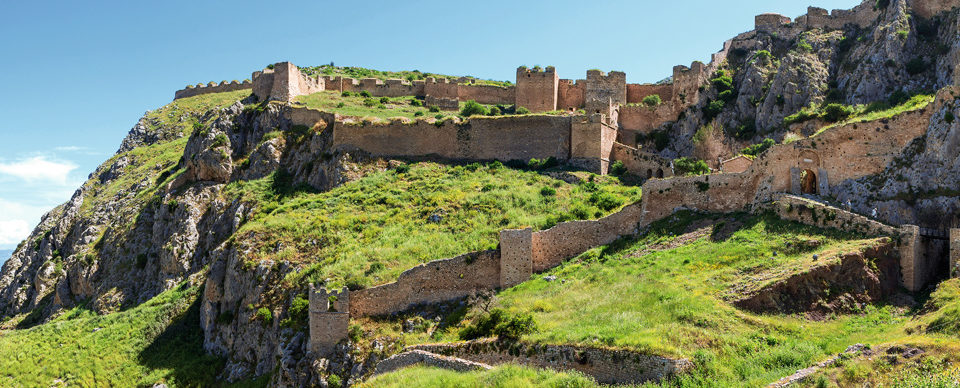
Ministry in Troas and Macedonia
On the way to Macedonia, Paul stopped in Troas to preach there and to await Titus’ return from Corinth. While waiting in Troas, Paul had great ministry opportunity. He called it an “open door” (2 Cor. 2:12).
However, when Titus’ return from Corinth appeared to be delayed, Paul was concerned for Titus’ safety. Paul decided to leave Troas and traveled to Macedonia to find Titus (2 Cor. 2:13).
Paul traveled throughout Macedonia, visiting the churches and friends in the region, and encouraging the believers in those churches (Acts 20:2).
Finally, while in Macedonia, Paul was reunited with Titus. Titus reported that many people in the church of Corinth had repented after hearing Paul’s letter (2 Cor. 2:5-11; 7:5-16). Paul was filled with joy.
However, Titus also reported that Paul’s opponents still wielded some influence over a small rebellious faction within the church questioning Paul’s authority and credibility. Paul responded to this faction by writing another letter (most likely from Philippi). This letter is in our New Testament, known today as 2 Corinthians.
Three Months in Greece
After these travels through Macedonia, the apostle Paul eventually traveled southward and finally arrived in Greece (i.e., Achaia). He stayed in the region for three months (Acts 20:2-3), including a lengthy stay in Corinth. This stay likely took place in late 57 A.D. or early 58 A.D.
While in Corinth, Paul wrote his theological masterpiece, the letter to the Romans.
As previously discussed in this article, some scholars believe that this was Paul’s second visit while others argue that this was his third visit.
Cenchreae and Phoebe
It’s also possible that during these three months in Achaia, Paul spent time in the nearby city of Cenchreae. In the book of Romans, Paul mentions Phoebe, a deaconess in the church of Cenchreae (Rom. 16:1).
Phoebe was the person that delivered Paul’s letter to the Romans, and Paul asked them to welcome her, praising her for being a “patron of many” (Rom. 16:2). It’s highly unlikely that Paul would have asked her to make this important delivery for him unless he knew her well and trusted her, pointing to the likelihood that Paul had spent time in Cenchreae before writing that letter.
As previously mentioned in this article, it’s also possible that Paul had spent some time in Cenchrea during his second missionary journey as well as this third missionary journey.
One More Lap Through Macedonia
After his time in Achaia, Paul had originally intended to sail directly to Jerusalem. Those plans were changed, however, when it was discovered that some of Paul’s opponents had been plotted against him. Paul decided to take another lap through Macedonia instead (Acts 20:3).
Paul had many companions with him, from various churches, which gave him protection while he traveled through Macedonia (Acts 20:4-5).
Throughout the spring of 58 A.D., Paul traveled through the Macedonian region, visiting towns such as Berea and Thessalonica, and eventually ending up in Philippi (again) during the “days of unleavened bread” (Acts 20:6).
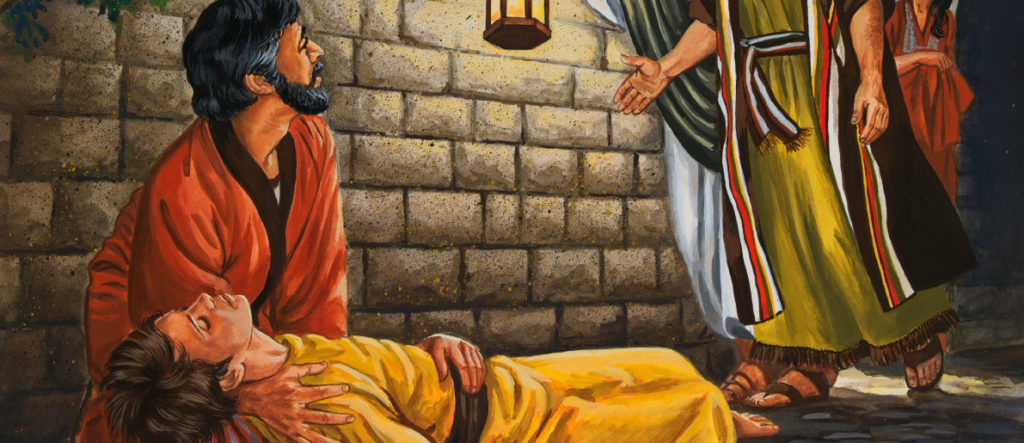
Eutychus Raises from the Dead at Troas
Paul and his companions then traveled to Troas (Acts 20:5). He ministered there again for a week. It was in Troas that a young man, Eutychus, was listening to one of Paul’s sermons and fell three stories out a window. When they found him he was dead on the ground, but Paul supernaturally restored life to this man (Acts 20:6-12).
After Troas, Paul’s companions went by ship to Assos, but Paul went by foot. Luke doesn’t tell us precisely why Paul did this. But what we do know is that distance from Troas to Assos was more than 30 miles through dangerous and mountainous terrain.
After meeting with his companions in Assos, they began their trek to Jerusalem. They made briefs stops in Chios and Samos, before arriving in Miletus (Acts 20:15).
Goodbye to the Ephesian Elders
It would make sense that Paul would have wanted to stop in Ephesus before heading to Jerusalem. considering the dear friends he had there, but he intentionally passed Ephesus because he wanted to be in Jerusalem by Pentecost, and he knew that traveling through Ephesus, and staying in Asia, would take much more time than he desired. In addition, he knew visiting Ephesus again could cause an uproar (Acts 20:13-16).
However, Paul did want to see his Ephesian friends and ministry partners, so when he arrived in Miletus, Paul called the elders from Ephesus to meet him there (Acts 20:17). In Miletus he encouraged the elders and commended them, letting them know that he would not be seeing them again since he knew that imprisonment and maybe death waited for him in Jerusalem. This was, no doubt, an emotional moment for Paul and his friends.
Paul had spent several years laboring with these men in ministry, and now he was saying goodbye for, what appeared to be, the last time. They wept and prayed together (Acts 20:17-38).
Sailing for Syria
From there, the apostle Paul and his companions then sailed towards Syria. They made brief stops in Cos, Rhodes, and Patara, before finally coming to Syria, landing at Tyre (Acts 21:1-3). Paul and his companions spent seven days with the disciples in Tyre. Through “the Spirit” they told Paul not to go onto Jerusalem, but Paul sensed that Jerusalem was the right place to go (Acts 21:4).
Then Paul and his companions went to Ptolemais (Acts 21:7), spending one day with the believers there, before heading onto Caesarea. There they were greeted by the believers there and they stayed with Philip the evangelist (Acts 21:8). While they were there, a prophet named Agabus came down from Judea and told Paul of the coming affliction he would face in Jerusalem (Acts 21:10-12).
Despite many people again urging Paul not to go to Jerusalem, Paul told them he knew what was instore and that he was ready to die.
Then Paul answered, ‘What are you doing, weeping and breaking my heart? For I am ready not only to be imprisoned but even to die in Jerusalem for the name of the Lord Jesus.’ —Acts 21:13
Paul and his companions then traveled to Jerusalem and was greeted by his brothers in Christ who lived there. He told the church there all God had been doing among the Gentiles (Acts 21:14-16). Once there, Paul visited with James and all the elders (Acts 21:17-18). He told them about all that God had done throughout the Gentiles.
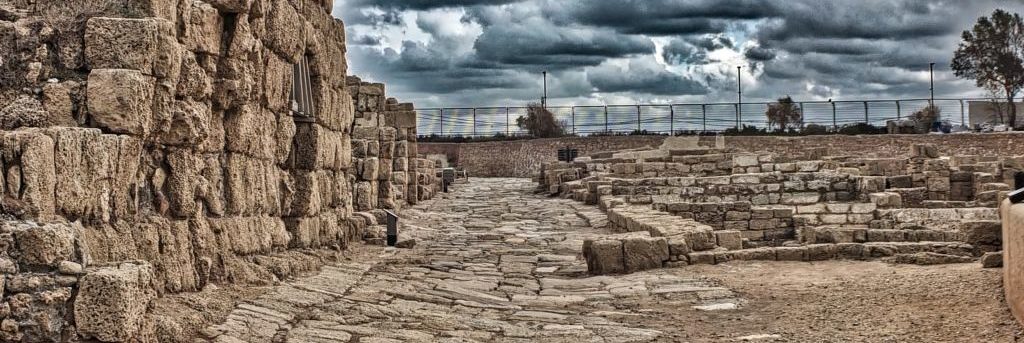
Arrested in Caesarea
While in Jerusalem, Paul went to the temple to worship and pray. While he was there, some Jews from Asia Minor stirred up trouble for Paul. They accused him of abandoning the one true God of Israel, of maligning the law of Moses, and of encouraging people to disobey the Jewish laws. Paul (obviously) denied this charge. This confrontation caused a riot in the temple. Paul was dragged out of the temple by a mob. The Romans then intervened and took Paul into custody (Acts 21:27-36).
Paul then addressed the crowd. He made it clear that he loved the law of God and that he had previously been a persecutor of Christians. But that he had become a preacher of the gospel after meeting Jesus on the road to Damascus. This caused another riot to erupt. The Romans then took Paul in their barracks. The Romans were going to flog him but Paul appeals to his own Roman citizenship (Acts 21:37-22:29).
On Trial Before Felix
Paul is taken to the Roman barracks in Caesarea. During this time the Roman governor over the region, Felix, brought Paul to trial. Ananias, the high priest, came from Jerusalem to bring charges against Paul. Felix gave Paul the opportunity to speak before the crowd. Paul shares his story and preaches truth. Felix was afraid of Paul’s message, so he doesn’t seemingly know what to do with Paul (Acts 23:23-35; 24:1-27).
Paul was imprisoned in Caesarea by the Romans for two years, but was given “some freedom” and his friends are allowed to visit him “to take care of his needs” (Acts 24:23).
On Trial Before Festus and Agrippa
When Festus became the governor of the region in 60 A.D. (or maybe earlier in 59 A.D.), he brought Paul back to trial. Some Jews came from Jerusalem again to bring charges against Paul, but they could not prove any of those charges (Acts 25:1-12).
King Herod Agrippa II visited with Festus. Festus asked him to hear Paul’s case. When Paul is called to defend himself, he gives one of his most famous defenses of the gospel and even encourages Agrippa to believe in Jesus (Acts 26:1-29). Agrippa famously responds, “Do you think that in such a short time you can persuade me to be a Christian?” (Acts 26:28). Paul says that he wants everyone to believe.
Festus calls Paul crazy (Acts 26:24), but both he and Agrippa agree that Paul had not done anything that might “deserve death or imprisonment” (Acts 26:31). Paul could have simply “been set free if he had not appealed to Caesar” (Acts 26:32). Paul had appealed to Caesar under his rights as a Roman citizen. This set into the motion the plans for Paul to be transported from Palestine to Rome to face trial in Caesar’s court.
Journey to Rome
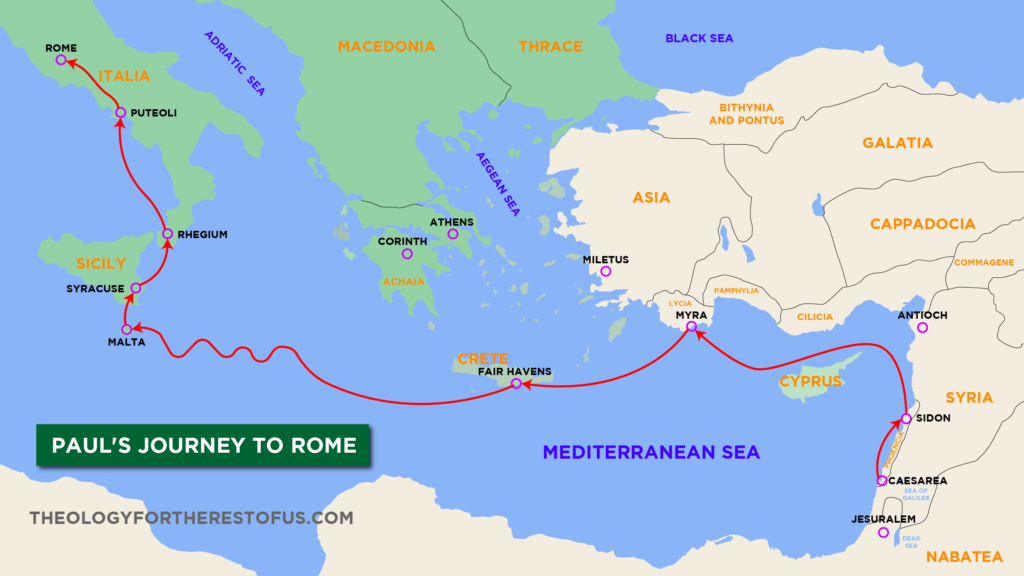
After his appeal to Rome, the apostle Paul is transported from Caesarea to Rome by ship under Roman guard (Acts 27:1-28:10). Some Bible scholars allude to this journey as Paul’s fourth missionary journey, but I don’t believe that’s the best or most accurate description for this trip.
Paul’s trip to Rome was tumultuous, filled with difficulties, including a shipwreck that caused him to be deserted on the island of Malta for three months. He also consistently faced belligerent resistance from people that opposed the gospel.
Paul and his companions eventually made it to Rome, sometime around 61 A.D. (or maybe somewhat earlier). When Paul arrived in Rome, he was placed under house arrest for two years.
Paul lived in a rented house where he served his house arrest. There he is able to visit with friends and preach the gospel to those who visit. During this time he also writes several letters that are now in the New Testament, including Philippians, Ephesians, Colossians, and Philemon.
The book of Acts ends there, with Paul under house arrest in Rome (Acts 28:11-31).
Paul’s Fourth Missionary Journey
The fourth missionary journey is not outlined in the narratives of Scripture. And there are some scholars that question whether such a journey ever really happened (we’ll cover that a bit more later in this article).
We don’t have a clear picture of what happened next in Paul’s life, after he was released from house arrest. But by carefully examining Paul’s epistles, I’m confident we can piece-it-together.
The early church father and historian Eusebius (writing in the 4th century) recorded that the most prominent church tradition had been that Paul was released from Roman house arrest and then re-arrested several years. According to this tradition, Paul’s second arrest eventually led to his martyrdom under the direction of Emperor Nero (see H.E. 2.22.6 ).
Also, Paul’s later letters (1 & 2 Timothy and Titus), commonly referred to as the Pastoral Epistles, are clearly written after the events of the book of Acts. In those letters Paul makes comments about his travels and plans. Paul is likely released from house arrest sometime around 63 A.D.
During his house arrest in Rome, Paul was clearly making plans to travel eastward. He asks Philemon to prepare a guest room for him (Philemon 22) and tells the Philippians that he intends to visit them (Phil. 2:24). Paul doesn’t strike me as the type of guy that would make plans in vain. Paul anticipated his release from house arrest.
These plans to go east make perfect sense. Paul’s habit was to go back and encourage the churches that he had previously established. That’s what he’d done on previous journeys.
Then, in 2 Timothy, written much later in life, during Paul’s second imprisonment, Paul mentions and alludes to people and moments that are connected to his post-Roman arrest ministry travels through Asia. He’s sort of looking back on past events and correspondences. Paul mentions:
- Having a significant dispute with some believers in Asia, including Phygelus and Hermogenes (2 Tim. 1:15)
- Receiving help from Onesiphorus (2 Tim. 1:18)
- Having been with Carpus at Troas (2 Tim 4:13-14)
- Being confronted by Alexander the coppersmith (2 Tim. 4:14)
- Needing to leave Trophimus in Miletus because he was ill (2 Tim 4:20)
All of these events happened after Paul’s release from Roman house arrest.
Paul says in 2 Timothy 4:20 that “Erastus remained at Corinth.” This is a clear statement that Paul had been in Corinth; he knew Erastus was there because he had first-hand knowledge, having recently visited the city.
In Titus 3:12, Paul invites Titus to join Paul in Nicopolis. Paul tells Titus that he plans on spending the winter in Nicopolis, a city in Achaia. Clearly, when Paul writes the letter to Titus he is already in Achaia or somewhere very close, hoping for Titus to meet him there.
In Paul’s letter to Titus, he alludes to having been in Crete and having left Titus in charge to help those churches flourish.
A few scholars have argued that Paul did ministry in Crete when he was shipwrecked there. Paul had been briefly shipwrecked in Crete while traveling from Caesarea to Rome, before his Roman house arrest (Acts 27).
However, Paul and the men from the shipwreck were in Crete just a short while. As we examine the events of the shipwreck, as they are described in the book of Acts, we see that Paul would not likely have had the opportunity to establish churches in the region during such a short period. Also, they didn’t travel throughout the island at all.
What seems much more likely is that Paul eventually made it back to the island of Crete, spend time preaching, establishing churches throughout the region, and that upon his departure Paul left Titus there to “complete [their] work there and appoint elders in each town” (Titus 1:5).
At the beginning of 1 Timothy Paul says “when I was going to Macedonia” (1 Timothy 1:3). When we examine this letter, we get the sense that he’s referring to events in the not-too-distant past. Seems likely Paul is referring to the moment when he had traveling to Macedonia after being released from Roman house arrest. After his time spent in Macedonia, he may have headed back to the church in Ephesus, which he asserted was his plan (1 Timothy).
Doubts about the Fourth Journey
There are clearly some comments in Paul’s letters that do not easily square with the events of the book of Acts, which means that those comments in his letters point to some missionary work that happened after Paul’s Roman house arrest.
However, a few scholars have argued that there’s significant (enough) overlap in the locations, types of events, and even the people mentioned during Paul’s first three journeys, therefore it’s hard to say for sure—they claim it’s possible that much of those things that do not seem to square with the events of the book of Acts can still potentially be things that happened on one of his first three missionary journeys.
Also, some scholars have sought to remind us that the apostle Paul spent long periods of time in some locations (like 18 months in Corinth and 3 years in Ephesus), and they’ve asserted it’s possible that many unrecorded things may have happened during those long stays, implying that those longer stays in those locations could account for some of the comments in Paul’s epistles.
These scholars claim there’s so much that we do not know about those time periods, that it’s entirely possible all of the events alluded to by Paul, in his own letters, took place during his first three journeys.
I happen to be confident that Paul did indeed take a fourth missionary journey, after his release from his Roman house arrest. I think that’s the best interpretation of the data we have. However, I also realize that there are some good New Testament scholars that don’t find the evidence as compelling as I do.
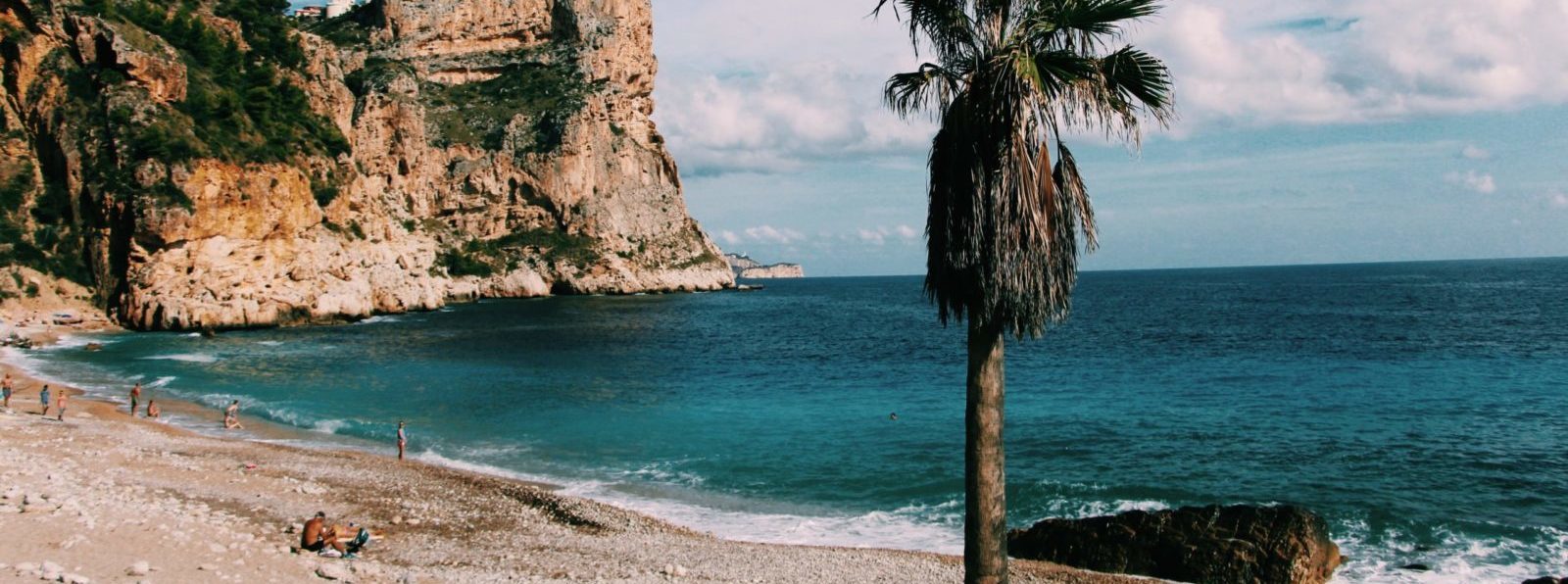
Potential Travel to Spain
Did Paul ever make it to Spain? We know from Scripture that the apostle Paul had a desire to preach in Spain (Rom. 15:22-29). After being released from Roman house arrest, he could have easily sailed westward.
Clement of Rome (writing in 95 A.D.) says that Paul had traveled and preached in “the farthest limits of the West” (1 Clement 5:5-7). This sort of language could have described a location west of Italy, such as Gaul or Britannia, but most scholars seem to think this describes Spain. However, it is also possible that Clement was speaking more broadly (or generically), referring to Paul traveling far westward from his home region, going from Palestine through much of the heart of the Roman Empire and eventually all the way to Rome. This latter interpretation seems odd to me.
The Muratorian fragment (written in apx. 170 A.D.), seems to affirm Paul’s missionary journey to Spain too, but some scholars question this; just because someone in the mid-to-late second century believed it doesn’t necessarily equate to strong evidence. However, this shows that church tradition was handing this down through the generations.
Paul’s missionary trip to Spain is also mentioned by Cyril of Jerusalem (313-386) and John Chrysostom (347-407).
There may not seem to be many significant (quality) pieces of evidence that corroborate the idea that Paul made it all the way to Spain, and there are not any comments in Paul’s later letters that point to him ever making it to Spain either. However, these extrabiblical evidences seem compelling. It’s possible that a trip to Spain may have been the first leg of Paul’s fourth missionary journey.
Paul Beheaded by Nero
In his second letter to Timothy, Paul mentions his “first defense” and says he was “delivered from the lion’s mouth” (2 Tim. 4:16-17). Most biblical scholars believe this is a reference to the first time he was in Caesar’s court, defending himself, eventually leading to his Roman house arrest (Acts 28).
Paul was released from his first Roman arrest, but there wouldn’t be a second release. Paul eventually ended up back in Rome. The second time, it wasn’t house arrest. It was a real Roman jail. This was most likely part of Nero’s persecution of Christians in the mid 60s. This was one of the most brutal times of persecution in Christian history.
When much of the city of Rome burndown in 64 A.D., Emperor Nero blamed the Christians. The emperor later requested that the apostle Paul be arrested and chained. It appears that Paul was arrested somewhat abruptly and unexpectedly, evidenced by the fact that he was not able to secure his cloak and his Old Testament parchments; Paul later requested that these be brought to him (2 Tim. 4).
Paul likely penned 2 Timothy during this second Roman imprisonment. Paul was beheaded shortly after he wrote 2 Timothy. Some scholars have concluded that Paul was killed as early as 64 A.D., but it is more likely that he was executed sometime between 67 A.D. and 68 A.D.
The legacy of the apostle Paul is second to none in Christian history. He is the greatest missionary evangelist the world has ever seen. Paul was a man on mission, focused on spreading the gospel and planting churches.
Paul was a man so impacted by Jesus, so compelled by God’s love, so humbled that the Messiah would choose him to be an ambassador, that he was willing to endure much pain and hardship to see others come to faith in Jesus Christ.
Featured illustration of Paul in prison courtesy of britannica.com. Images of the jails in Philippi and Caesarea courtesy of missionbibleclass.org. Illustration of Eutychus’ death courtesy of gfbtkingdomkids.com.
Recommended Resources:
“Handbook on Acts and Paul’s Letters” (by Thomas R. Schreiner)
“Paul: A Biography” (by N.T. Wright)
“Acts: An Expositional Commentary” (by R.C. Sproul)
“Dictionary of Paul and His Letters” (more than 100 contributors, edited by Gerald Hawthorne, Ralph Martin, and Daniel Reid)

Kenneth E. Ortiz (Th.M.) is Lead Pastor of Horizon City Church . He has 15+ years of vocational ministry experience. Kenneth previously served as a professor at Bethlehem College and adjunct faculty at Spurgeon College . Kenneth lives in Minneola, FL with his wife Malaina, they have two kids.
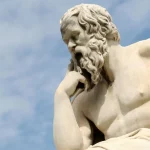

Paul’s Missionary Journeys: The Beginner’s Guide
by Ryan Nelson | Jul 6, 2020 | Bible topics
Paul’s missionary journeys helped spread the gospel throughout much of the ancient world. Over the course of his ministry, the Apostle Paul traveled more than 10,000 miles and established at least 14 churches.
The Book of Acts records three separate missionary journeys that took Paul through Greece, Turkey, Syria, and numerous regions you won’t find on modern-day maps. Some scholars argue that Paul also took a fourth missionary journey, since parts of the New Testament appear to reference travels that may have taken place after the events in Acts.
Paul’s travels played a crucial role in the formation and development of the early Christian church. Many of the communities he encountered on these missionary journeys were the same ones he wrote to in his pastoral epistles.
In this guide, we’re going to follow Paul’s footsteps as he travelled across the ancient world, looking at the places he went and the major events that took place along the way. At times it can be challenging to distinguish between ancient cities, provinces, and regions (and there are sometimes multiple names that refer to the same area), so as we go, we’ll make some of those distinctions more clear.
Paul’s first missionary journey (Acts 13–14)
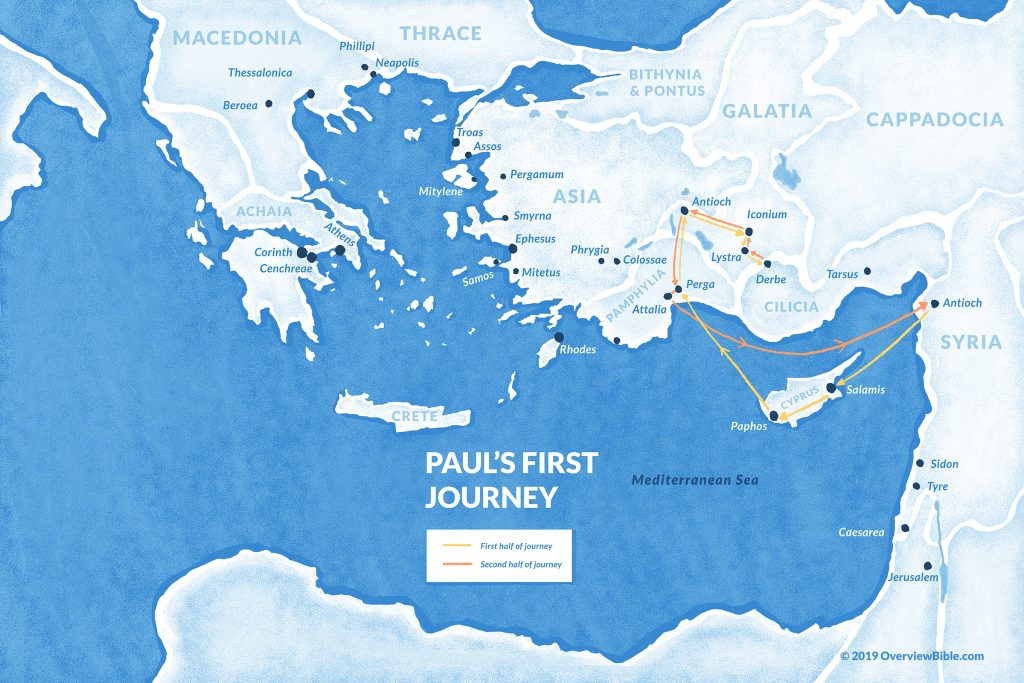
Paul’s first missionary journey began in Antioch. You may notice that maps of the ancient world often have two cities labelled Antioch. They’re both named after Antiochus, father of Seleucid I. The Antioch in Acts 13 was the third largest city in ancient Rome and capital of the province of Syria. Today, it’s part of southern Turkey. The other Antioch was part of Pisidia, an ancient region which is also now part of Turkey. Your Bible likely refers to it as Pisidian Antioch or Antioch of Pisidia.
In Antioch (the big city in Syria), the Holy Spirit singled out Paul and Barnabas from the believers worshiping there, and sent them on their first missionary journey.
Paul’s first journey took him by boat to the Roman province of Cyprus. Today, Cyprus is a country known as the Republic of Cyprus. It’s a mediterranean island south of Syria. Paul and Barnabas arrived in the port city of Salamis, where John Mark (who was possibly Barnabas’ cousin), helped them share the gospel in Jewish synagogues.
From Salamis, the group moved across the island to Paphos, where they were met by a Jewish sorcerer named Bar-Jesus (also known as Elymas the sorcerer). This sorcerer worked for the governor—Sergius Paulus—who sent for Paul and his companions because he wanted to hear the word of God. Elymas opposed them and tried to turn Sergius from the faith, and so Paul, filled with the Holy Spirit, called him a “child of the devil” and struck him blind. Sergius saw what happened, and believed.
Ironically, Elymas meant to steer Sergius away from Christ, but he became the very vehicle God used to draw Sergius toward him.
From Paphos, Paul and company set sail for the Roman province of Pamphylia, located in modern day Turkey. They arrived in the city of Perga, where John Mark left them and returned to Jerusalem (which, interestingly, was in the opposite direction from where they just came). We don’t know why John Mark decided to leave, but this would later create a rift between Paul and Barnabas.
Together, Paul and Barnabas travelled to Pisidian Antioch, where local synagogue leaders invited them to speak. Initially, the Jewish people were receptive to the gospel, but a week later, the entire city gathered to hear Paul and Barnabas, and the Jewish leaders became jealous. They resisted the message of the gospel, and so Paul and Barnabas made an important pivot: they began preaching to the Gentiles.
Many of the Gentiles believed the gospel, and Luke (the traditional author of Acts) tells us that:
“The word of the Lord spread through the whole region. But the Jewish leaders incited the God-fearing women of high standing and the leading men of the city. They stirred up persecution against Paul and Barnabas, and expelled them from their region.” —Acts 13:49–50
Driven out of Pamphylia, Paul and Barnabas travelled to Iconium, an eastern city in the region of Phrygia. Iconium still exists today as the Turkish city of Konya.
Once again, Paul and Barnabas spoke in the synagogue, where Jews and Greeks alike accepted the gospel. But the Jews who didn’t accept it stirred up trouble, even as Paul and Barnabas began performing signs and wonders (Acts 14:3). As support for Paul and Barnabas grew, so did the opposition they faced, and eventually, they became aware of a plot to abuse and stone them. So they left.
Fleeing the threat in Iconium, Paul and Barnabas left Phrygia altogether and travelled to Lystra, a city in the province of Lycaonia. Here, Paul healed a man who was lame.The locals who witnessed this miracle thought Paul and Barnabas were gods in human form, calling Barnabas Zeus and Paul Hermes. The priest from the temple of Zeus brought bulls and wreaths to offer sacrifices to them.
Paul and Barnabas attempted to redirect their praise to God, but struggled to keep the crowds from offering sacrifices to them.
Jews came from Antioch and Iconium and continued what they’d started. They riled up the crowds and convinced them to stone Paul. Believing he was dead, they dragged him outside the city. When the disciples gathered around him, Paul got up and went back inside the city.
Then Paul and Barnabas went to Derbe, another city in Lycaonia. There, they “won a large number of disciples” (Acts 14:21).
The return to Antioch
After a time in Derbes, Paul and Barnabas went back the way they came, working their way through Lystra, Iconium, Pisidian Antioch, and Perga. In each city, they encouraged the believers there and strengthened their faith, as they would continue doing on their future missionary journeys. They did, however, stop in a new Pamphylian city on the way: Attalia. Acts only mentions it in passing, but presumably, they established a community of believers there as well.
From there, they skipped a return voyage to the island of Cyprus and went straight back to Antioch (the big one), where they told the church what happened on their journey.
Paul’s second missionary journey (Acts 16:23–20:38)
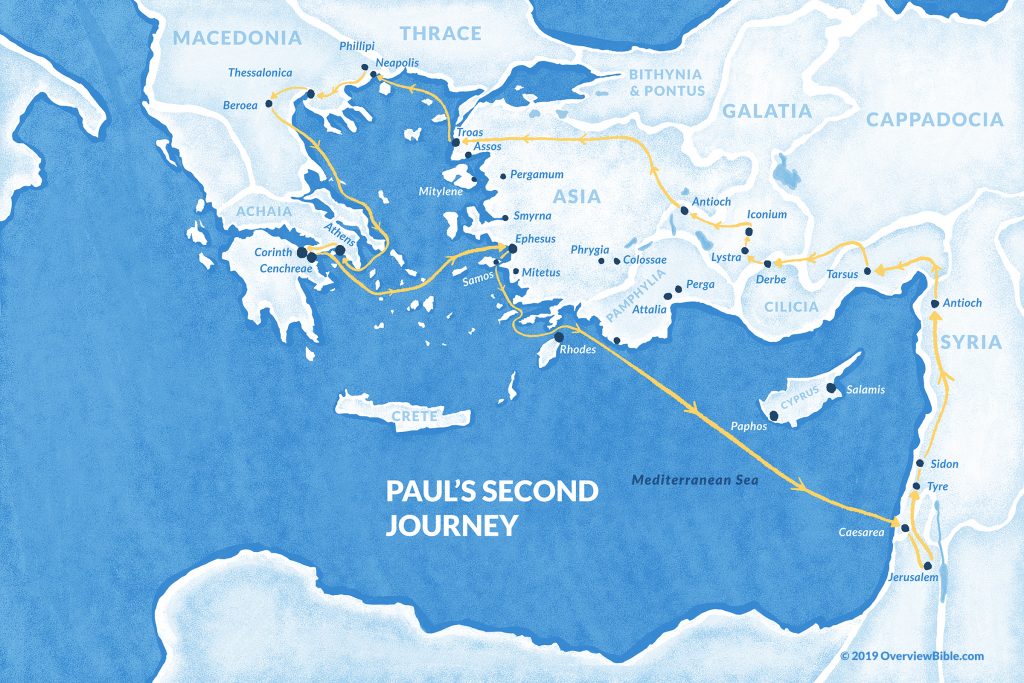
Paul’s second missionary journey established many of the churches he would later write to in his pastoral epistles. Interestingly, this may have happened in part because of a “sharp disagreement” he had with Barnabas. Paul’s original plan was to essentially have a rerun of their first trip, strengthening the communities they’d formed in each city and telling them what the Council of Jerusalem had ruled in regards to Gentile believers.
But Barnabas wanted to take John Mark—who had left them shortly into their previous journey. Paul was so opposed to the idea that they parted ways, initiating two separate missionary journeys. Barnabas took John Mark and went with the original plan, making their way back to the island of Cyprus. Paul took a man named Silas and travelled through the provinces of Syria and Cilicia.
The first cities that Acts mentions by name on Paul’s second journey are Derbe and Lystra. At this time, Paul and Silas picked up a new companion: Timothy.
The locals spoke highly of Timothy, and Paul wanted to bring him along even though he was half Greek, which meant local Jews would have a harder time accepting their message. Out of concern for these local Jews, Paul circumcised Timothy—even though, ironically, one of the things they were coming to tell Christians was that Gentiles didn’t have to be circumcised. (See Acts 16:3–4.)
Acts doesn’t specify where in Phrygia Paul and his companions stopped, but since he’d established a church in Iconium on the first trip, that community would’ve been on his mind (even though last time he was there, people had plotted to stone him). Interestingly, Acts notes that Paul and his companions journeyed here after they were “kept by the Holy Spirit from preaching the word in the province of Asia” (Acts 16:6).
Just north of Phrygia was the province of Galatia. Acts makes no mention of what happened here, but this is the province Paul wrote to in his letter to the Galatians . Interestingly, part of the purpose of Paul’s second trip was to share the news from the Council of Jerusalem regarding the Law of Moses and whether or not Gentiles (or Christians in general) should be expected to follow it. The council decided the Torah didn’t apply to Gentile believers (though they did hang on to a few rules). But by the time Paul wrote the Book of Galatians, Christians there were feeling pressure to obey the law (particularly in regards to circumcision) in order to be saved.
From Galatia, Paul’s group traveled west, until they reached the border of Mysia—a western region in the province of Asia, which is now part of Turkey. They intended to head north to the region of Bithynia, “but the spirit of Jesus would not allow them to” (Acts 16:7). So they passed by Mysia and headed to the city of Troas. Here, Paul had a vision of a man in Macedonia, begging him to “Come over to Macedonia and help us.” Paul took this vision as a sign that God was calling them to Macedonia, which was across the Aegean Sea.
From Troas, Paul and his companions sailed across the Aegean Sea, making a pitstop on the island of Samothrace before landing in Neapolis and then traveling to Philippi. In Philippi, they spoke with women outside the city gate. One of them was a wealthy cloth dealer named Lydia. After her household was baptised, she persuaded Paul’s group to stay with her for a while.
Later, Paul, Silas, and the others were confronted by a spirit-possessed slave woman who could predict the future. She followed them for many days, shouting, “These men are servants of the Most High God, who are telling you the way to be saved” (Acts 16:17). Paul became so annoyed that he cast out the spirit. Her owners were furious, because they had been profiting off of her fortune telling. So they turned the local magistrates against them, claiming Paul and Silas were stirring up trouble and trying to get Roman citizens to believe and do illegal things.
The authorities had Paul and Silas severely flogged and thrown in prison. Late at night, while they were worshiping, an earthquake shook the foundations of the prison, opened the doors, and freed the prisoners from their chains. When the jailer awoke and saw the doors open, he prepared to kill himself. But Paul stopped him and assured him everyone was still in the prison.
After listening to Paul and Silas share the gospel, the jailer believed in Jesus and had his whole household baptized.
The next morning, the magistrates ordered Paul and Silas released. Paul revealed that they were Roman citizens, who had just been beaten and imprisoned without trial, and the authorities became afraid. Paul and Silas returned to Lydia’s house, and then left the city of Troas.
After passing through the Macedonian cities of Amphipolis and Apollonia, they arrived in Thessalonica. Since Thessalonica had a synagogue, Paul turned to his usual method—preaching the gospel on the Sabbath. Over the course of three weeks, he achieved the usual result—many Jews and Greeks alike embraced the gospel . . . and those who didn’t were outraged by it.
At night, the Thessalonian believers sent Paul and his companions away to the nearby city of Berea.
The Bereans listened eagerly to the gospel and carefully examined the Scriptures to see if they supported Paul’s claims. Many Jews and Greeks became believers, but some agitators from Thessalonica heard Paul was in Berea, and they stirred up the crowds. Silas and Timothy stayed in Berea, while Paul was escorted out of Macedonia to Athens.
In the first century, Athens was in the region of Achaia, just south of Macedonia. Today, it’s the capital of Greece, and the largest city in the country.
Paul was essentially waiting around for Silas, Timothy, and the others to rejoin him. But while he waited, he noticed that Athens was full of idols. He debated with philosophers in both the synagogue and marketplace. Some Athenians were open to his ideas, and they were eager to discuss them. One idol in particular caught his eye—it had an inscription that read: “to an unknown god.” He seized on this as an opportunity to tell them about the “unknown God” who died and rose so that all might have eternal life.
Paul’s message in Athens incorporated observations about what he saw around him as well as quotes from famous Greek philosophers to point back to the gospel. After establishing a group of believers in Athens, Paul headed west to the city of Corinth.
In Corinth, Paul stayed and worked with a couple of Jewish tentmakers named Priscilla and Aquila. Every Sabbath, he preached to Jews and Greeks in the synagogue. Silas and Timothy rejoined Paul here, and Paul began focusing his energy on testifying about Jesus to the Jews.
When the Jews opposed his message, Paul devoted himself to reaching Gentiles, and he left the synagogue. As more Greeks embraced the gospel, the Corinthian Jews brought Paul before the governor, who basically told them to take a hike and refused to help.
Paul stayed in Corinth for a year and a half, and he left with Priscilla and Aquila.
The return journey
Before setting off for Syria, Paul stopped for a vow-fulfilling haircut in the port city of Cenchreae, which was just a hop, skip, and a jump from Corinth. With his companions, he sailed across the Aegean Sea to Ephesus, where he dropped of Priscilla and Aquila, and promised to come back if he could. After a short stay in Ephesus, Paul set sail for Caesarea, which was across the Mediterranean and far to the southeast. From there, he made the trek south to Jerusalem.
Paul’s second missionary journey ended in Jerusalem.
Paul’s third missionary journey (Acts 18:23–20:38)
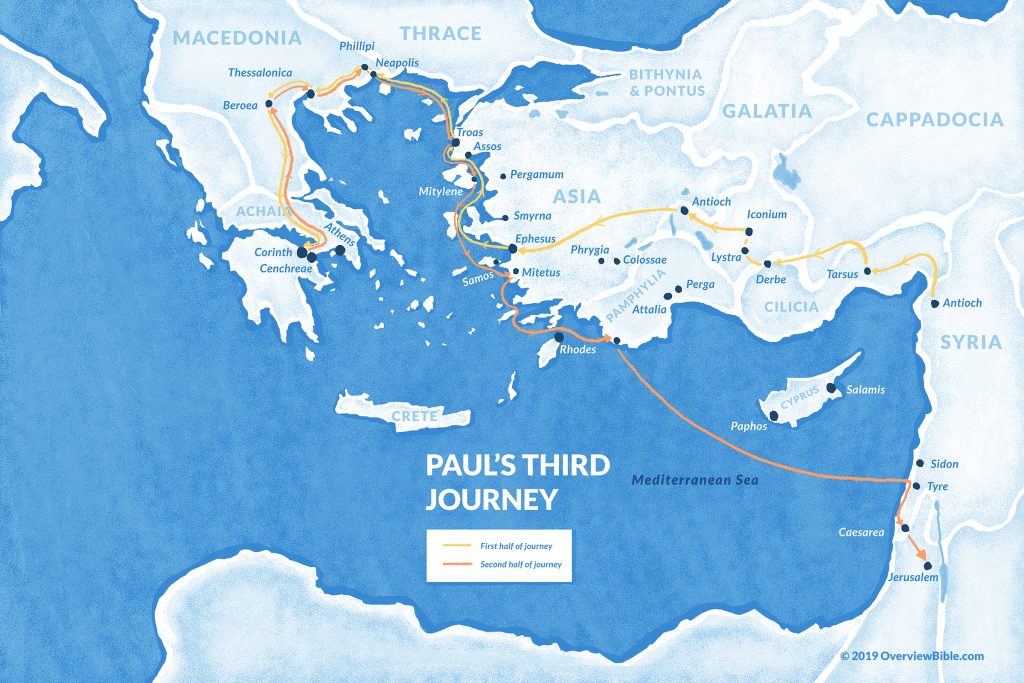
When you read Acts, there’s no transition from Paul’s second missionary journey to his third. His arrival in Jerusalem almost immediately began his next trip. But while his second journey ends in Jerusalem, the beginning of his third journey is actually in Antioch, which is about 300 miles north.
Phrygia and Galatia
From Antioch, Paul once again worked his way west, passing “from place to place throughout the region of Galatia and Phrygia, strengthening all the disciples” (Acts 18:23). This included Derbe, Lystra, and Iconium.
Paul traveled west to Ephesus, the capital of the province of Asia, where he’d left Priscilla and Aquila on his previous journey. Since he’d last visited, a man named Apollos had been preaching part of the gospel, but he didn’t know about the Holy Spirit. So when Paul arrived, he taught the Ephesians about the difference between water baptism and the baptism of the Spirit.
For three months, Paul preached in the synagogues. When people started criticizing Christianity, he left and began holding discussions in a lecture hall.
This went on for two years, and all the while, God used Paul to perform miracles. Even things Paul had touched—handkerchiefs and aprons—healed the sick and drove out evil spirits.
Some Jews thought invoking Paul’s name would let them drive out demons. Seven sons of a chief priest named Sceva said to an evil spirit, “In the name of the Jesus whom Paul preaches, I command you to come out” (Acts 19:13). The spirit replied that it knew Jesus and Paul, but not them, and then it pulverized all seven of them.
As word spread about what happened, people began to revere the name of Jesus. Local sorcerors came to repent, and they burnt scrolls that would have been worth more than 130 years’ worth of wages (Acts 19:19).
Around this time, a local silversmith named Demetrius realized that the future of his business (making idols) was jeopardized by the gospel. The demand for idols was going down all across the province of Asia, but especially in Ephesus, where he lived. So Demetrius gathered all the craftsmen and workers whose businesses were impacted, and stirred the entire city into an uproar. They seized two of Paul’s companions and brought them into a theater.
Paul wanted to address the crowd, but the disciples didn’t let him. Instead, a city clerk told everyone that unless they were going to bring formal charges against the men in a legal assembly, they were in danger of being charged with rioting.
Macedonia and Greece
After things settled down in Ephesus, Paul headed across the Aegean Sea to Macedonia. He traveled throughout the region, encouraging believers, and eventually arrived in Greece, where he stayed for three months. He intended to sail back to Syria (where his journey started), but some people plotted against him, so he took another lap through Macedonia instead.
Along the way, disciples joined Paul from many of the communities he’d ministered to. He had companions from Berea, Thessalonica, Derbe, and the province of Asia. These followers went ahead of Paul to Troas, in Asia. Paul stayed briefly in Philippi, then joined them.
Paul stayed in Troas for seven days. The night before he left, he stayed up late talking in a room upstairs. A young man sat in a window, drifted off to sleep, and fell to his death. Paul threw his arms around the man and declared that he was alive, and he was. Then Paul went back upstairs and continued talking until daylight.
Paul walked from Troas to Assos, which was just to the south, and then sailed for the nearby city of Mitylene. Eager to reach Jerusalem before Pentecost, Paul sailed past Ephesus and stopped in Miletus. There, he met with the leaders of the Ephesian church and essentially told them that he had taught them everything they needed to know, that he would not see them again, and that they needed to be on guard against false teachers. This is when Paul also famously quoted Jesus, sharing words that aren’t recorded in any of the gospels: “It is more blessed to give than to receive” (Acts 20:35).
And then he set sail.
Paul and his companions stopped briefly in Kos, Rhodes, and Patara before heading across the Mediterranean Sea to Phoenicia (the coastal region south of ancient Syria, which is now part of Syria). They arrived in Tyre, where “through the Spirit” (Acts 21:4), the local disciples urged Paul not to go to Jerusalem. He ignored them.
From Tyre, the voyage continued to the port city of Ptolemais, and then Caesarea, where the group stayed with Philip the evangelist (not to be confused with Philip the apostle ). Here, a prophet warned Paul that he would be bound by the Jews in Jerusalem and handed over to the Gentiles.
Still, he pressed on to Jerusalem, and by the end of Acts, the Jewish leaders had handed him over to Roman rulers.
Paul’s fourth missionary journey
Acts explicitly records three distinct missionary journeys. But some scholars and even ancient Christian writers have claimed that there was also a fourth missionary journey which was only hinted at in the Bible.
The argument for a fourth journey is primarily based on clues from Paul’s letters. He occasionally refers to events and visits that may not be accounted for in Acts or the epistles.
For example, Paul suggested he would travel to Spain (Romans 15:24), but he provides no record of this journey in his letters. However, early church fathers claimed Paul did, in fact, travel to Spain.
In his letter to the Corinthians, first-century church father Clement of Rome said Paul “had gone to the extremity of the west,” which at the time presumably meant Spain. Fourth-century church father John of Chrysostom said, “For after he had been in Rome, he returned to Spain, but whether he came thence again into these parts, we know not.” And Cyril of Jerusalem (also from the fourth century) wrote that Paul “carried the earnestness of his preaching as far as Spain.”
In 2 Timothy 4, Paul makes an ambiguous reference to “my first defense” and claims he was “delivered from the lion’s mouth” (2 Timothy 4:16-17). Some have interpreted this as a reference to his first defense before Emperor Nero, which he was heading for at the end of Acts.
Paul’s letters make other references to events not recorded in Acts, but since there is so much overlap in the locations mentioned, and Paul spent multiple years in some of these places on his three recorded journeys, it’s difficult to say whether or not this fourth journey ever actually happened.
Take a closer look at Paul’s footsteps
Paul’s missionary journeys are a key part of the New Testament. Paul’s epistles were originally written to the communities he formed on these journeys, and they show us exactly how Christianity spread to the Gentiles so rapidly.
Here at OverviewBible, we’ve charted each of Paul’s missionary journeys into beautiful, full-color posters you can display in your classroom or church office. Each comes in multiple sizes on fine art paper with a matte finish.

Get an overview of the entire Bible
The Bible is huge. Together, its 66 books are three times longer than Moby Dick . It’s so big that even if you’ve been reading it your whole life, you can still miss the point. Jeffrey Kranz, founder of OverviewBible, wrote The Beginner’s Guide to the Bible to help Christians and non-Christians alike get a better grasp of this important text.
This non-preachy, jargon-free guide will walk you through the Bible’s major themes and characters and help you see how each book fits into the larger story of Scripture.
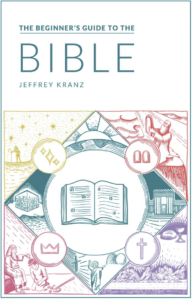
Explore the Bible with us!
We create research-based articles and handy infographics to help people understand the Bible.
Join our email list, and we’ll send you some of our best free resources—plus we’ll tell you whenever we make something new.
You have Successfully Subscribed!

- Bible Books
- Bible characters
- Bible facts
- Bible materials
- Bible topics
Recent Posts
- Interesting Facts about the Bible
- Logos Bible Software 10 review: Do you REALLY need it?
- Who Was Herod? Wait… There Were How Many Herods?!
- 16 Facts About King David
- Moses: The Old Testament’s Greatest Prophet
Privacy Overview
Author: Ron Graham
simplybible.com

Outline of Paul’s Fourth Journey —Jerusalem to Rome as a prisoner
This is our fourth lesson on Paul's journeys. His fourth journey was from Jerusalem to Rome. He made this journey as a prisoner. Between the third missionary journey and the journey to Rome, Paul is in Jerusalem and Caesarea. The book of Acts devotes six chapters to this troubled prelude to Paul's journey to Italy, and another two chapters to the journey itself.
Paul’s Troubles in Jerusalem and Caesarea
- 1. In Jerusalem Paul had a meeting with James and the elders (Acts 21:18-26).
- 2. Paul was caused trouble by those Jews who opposed Christianity (Acts 21:27-40).
- 3. Paul told his story publicly and nearly got flogged (Acts 28).
- 4. He went on trial and was escorted to Caesarea (Acts 23:1-35).
- 5. He was imprisoned in Caesarea and went before Felix (Acts 24).
- 6. When he appeared before Festus he appealed to Caesar (Acts 25).
- 7. Paul next appeared before Agrippa (Acts 26).
- 8. After that, as a prisoner, he begins the voyage to Italy (Acts 27:1-2).
The Journey to Rome
- 1. Caesarea to Sidon, then under Cyprus to the Asian Coast at Myra (Acts 27:1-5).
- 2. Along the coast above Rhodes then south in danger beneath Crete (Acts 27:1-15).
- 3. The ship is severly storm tossed. An angel encourages Paul. The ship is driven by Clauda to Malta [Melita] where it is wrecked but no life is lost (Acts 27:16-44).
- 4. On Malta Paul is bitten by a viper yet suffers no ill. He then does many miraculous healings (Acts 28:1-10).
- 5. After 3 months they sail to Syracuse Sicily, then to Rhegium on the toes of Italy, then to Puteoli a port near Rome (Acts 28:11-14).
- 6. Along the road to Rome Paul is met by fellow Christians who encourage him (Acts 28:15).
- 7. Once in Rome Paul is allowed to have his own lodging with the soldier guarding him. He is able to have many guests to whom he preaches the gospel. This lasted two years (Acts 28:16-31).
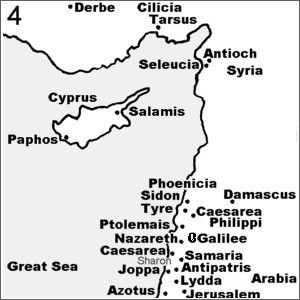
➤ DONATE
to simplybible.com Webservant Ron Graham
Home | Bible Topics | The Hub | List | Next www.simplybible.com Copyright © Ron Graham 2001
What Happened on Paul's Missionary Journeys?

I didn’t go to church much as a child. I only have a few memories of the few times I did go. One was trying to endure the music portion of the service and then secondly trying to keep myself occupied while some guy was up front talking to us about Jesus and some dude named Paul. Being the nerd that I am, I remember being intrigued by colored maps in the back of my Bible. One in particular that I remember was one with three different colored arrows with the heading at top: Paul’s Missionary Journeys.
I don’t know if I really understood who Paul was or even what a missionary journey was, but I thought the map was cool and it held my attention for a few moments. Perhaps you’re wondering who exactly Paul is and what his missionary journeys were.
To put simply, Paul was a guy whose life was radically changed by Jesus Christ. In the early part of his life, he was on a different kind of journey. He went throughout much of his land trying to tell people to ignore Jesus — and he was even instrumental in trying to hurt people who followed Jesus. But on one of these trips his life was changed, and now he went all across the known world to tell people about the goodness of Jesus. He went on three (or maybe four) big missionary journeys that we have record of in the New Testament.
Photo credit: Unsplash
How Many Missionary Journeys Did Paul Make?

First, it would be helpful for us to establish a definition of a missionary journey. In order for something to be called a missionary journey, there needs to be some sort of explicit mission or purpose, and a type of commissioning. Paul was always doing ministry. In one sense you could say that from the point of his conversion his life was one big missionary journey. But to be specific we would need to have some sort of specific mission and setting apart for this particular task. So how many times did this happen?
It’s possible that Paul went on more missionary journeys than what is recorded in the New Testament. But most believe he had either three or four main journeys. The Bible that I was using as kid was an NIV Study Bible. In that particular map there are three missionary journeys marked, but also a fourth arrow that outlines his trip to Rome. Some would also consider a fourth missionary journey to Spain.
We know that there are three missionary journeys in the book of Acts. We also know that Paul did travel to Rome as a prisoner (should this be considered a missionary journey, though?) We also know that there is mention of a fourth missionary journey to Spain. There are some hints throughout the New Testament that this journey was completed, and early Christian history does seem to give some evidence to this happening. But we cannot know for certain.
It is probably best to confess that we do not know for certain how many missionary journeys he took. But for our purpose we will consider his three major missionary trips.
Photo credit: ©Getty Images/mirsad sarajlic
What Happened on These Journeys?

You can read about Paul’s 1 st missionary journey in Acts 13-14 . On this trip he, and Barnabas, were commissioned from Antioch. The goal of this mission seems to have been to preach in Jewish synagogues and attempt to convert Jews. They began in Cyrus and went through Pamphylia, Pisidia, and Lycaonia. They then went through Iconium, Lystra, and Derbe and circled back around to Antioch.
In Cyprus the proconsul was converted after Paul pronounced a curse upon a Jewish sorcerer named Bar-Jesus and made him blind. They were also successful in Pisidian Antioch where many Jews and Gentiles were converted before some Jews incited a riot against Paul and Barnabas and drove them out of the city. Nevertheless “the word of the Lord spread through the whole region” (13:49).
They were met with the same mixture of success and opposition in the other cities as well. Perhaps one of the most significant things which came from this journey was the massive number of Gentiles who came to the faith . As they shared their story back in Antioch, this was an emphasis (see Acts 14:27-28 ).
Paul’s 2 nd missionary journey is recorded in Acts 15:36-18 :22. After a short stay in Antioch, Paul wanted to go with Barnabas on another journey. But a sharp dispute arose (with John Mark being the center of the debate) and the two split. Barnabas ended up back in Cyprus with John Mark and Paul took a different route throughout Asia Minor with Silas. It was on this journey that Paul would be joined by Timothy.
He would also have ministry in Athens, Philippi, Thessalonica, and Corinth. As you might have recognized by some of these names, it was through this missionary journey that Paul began his relationship with many of the churches to whom he would eventually write letters. The purpose of these journeys was to establish churches and to encourage those who were already followers of Jesus, but they also saw many converts as well.
Paul’s 3 rd missionary journey begins in Acts 18:23 and goes through Acts 20:38 . Paul’s third journey was essentially the same as his second journey but in reverse order. The narrative in Acts focuses on the church in Ephesus (another church that would receive a letter now in the New Testament). It was here also that connections were made to Galatia as well.
Though these journeys were filled with opposition and difficulty, they also experienced much success. The gospel spread all throughout the Roman Empire and churches were firmly established through these missionary efforts. Not to mention that the Lord used Paul’s correspondence during these journeys (and because of these) to inspire many books of the New Testament.
Photo credit: ©Getty Images/Freedom007
How Far Did Paul Travel on His Journeys?

Have you ever heard that song “500 Miles” by The Proclaimers? Well, Paul journeyed far more than 500 miles to take the gospel to the nations. Even though he was able to use the Roman Road for easier access to the cities, it is still estimated that Paul traveled well over 10,000 miles.
One person has taken it upon themselves to estimate the cost and travel time of Paul’s three journeys and his trip to Rome. He concluded that it would have taken him 281 days of travel time, journeying 10,282 miles at a cost of 1,731 denarii (day’s wages) for each person to sail on the trip.
When you factor in the toll these journeys took upon Paul’s person, his missionary endeavors were far-reaching, consequential, and costly. But you likely have heard the gospel today because of these efforts.
Did Paul Travel with Anyone?
Paul did not travel alone on any of these journeys. On his first missionary journey, he went with Barnabas. On his second journey he took Silas, and eventually Timothy joined them. While in Corinth on this journey he met Aquila and Priscilla and he took them with him on his third journey to Ephesus. Timothy and Erastus had gone ahead of him on this journey as well — so there would be those who greeted him while there. It is also quite likely that Luke accompanied Paul on some of these journeys. In Acts there are several sections where Luke says “we,” indicating that he was physically present.
Gospel mission is never a solo enterprise. Throughout the New Testament we see disciples traveling in teams. Even in the gospel account when Jesus sent out the earliest disciples, he sent them two by two. It’s likely that part of the reasoning for this is the Old Testament standard of having two witnesses. Paul never traveled alone on a missionary journey.
Photo credit: ©Getty Images/Klaus Vedfelt
What Happened to Paul at the End of His Life?

When we begin discussing the end of Paul’s life, things get a bit cloudier. We know that Paul is alive at the end of Acts. Everything leading up to that point (the three journeys and travel to Rome) we can be fairly certain about. But after the book of Acts ends, we have to piece together scant evidence and rely upon church tradition to establish his end of days. It is almost universally accepted that he died a martyr’s death, but when and where is up for debate.
As the book of Acts ends, Paul is in prison awaiting a verdict. Many believe that he was released on this occasion. There are details in the pastoral epistles (1 and 2 Timothy, Titus) that do not fit with his having died in Rome during the time period of Acts 28 . From here, debate ensues about whether or not Paul traveled to Spain and completed the task he mentioned in Romans 15:23-29 . Early church tradition has him going to Spain and completing a missionary journey there.
Eusebius claims that Paul was beheaded at the order of Nero shortly after Rome was burned in a fire. (This is where tradition has Peter meeting his end as well). But we cannot know for certain what happened at the end of Paul’s life. We know he continued writing, we know he spent more time in prison, and we know that he kept the faith . 2 Timothy 4:6-8 is the capstone on Paul’s life:
“ For I am already being poured out like a drink offering, and the time for my departure is near. I have fought the good fight, I have finished the race, I have kept the faith. Now there is in store for me the crown of righteousness, which the Lord, the righteous Judge, will award to me on that day — and not only to me, but also to all who have longed for his appearing.”
Photo credit: ©Getty Images/Rattankun Thongbun
Mike Leake is husband to Nikki and father to Isaiah and Hannah. He is also the lead pastor at Calvary of Neosho, MO. Mike is the author of Torn to Heal and Jesus Is All You Need . His writing home is http://mikeleake.net and you can connect with him on Twitter @mikeleake. Mike has a new writing project at Proverbs4Today .
Apostle Paul's Fourth Missionary Journey Large Map
. . . they delivered up Paul and certain other prisoners to a centurion named Julius, who was of the band of Augustus . . . And Julius treated Paul kindly, allowing him to go to his friends to refresh himself (Acts 27:1, 3).
The first part of Paul's journey to Rome is somewhat uneventful. After boarding another ship in Myra bound for Italy, however, the trip begins to take a turn for the worse. The ship leaves Myra with 276 total people aboard her (Acts 27:37). Since strong winds forbid the vessel from sailing in a westerly direction directly toward Italy, it sails South toward the shelter of the island of Crete.
. . . so we sailed down the sheltered side of the island of Crete, passing by Cape Salmone. We kept close to the coast and with great difficulty came to a place called Safe Harbors (called 'Fair Havens' in other translations), not far from the town of Lasea. (Acts 27:7 - 8).

The ship docks for a short period in Fair Havens until it is after the holy day known as the Day of Atonement (an annual Feast day of God), which fell in 60 A.D. on September 24th.
The optimal period for navigating the Mediterranean Sea was, in the first century, from April to October. Because of the winds, stormy weather and inability to see either the sun or moon for long periods, most ships that plied the sea docked for the winter.
Paul, sensing that those operating the ship wanted to continue the voyage during a notoriously dangerous time of the year, warns them not to leave port (Acts 27:9 - 10). His warnings go unheeded and the ship leaves port, hoping to reach the far western side of Crete and the harbor of Phoenix.
Paul's ship never makes it to Phoenix. Strong winds and a stormy sea out of the North and North-East blow the vessel away from Crete. Unable to control the ship she is allowed to go wherever the wind takes her.
And when the ship was caught in the storm, and we were not able to bring her head into the wind, we let her go and were driven along (Acts 27:15).
It is only after wandering the sea aimlessly for two weeks that the ship finally runs aground near the island of Malta. The vessel is very soon abandoned. All those on the ship make it safely to the island, in fulfillment of what God told Paul (Acts 27:22 - 25).
Summary overview:
Click on image to see ultra high resolution image of map
A. Rome 61-63 Acts 28
1. Paul writes the "prison epistles": Ephesians, Colossian, Philippians, Philemon.
2. The following men were with Paul in Rome: Timothy, Tychicus, Luke, Demas, Epaphras, Aristarchus, John-Mark
3. Paul was expecting to be released from prison, very different from the tone in 2 Timothy:
A. Rome Set free early 63 AD
1. Released from the Acts 28, 2 year imprisonment in early 63 AD
2. Timothy sent to Philippi with letter.
3. Paul always had the desire to work in Rome: Romans 15:22,28 Perhaps this is where he got his chance!
B. Rome [Hebrews]
1. No one knows for sure who wrote Hebrews. Paul, Apollos and Barnabas are three popular guesses.
2. If Paul wrote Hebrews this is when he wrote it. It must fit in somewhere at a time when Timothy was in prison in Italy and Paul was out (Heb. 13:23). We don't have any indication when this might have been.
a. Heb 13:23 "Take notice that our brother Timothy has been released, with whom, if he comes soon, I shall see you. 24 Greet all of your leaders and all the saints. Those from Italy greet you."
3. Hebrews may have been written after Paul and Peter were martyred just after the persecution of Nero but prior to the destruction of Jerusalem. This would have Hebrews written between 65-70.
C. Crete 63 AD
1. After his release Paul and his companions travel to Crete where Titus is left to organize the churches there (Titus 1:5).
a. Tit 1:5 " For this reason I left you in Crete, that you might set in order what remains, and appoint elders in every city"
D. Miletus 63 AD
1. From Crete they travel to the Ephesus area probably landing at Miletus
2. Paul sends Timothy to Ephesus and proceeds on to Colossae where he stays with Philemon.
a. 1 Tim 1:3 "As I urged you upon my departure for Macedonia, remain on at Ephesus"
3. Paul didn't leave Trophimus sick here but at the second pass through the following year: 2 Tim. 4:20
E. Paul didn't go to Ephesus
1. Acts 20:37 "And they began to weep aloud and embraced Paul, and repeatedly kissed him, grieving especially over the word which he had spoken, that they should see his face no more."
2. Paul then tells Timothy later that he left Trophimus there sick, a thing Timothy would already know if Timothy and Paul left the city together for Ephesus. Paul's charge to Timothy was to instruct certain men not to teach strange doctrines, 1 Tim 1:3, directly fulfilling Acts 20:29 about the Ephesian elder's apostasy.
3. Paul later desired to return to Ephesus while in 1 Tim 4:13 13 "Until I come, give attention to the public reading of Scripture" but never made it back thus fulfilling the prophecy of Acts 20:29.
F. Colossae
1. From Phile 22 Paul intended on visiting the Colossian church area when he was in Jail in Acts 28
a. Phile 22 And at the same time also prepare me a lodging
G. Troas
1. Paul then goes to Troas (2 Tim. 4:13)
2. 2 Tim 4:13 "When you come bring the cloak which I left at Troas with Carpus"
H. Macedonia province Philippi
1. Paul goes into Macedonia where he writes the first epistle to Timothy.
2. This must have been where he was when he composed 1 Tim and Titus because he had already been to Corinth and planned to go to Nicopolis.
3. Phil 2:24 "I trust in the Lord that I myself also shall be coming shortly." [written while in Rome]
4. Tim 1:3 "As I urged you upon my departure for Macedonia
I. Corinth [1 Tim & Titus written 64 AD]
1. Paul was intending on returning to Ephesus area:
a. 1 Tim 4:13 Until I come, give attention to the public reading of Scripture, to exhortation and teaching.
2. He had gone through Corinth and Miletus (2 Tim. 4:20)
a. 2 Tim 4:20 "Erastus remained at Corinth"
I. Nicopolis [departs spring 65 AD]
A. proceeds on to Nicopolis to spend the winter (Tit. 3:12).
1. Tit. 3:12 When I send Artemas or Tychicus to you, make every effort to come to me at Nicopolis, for I have decided to spend the winter there.
II. Paul either goes to Spain now or begins 5th missionary journey.
A. On the 3 rd missionary journey, Paul stated
1. Acts 19:21 "Now after these things were finished, Paul purposed in the spirit to go to Jerusalem after he had passed through Macedonia and Achaia, saying, "After I have been there, I must also see Rome."
B. Corinth was the closest he came to Rome when he decided to return back the way he came 20:2 en route to Jerusalem. Rome was in mind, but for another day, he wrote Romans from Corinth, and stated his clear intention to visit them on his way to Spain.
1. Rom 15:22 "I have often been hindered from coming to you; 23 but now, with no further place for me in these regions, and since I have had for many years a longing to come to you 24 whenever I go to Spain—for I hope to see you in passing" ... v28 "Therefore, when I have finished this, and have put my seal on this fruit of theirs, I will go on by way of you to Spain."
C. Of Course Paul was arrested when he returned to Jerusalem and was sent to Rome after "appealing to Caesar" in Acts 25:11
D. So the question now is, did he go to Spain after Nicopolis for a year or was he arrested near Nicopolis for his second and final imprisonment?
1. There is no evidence that Paul went to Spain in 2 Timothy. Surely if he had made the trip, the Holy Spirit would have given us some hint.
2. In 2 Timothy, it seems that the most recent cities he was at personally were: Corinth, Troas and Miletus 4:13,20
3. We feel that Paul never went to Spain, but was arrested near Nicopolis.
III. Two proofs of a 5th missionary journey (second pass through Asia & Macedonia)
A. Paul told Timothy from Corinth that he was intending on returning to Ephesus area:
1. 1 Tim 4:13 Until I come, give attention to the public reading of Scripture, to exhortation and teaching.
2. This reference merely shows Paul's intention to take a second pass.
B. The "Trophimus I left sick at Miletus" proves a second post-63 journey.
1. In doing this chronology, a number of problems, make many details unsure but we can be quite sure that Paul did take a second pass through Miletus:
a. He must have taken a second pass through Miletus because he wrote 1 Timothy after his first pass through, but it was in 2 Timothy that Paul told Timothy about Trophimus. A single pass would require Paul to leave Trophimus sick at Miletus, write 1 Timothy, get arrested, then from Rome tell Timothy about Trophimus in 2 Timothy 4:20. This virtually proves that Paul must have taken a second pass through, hence a 5th missionary journey because with a single pass, Paul would certainly have told Timothy about Trophimus in the 1 Timothy letter!)
b. "Trophimus sick" problem. If Paul went to Spain but only took a single loop through Miletus, it would have been 1.5-2 years later! Whereas, if he went to Spain and took a second swing through Miletus - Troas - Corinth, the time would be likely under 6 months. Further, a single loop would place Timothy at Ephesus. Miletus is the sea port for Ephesus. Why would Timothy need to be told by Paul in Rome that Trophimus was sick 20 miles from Timothy?
2. Lenski, for example, believes Paul made a second pass through Miletus after visiting Spain.
a. He has Paul leaving Rome in 63 for Troas - Miletus - Ephesus - Colossae - Ephesus - Macedonia - Nicopolis.
b. Then Spain.
c. Then from Spain back to Miletus (where he leaves Trophimus sick 2 Tim 4:20) -Troas (where he leaves his cloak and parchments 2 Tim 4:13) - Corinth (2 Tim 4:20)
d. After which, we find him in Rome again in prison, facing death, writing 2 Timothy. (Lenski, 1 Timothy, Intro, p 478)
IV. 5th missionary Journey:
(This journey is entirely evidenced from 2 Timothy.)
A. Miletus: [65 AD]
1. After wintering at Nicopolis (or returning from Spain if he went) Paul then goes to Miletus where he now leaves Trophimus sick:
2. "Trophimus I left sick at Miletus " 2 Tim. 4:20
B. Troas: [65 AD]
1. 2 Tim 4:13 "When you come bring the cloak which I left at Troas with Carpus, and the books, especially the parchments."
C. Corinth: [65 AD]
1. He had personally left Erastus at Corinth 2 Tim. 4:20
2. 2 Tim 4:20 "Erastus remained at Corinth"
D. Rome [2 Tim written 66 or 67 AD if he went to Spain]
1. Something happened while in Spain or Nicopolis and he was arrested and taken back to Rome for a second imprisonment.
2. This is where he wrote 2 Tim. Everything has now changed in his tone in the prison epistles and 1 Tim. and Titus. Now he expects to be put to death (2 Tim. 4:6-18).
3. 2 Timothy was written from Rome and was in prison: 1:8,16; 2:9; 4:6-8
a. Several internal indicators: 4:17 Lion's mouth = Rome
4. Either here at Nicopolis or soon after, Paul is arrested and returned to Rome under the fury of Nero's persecution (See II Tim. 4:6-8). Here he writes his last epistle, II Timothy and asks Timothy to come quickly and to bring John Mark. Tychicus is sent to Ephesus to take Timothy's place (II Tim. 4:12) and Artemas seems to have been sent to replace Titus (Titus 3:12).
E. Paul martyred [67 or 68 AD if he went to Spain]
1. Tradition states that Paul was beheaded under the persecution of Nero sometime before 68 AD when Nero himself died.
V. Paul's passing the baton of the Gospel
See map: 2 Timothy 4
A. v10: Titus to Damatia
B. v10: Crescens to Galatia
C. v12: Tychicus to Ephesus
D. v10: Demas to Thessalonica: Deserted having loved the world
E. 4:14 + 2:17: Alexander and Hymenaeus
1. 1 Tim 1:19 "keep faith and a good conscience, which some have rejected and suffered shipwreck in regard to their faith. Among these are Hymenaeus and Alexander , whom I have delivered over to Satan, so that they may be taught not to blaspheme."
2. Acts 19:33 Alexander was intending to make a defense to the assembly
3. 2 Tim 4:14 Alexander the coppersmith did me much harm; the Lord will repay him according to his deeds. 15 Be on guard against him yourself, for he vigorously opposed our teaching.
4. 2 Timothy 2:17 "their talk will spread like gangrene. Among them are Hymenaeus and Philetus, 18 men who have gone astray from the truth saying that the resurrection has already taken place, and thus they upset the faith of some."
VI. Some non-inspired sources:
1. Clement of Rome ( ca. 95) ( 1 Cor. 5.7) records that Paul "taught the whole world uprightness and traveled to the extreme west (epi to terma teµs dyseoµs elthoµn). And after he had borne witness before the authorities, he was taken from this world and went to the holy place, having proved himself the greatest model of endurance."
2. The Muratorian fragment (lines 38-39; EB 4; ca. 180) implies that the last part of Acts, recounting the departure of Paul from the City [Rome] as he set out for Spain" ( ...profectione Pauli ab Urbe ad Spaniam proficiscentis ), has been lost.
3. Eusebius ( HE 2.22, 2) is the first to mention Paul's second imprisonment in Rome and martyrdom under Nero: "After defending himself, [Paul] was again sent on the ministry of preaching, and coming a second time to the same city suffered martyrdom under Nero. During this imprisonment he wrote the second epistle to Timothy, indicating at the same time that his first defense had taken place and that his martyrdom was at hand." Eusebius further quotes Dionysius of Corinth ( ca. 170), who had stated that Peter and Paul were martyred at the same time" ( HE 2.25, 8).
4. Tertullian ( De praescrip. 36) compares Paul's death to that of John (the Baptist), i.e., by beheading. The Eusebian testimony about Paul's death in the persecution of Nero is generally accepted. This persecution lasted, however, from the summer of 64 to the emperor's death (9 June 68), and it is difficult to pinpoint the year of Paul's martyrdom.
5. The notice of Dionysius of Corinth that Peter and Paul "were martyred at the same time" (kata ton auton kairon) has often been understood to mean in the same year. But the preferred year for the death of Paul is 67, toward the end of Nero's persecution, as Eusebius' account seems to suggest. This chronology is not, however, without its difficulties.
6. Catholic tradition holds that Paul was buried on the Via Ostiensis, near the site of the modern basilica of San Paolo fuori le Mura. In 258, when Christian tombs in Rome were threatened with desecration in the persecution of Valerian, Paul's remains were transferred for a time to a place called Ad Catacumbas on the Appian Way. Later they were returned to their original resting place over which Constantine built his basilica.
By Steve Rudd

Go To Start
2023 Tabernacles Conference
The 2023 Tabernacles Conference is here! View details, and join the live stream by clicking the "Details" button below
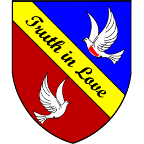
Latest Posts
View the latest posts in an easy-to-read list format, with filtering options.
Blog Series
Multi-part posts on a particular topic, grouped together in "series" pages.
Look through our blog archive by year / month, or in a massive title list.
Most Recent Posts (View All)

04/29/2024 - ... Read More
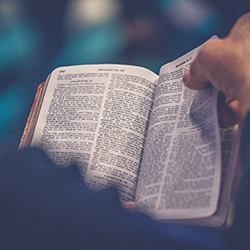
04/29/2024 - A New Covenant worldview is one which adopts the principles of equality and impartiality found in... Read More

04/27/2024 - They try to remain optimistic, but it is clear that they are preparing the public for the death of... Read More
Blog Categories
- Bible Studies
- Ministry News
- Announcements
- Trip Reports
Prayer Campaigns
Most recent blog series.
- Micah, the Prophet of Unchanging Love 03/29/2024
Featured Blog Series
- Israel and the Nations 03/27/2009
- Command vs. Control 06/01/2006
- The Priesthood Of Eli 05/03/2006
Please activate Javascript to navigate the tabs below
Over 100 books covering a variety of topics
Short, single-page teachings on a topic
Single page teachings by various authors
FFI Newsletter
Monthly newsletter containing ministry updates and long-term teachings
Audio recordings of teachings and discussions on a variety of biblical topics
Vlog recordings with Dr. Jones and video recordings of bible conferences.
Read over 100 books written by Dr. Jones, available to read for free online. Several of the books have also been translated into different languages, and are also available to read for free. The only time you pay is when you purchase a physical version of a book.
- GKM Books on Amazon Kindle
- View / Download Order Form
- All Books Bundle (Store Product)
Featured Books

- Secrets of Time

- Creation's Jubilee
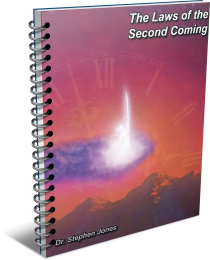
- The Laws of the Second Coming

- The Biblical Meaning of Numbers
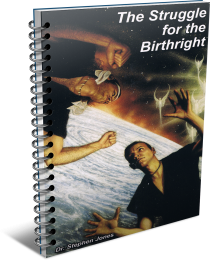
- The Struggle for the Birthright

Christian Zionism: How Deceived Can You Get?
Read a variety of tracts that condense a topic into a short, single page format. These tracts can be read for free online, or physical copies can be purchased in bundles. If you are subscribed to the FFI Newsletter, you will receive new tracts when they are released.
- Join the FFI mailing list and get the next Tract free
Featured Tracts

God's Promise To You

Who is God?

The Feasts of the Lord
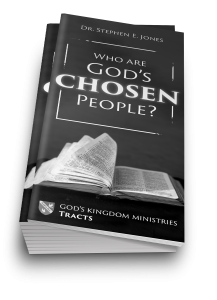
Who Are God's Chosen People?

Sionism vs Zionism
Read articles written by Dr. Stephen Jones and a variety of other authors.
Featured Articles
- My Vision of the Endtime Ministry of the Body of Christ By: Tommy Hicks
- The Meaning of Eternal and Everlasting By: Dr. Stephen E Jones
- The Law of the Tithe By: Dr. Stephen E Jones
- How to Believe In God's Sovereignty Without being a Fatalist By: Dr. Stephen E Jones
- How to Observe the Feast Days By: Dr. Stephen E Jones
The FFI Newsletter is a monthly newsletter written by Dr. Stephen Jones that gets posted online and mailed physically to newsletter subscribers. These include long-term teachings and ministry updates when available.
- Subscribe to the FFI Postal Mailing List
- View all long-term FFI studies
Latest Issues
- True Inheritors 04/01/2024
- The Journey to the Kingdom 03/01/2024
- The Coming Kingdom 02/01/2024
- The Effects of Old Covenant Beliefs 01/01/2024
- Identifying Nations in Prophecy, part 3 12/01/2023
Listen to audio recordings of teachings from Dr. Jones and discussions on a variety of biblical topics, available for free online.
Featured Audios
- How to Know Spiritual Things
- Spiritual Maturity
- The Law of Christ
- What is the Kingdom of God?
- Spiritual Warfare
Watch video recordings of conferences, as well as a variety of interviews and vlogs from Dr. Jones.
- GKM Videos on Youtube
- GKM Videos on Rumble
- GKM Videos on Odysee
Latest Videos
- Kingdom Citizenship 04/12/2023
- Public Communion 03/25/2023
- 2020 Tabernacles Conference 08/09/2020
- Len Yule and the Hebrides Revival 04/23/2020
- Tim Atkinson Interview: Evidence of Giants; Stem Cells 08/05/2019
Where to Begin
First time here, and don't know where to start? No worries, we got you covered.
Follow our Structured Curriculum
We have taken the five ministry gifts (Evangelists, Pastors, Teachers, Prophets, and Apostles) as an outline for the courses of Bible study in this School.
Our purpose is to equip those who are ministering with a knowledge of the Word, so that each will be more effective in fulfilling his or her calling.
Conference Center
Live stream.
Lorem ipsum dolor sit amet, consectetur adipiscing elit, sed do eiusmod tempor incididunt ut labore et dolore magna aliqua.
View our calendar of all GKM events - past, present, and future
Any live streams from GKM will go live on this page, and our Youtube channel
Any past conferences, currently ongoing conferences, and future conferences will be posted to this section.
You will be able to view all details for a particular conference, including any streams / recordings related to that particular conference.
Latest Conference

2020 Online Tabernacles Conference
All past, and currently active prayer campaigns from the blog will also be posted to this section for ease of access.
Latest Prayer Campaigns
- A Prayer of Repentance 09/12/2022
- Faith Not Fear 01/20/2022
- These Stones II 01/05/2022
Watch Dates
Any dates that may have potential prophetic significance, either from biblical or personal revelation. All past, present, and future watch dates will be posted to this section.
Latest Watch Dates
- Lorem ipsum dolor sit amet, consectetur adipiscing elit, sed do eiusmod tempor " data-tooltip-position="left" class="upcoming"> 11/07/2022
- 10/11-15/2022
* = Upcoming watch date
- Statement of Beliefs
- Testimonials
- Instructions

Lessons From Church History Volume 1
Volume 1. This gives a short history of the Church from the apostles to the Roman War, including Luke’s account of Paul’s journeys in the book of Acts. It includes Paul’s fourth missionary journey to Spain and Britain.
Category - History and Prophecy
Share this Page

Full Book Title List
- The Laws of Spiritual Warfare
- Bible Laws on Righteous Judgment
- Free Will Versus Ownership
- The Genesis Book of Psalms
- The Rapture in the Light of Tabernacles
- If God Could Save Everyone - Would He?
- Wars of the Lord
- A Short History of Universal Reconciliation
- Lessons From Church History Volume 2
- The Kingdom of God
- The Debt Note in Prophecy
- The Sons of God
- The Ten Commandments
- The Purpose of Law and Grace
- The 1986 Vision of the Two Gulf Wars
- Light From the Crack
- The Prophetic Roots of Modern Abortion
- Through Timeless Mountains
- Biblical Money: The Silver-Barley Standard
- My Father's Tear
- Power of the Flame
- Deuteronomy: The Second Law - Speech 1
- Deuteronomy: The Second Law - Speech 2
- Deuteronomy: The Second Law - Speech 3
- Deuteronomy: The Second Law - Speech 4
- Deuteronomy: The Second Law - Speech 5
- Deuteronomy: The Second Law - Speech 6
- Deuteronomy: The Second Law - Speech 7
- Deuteronomy: The Second Law - Speech 8
- Deuteronomy: The Second Law - Speech 9
- Deuteronomy: The Second Law - Speech 10
- Ruth: Redemption and Sonship
- Daniel: Prophet of the Ages - Book 1
- Daniel: Prophet of the Ages - Book 2
- Daniel: Prophet of the Ages - Book 3
- Hosea: Prophet of Mercy - Book 1
- Hosea: Prophet of Mercy - Book 2
- Amos: Missionary to Israel
- Jonah: Prophet of Restoration
- Haggai: Prophet of the Greater Temple
- Malachi: God's Messenger
- Dr. Luke: Healing the Breaches - Book 1
- Dr. Luke: Healing the Breaches - Book 2
- Dr. Luke: Healing the Breaches - Book 3
- Dr. Luke: Healing the Breaches - Book 4
- Dr. Luke: Healing the Breaches - Book 5
- Dr. Luke: Healing the Breaches - Book 6
- Dr. Luke: Healing the Breaches - Book 7
- Dr. Luke: Healing the Breaches - Book 8
- The Gospel of John: Manifesting God’s Glory - Book 1
- The Gospel of John: Manifesting God’s Glory - Book 2
- The Gospel of John: Manifesting God’s Glory - Book 3
- The Gospel of John: Manifesting God’s Glory - Book 4
- The Gospel of John: Manifesting God’s Glory - Book 5
- Paul’s Epistle To the Saints in Rome Book 1
- Paul’s Epistle To the Saints in Rome Book 2
- First Corinthians The Epistle of Sanctification - Book 1
- First Corinthians The Epistle of Sanctification - Book 2
- First Corinthians The Epistle of Sanctification - Book 3
- First Corinthians The Epistle of Sanctification - Book 4
- Second Corinthians: Apostolic Authority
- The Book of Galatians
- Hebrews: Immigrating from the Old Covenant to the New
- James to the Twelve Tribes
- The First Epistle of John: The Fellowship of the Sons
- The Epistle of Jude: Against Gnosticism
- The Revelation - Book 1
- The Revelation - Book 2
- The Revelation - Book 3
- The Revelation - Book 4
- The Revelation - Book 5
- The Revelation - Book 6
- The Revelation - Book 7
- The Revelation - Book 8
- Daniel's Seventy Weeks
- The Restoration of All Things
- Old and New Covenant Marriage
- The Judgments of the Divine Law
- The Bible Says: Divorce and Remarriage is Not Adultery
- Who is a Jew?
- God's Law on Restitution
- Who is an Israelite?
- When REALLY was Jesus Born?
- The Laws of Wormwood and Dung
- The Prophetic History of the United States
- The Purpose of the Wilderness
- The Barley Overcomers
- The Problem of Evil
- How to Be an Overcomer
- The Two Covenants
- The Purpose of Resurrection
- The Wheat and Asses of Pentecost
- Principles of Intercession
- Hearing God's Voice
- The Jubilee
- Isaiah: Prophet of Salvation - Book 1
- Isaiah: Prophet of Salvation - Book 2
- Isaiah: Prophet of Salvation - Book 3
- Isaiah: Prophet of Salvation - Book 4
- Isaiah: Prophet of Salvation - Book 5
- Isaiah: Prophet of Salvation - Book 6
- Isaiah: Prophet of Salvation - Book 7
- Isaiah: Prophet of Salvation - Book 8
- Isaiah: Prophet of Salvation - Book 9
- Ephesians: The Epistle of Ascension
- Habakkuk: The Prophet of Faith
- Kingdom Vision: Primer for Prophets
- Key Words In the Bible
- The Names of God

- Chapter 22: Paul’s Fourth Missionary Journey
Paul arrived in Rome early in the year 61 A.D. He remained there two years (Acts 28:30) before appearing before Nero in 63.
Nero's early years are called his “Golden Years,” because he was a relatively good ruler. But absolute power corrupted his morals. At first these things were done more secretly, and finally openly. He had married Octavia quite early, but he soon proved to be bisexual. Suetonius tells us:
“Besides abusing freeborn boys and seducing married women, he debauched the vestal virgin Rubria. The freedwoman Acte he all but made his lawful wife, after bribing some ex-consuls to perjure themselves by swearing that she was of royal birth. He castrated the boy Sporus and actually tried to make a woman of him; and he married him with all the usual ceremonies, including a dowry and a bridal veil, took him to his home attended by a great throng, and treated him as his wife.” ( Nero , XXVIII)
Suetonius says also that he did the same with another man named
“Doryphorus, for he was even married to this man in the same way that he himself had married Sporus.” ( Nero , XXIX)
Nero also erected a colossal statue of himself 120 feet high in a palace called “The Golden House.” This statue was likely Paul’s prophetic model for the “man of sin” in 2 Thess. 2:4.
The book of Acts ends with Paul in Rome, telling us only that he remained there under house arrest for a period of two years. This was a tumultuous two year period. Paul's fellow philosopher, Seneca, helped him the first year but lost influence in 62 before Paul's day in court.
To give you a little background about Seneca, in 41 A.D. the Emperor Claudius had banished Seneca to Corsica at the request of his first wife, Messalina, but was recalled in 49 at the request of Claudius’ second wife, Agrippina—who was Nero's mother. She hired Seneca as Nero’s tutor. After Nero became emperor, Seneca lost influence as the emperor became morally corrupted. The foreclosure on Seneca’s usurious loan to King Prasutagus in Britain was also the occasion of the disastrous Boadicean War, and this too affected his approval rating negatively.
Finally, Seneca was accused by Nero of embezzlement, forcing his retirement in 62. Ultimately, he was accused of involvement in the Pisonian conspiracy and forced to commit suicide in 65.
Burrus, the Prefect of the Guard, was Nero’s other advisor who had had a good influence upon him—until 62 A.D. when Nero murdered him by sending him poison in the guise of throat medicine.
The book of Acts says nothing of Paul’s execution, though Luke certainly would have recorded this, if that had been Paul's fate at that time. We can only conclude from Acts that Paul left Rome after being there two years. But here is where Luke's account ends, or seems to end, until we look at the Sonnini Manuscript, which has a 29th chapter to the book. This 29th chapter of Acts is reproduced in full in Appendix 1 .
Acts 29 tells us that Paul preached the Word in Spain, where “great multitudes believed and were converted” (29:6). There were, of course, many Hebrew people in Spain, and it was therefore called the Iberian Peninsula. Iberia is from the name Heber , from which is derived the name “Hebrew.” Thus, when Paul arrived there, he found many ex-Israelites of the dispersion to whom the Gospel was welcome.
From there Paul sailed to Britain, landing in Raphinus (29:7), which was the Roman name for the town of Sandwich in Kent. Verse 8 says,
“Now when it was voiced abroad that the Apostle had landed on their coast, great multitudes of the inhabitants met him, and they treated Paul courteously and he entered in at the east gate of their city and lodged in the house of an Hebrew and one of his own nation.”
The wording indicates that Paul was a guest of a more recent Christian migrant from Judea to Britain, and that the people in general had heard of Paul's conversion either from him or from Joseph of Arimathea or another of the apostles who had visited there previously. Verse 13 says,
“ And it came to pass that certain of the Druids came unto Paul privately, and showed by their rites and ceremonies they were descended from the Jews [Judahites] which escaped from bondage in the land of Egypt, and the Apostle believed these things, and he gave them the kiss of peace.”
Paul then remained three months (29:14) before sailing to Atium in Gaul (now France), where he preached in the Roman garrisons. From there it is said that he went to Helvetia (now Switzerland) “and came to Mount Pontius Pilate, where he who condemned the Lord Jesus dashed himself down headlong, and so miserably perished” (vs. 18).
Pilate’s suicide was apparently well known to Eusebius, the 4th century Church historian, for he tells us in Eccl. History , II, vii,
“Pilate himself, the governor of our Saviour's day, was involved in such calamities that he was forced to become his own executioner and to punish himself with his own hand.”
An earlier writer, Tertullian ( Defense , 21) says that “he was in his heart a Christian,” if not at the time of the crucifixion, then certainly shortly afterward before he was exiled to Gaul in 38 A.D. Certainly, his wife, Portia, was a believer, as she is favorably mentioned in Matt. 27:19.
It is interesting that Paul is said to have received a revelation about Pilate when viewing the place of his suicide. Acts 29:22 says,
“And a voice came out of heaven saying, Even Pilate hath escaped the wrath to come, for he washed his hands before the multitude at the blood-shedding of the Lord Jesus.”
From there Paul went to Illyricum, where Paul had already preached the Gospel (Rom. 15:19). This province was on the eastern side of the Adriatic Sea, across from Italy, where Albania is now located. Paul intended to go through Macedonia into Asia, presumably to revisit the churches where he had ministered in earlier years. It had been about five years since he had visited them, for he had been under arrest for four of those years.
After this, we find Paul and Peter being executed under Nero some time between 64 and 67 A.D. Since Nero committed suicide on June 9, 68 A.D., it could not have been later than then. Yet we do know that he began to persecute Christians after blaming them for the great fire that destroyed most of Rome in July of 64 A.D. Suetonius wrote:
“Punishment was inflicted on the Christians, a class of men given to a new and mischievous superstition.” [ Nero , XVI]
Suetonius himself puts the blame on Nero, saying,
“For under cover of displeasure at the ugliness of the old buildings and the narrow, crooked streets, he set fire to the city so openly that several ex-consuls did venture to lay hands on his chamberlains although they caught them on their estates with tow and firebrands, while some granaries near the Golden House, whose room he particularly desired, were demolished by engines of war and then set on fire, because their walls were of stone. For six days and seven nights destruction raged, while the people were driven for shelter to monuments and tombs. . . . Viewing the conflagration from the tower of Maecenas, and exulting, as he [Nero] said, ‘with the beauty of the flames,’ he sang the whole time the Sack of Ilium in his regular stage costume.” [ Nero , XXXVIII]
This is how the saying came about that is used even today, “fiddling while Rome burns.” In reality, it appears that Nero sang an opera, rather than playing the fiddle, while Rome burned.
Later, Suetonius tells us that before setting the city on fire, he contemplated “letting the wild beasts loose, that it might be harder for the people to protect themselves. But he was deterred from these designs.”
After the fire, Rome, which had protected Christians from the Jews, now became their persecutors. Since Paul is said to have preached in Britain only three months before returning via Gaul and Switzerland, it seems most likely that he returned to Greece by 64 A.D. He also intended to visit the churches in Asia one final time before his arrest and martyrdom. This must have taken at least a year. He was probably executed, then, no earlier than 65, probably in 67.
However, he had one final work to complete after his arrest in Rome but before he was martyred. It was the work of collaborating with Peter and John to canonize the writings of the apostles as Scripture that would come to be known as the New Testament.
- Chapter 21: Paul Arrives in Rome
- Chapter 23: The Final Work
- Chapter 1: What is the Church?
- Chapter 2: Peter, James, and John
- Chapter 3: Meet the Cast of Characters
- Chapter 4: The Bethany Family
- Chapter 5: The Gospel in Britain
- Chapter 6: Joseph of Arimathea
- Chapter 7: The Church in Rome
- Chapter 8: The Apostle Paul
- Chapter 9: Paul’s First Missionary Journey
- Chapter 10: The Jerusalem Church Council
- Chapter 11: Effects of the Council’s Decision
- Chapter 12: Paul’s Second Missionary Journey
- Chapter 13: Paul’s Third Missionary Journey
- Chapter 14: Paul Goes to Jerusalem
- Chapter 15: Paul in Jerusalem
- Chapter 16: Paul’s Arrest
- Chapter 17: Paul’s Jerusalem Trial
- Chapter 18: Paul’s Detainments
- Chapter 19: The Boadicean War
- Chapter 20: Paul’s Prophetic Shipwreck
- Chapter 24: The New Testament Canon
- Chapter 25: James’ Martyrdom
- Chapter 26: John’s Ministry and Death
- Appendix 1: Acts 29 (The Sonnini Manuscript)
- Appendix 2: The Lineage of Caradoc
- Appendix 3: The Abgar Letter to Jesus
- Appendix 4: Map of Paul’s First Journey
- Appendix 5: Map of Paul’s Second Journey
- Appendix 6: Map of Paul’s Third Journey
- Appendix 7: Map of Paul’s Fourth Journey
- Appendix 8: Historical Chronology of Events
- Appendix 9: Roman Emperors
First time here?
There is a lot of content on this site, and that can be overwhelming, so we've written up a guide to help get you started!
Latest Book

Read for Free
Quick Links
Send us a Message
Mailing List
If you want to receive updates from us, signup below.
Subscribe to Blog Notifications
Share/print.

Support this Ministry
We are only able to do what we do because of your support. If you feel led to support this ministry, we deeply appreciate it

- ALL MOSCOW TOURS
- Getting Russian Visa
- Top 10 Reasons To Go
- Things To Do In Moscow
- Sheremetyevo Airport
- Domodedovo Airport
- Vnukovo Airport
- Airports Transfer
- Layover in Moscow
- Best Moscow Hotels
- Best Moscow Hostels
- Art in Moscow
- Moscow Theatres
- Moscow Parks
- Free Attractions
- Walking Routes
- Sports in Moscow
- Shopping in Moscow
- The Moscow Metro
- Moscow Public Transport
- Taxi in Moscow
- Driving in Moscow
- Moscow Maps & Traffic
Facts about Moscow – City Factsheet
- Expat Communities
- Groceries in Moscow
- Healthcare in Moscow
- Blogs about Moscow
- Flat Rentals
MOSCOW TOPOGRAPHY

Moscow has developed in circles around the original historical center. Today, Muscovites divide their city into four road rings. The first one, Bulvarnoye Koltso (Boulevard Ring), contains the very center of the city, the Kremlin, as well as the Red Square and some other tourist attractions. The second ring road draws a circle with a diameter of around five kilometers around the Kremlin and covers what is considered the city center. The area is referred to as Sadovoye koltso , the Garden Ring. The Third Transport Ring ( TTK ) is a high-speed freeway. The fourth ring is enclosed by the Moscow Automobile Ring Road ( MKAD ). The MKAD is the official city boundary, although there are huge areas outside the ring that are also officially part of the city area.

MOSCOW CLIMATE
December: -10 °C January: -10 °C February: -15 °C
March: -1 °C April: 5 °C May: 14 °C
June: 17 °C July: 20 °C August: 19 °C
September: 10 °C October: 5 °C November: -1 °C
Winter in Moscow usually goes by with lack of sunshine and the long dark nights. The first snow usually appears in the middle of November, but the most snowy months are January and February.
UTILITIES IN RUSSIA
Mains are Europlug (two-pole), voltage is 220V and frequency is 50Hz. Total bills for building maintenance, electricity, gas, water and telephone services are around 6000 rubles (€60.24) per month. All bills can be paid via internet.
MOSCOW PUBLIC TRANSPORT

In Moscow, the main forms of public transport are metro, bus and trolleybus. The Metro stations are renowned for their elegant and grand decor, and the Metro services are frequent and efficient, but during the daytime stations and trains are usually overcrowded. Choose first or last coaches since they are often less crowded. Passes for one or two trips can be purchased via ticket machines (cash and coins only). Tickets cost about 55 rubles (€0.55) for one journey. Tickets are valid at the Metro, bus, trolleybus, tram and monorail. It is better to purchase multi-ride pass, using it is more profitable.
-> Read our main articles about surface public transport and Moscow Metro
MOSCOW TAXI
Uber is available in Moscow as it’s local competitors: Gett , Yandex.Taxi (local leader) or Wheely (use a promo code “WEHEARTMOSCOW” to get 1000 rubles (€10.04) discount at your first Wheely ride). All of them provide iOS and Android apps allowing to order a cab using an online map of Moscow.
-> Read our main article about taxi in Moscow
RUSSIAN MOBILE OPERATORS
There are four major mobile-network providers in Moscow: Beeline , MTS , MegaFon and TELE2 , offering similar services and coverage. 15Gb 3G/LTE data plan costs about 600 rubles (€6.02) per month. Prepaid or contract micro-SIM and nano-SIM cards are available in almost every provider store.

ENGLISH-LANGUAGE PRESS IN MOSCOW
The Moscow Times
Le Courrier de Russie
TV IN MOSCOW

Major TV-providers in Moscow are Rostelecom (default in-flat provider), Beeline (Microsoft Mediaroom platform), NTV Plus (official broadcaster of Russian Football Championship) and MGTS . All of them offer wide range of different language channels including BBC World News, CNN International, France 24, Deutsche Welle, Russia Today and others. Some sport events are available for watching online at Match TV site (HD available).
FM RADIO IN MOSCOW
Jazz: Radio Jazz (89.1 FM) Pop: Europa Plus (106.2 FM), Love Radio (106.6 FM), Chocolate (98.0 FM) Rock: Maximum (103.7 FM), ROCK FM (95.2 FM) Electronic: Megapolis FM (89.5 FM) English-language: Capital FM (105.3 FM)
Most stations are streaming online at MOSKVA.FM .
INTERNET AT HOME IN MOSCOW
Major internet providers in Moscow are Rostelecom (Ethernet), MGTS (PON) and Beeline (Ethernet or LTE). Average price for fast 60 Mbps internet is 400 rubles (€4.02) per month.
BANKING IN RUSSIA

ATMs are available in almost every street. Most provide 24 hour access. Largest banks are Sberbank , Alfa-Bank and Raiffeisen Bank . Also, Tinkoff bank has grew up in recent years.
PLAN YOUR TRIP WITH US

Happy to help you with everything, from general plan of your visit to plane tickets or hotel stay. We may also support your Russian Visa request with a letter of invitation if you need so.
SEE OUR TOURS

We host around 60 tours every month in English, Russian, German, Italian, Spanish, Arabic and other languages. All of our tours =>
SAVE THIS LINK

If you only started to think about visiting Moscow, just save our site in your browser’s bookmarks or follow us on Facebook and Instagram to be in touch.
Our Private Tours in Moscow
All-in-one moscow essential private tour, moscow metro & stalin skyscrapers private tour, moscow art & design private tour, soviet moscow historical & heritage private tour, gastronomic moscow private tour, «day two» moscow private tour, layover in moscow tailor-made private tour, whole day in moscow private tour, tour guide jobs →.
Every year we host more and more private tours in English, Russian and other languages for travelers from all over the world. They need best service, amazing stories and deep history knowledge. If you want to become our guide, please write us.
Contact Info
+7 495 166-72-69
119019 Moscow, Russia, Filippovskiy per. 7, 1
Mon - Sun 10.00 - 18.00
Please enter at least 3 characters
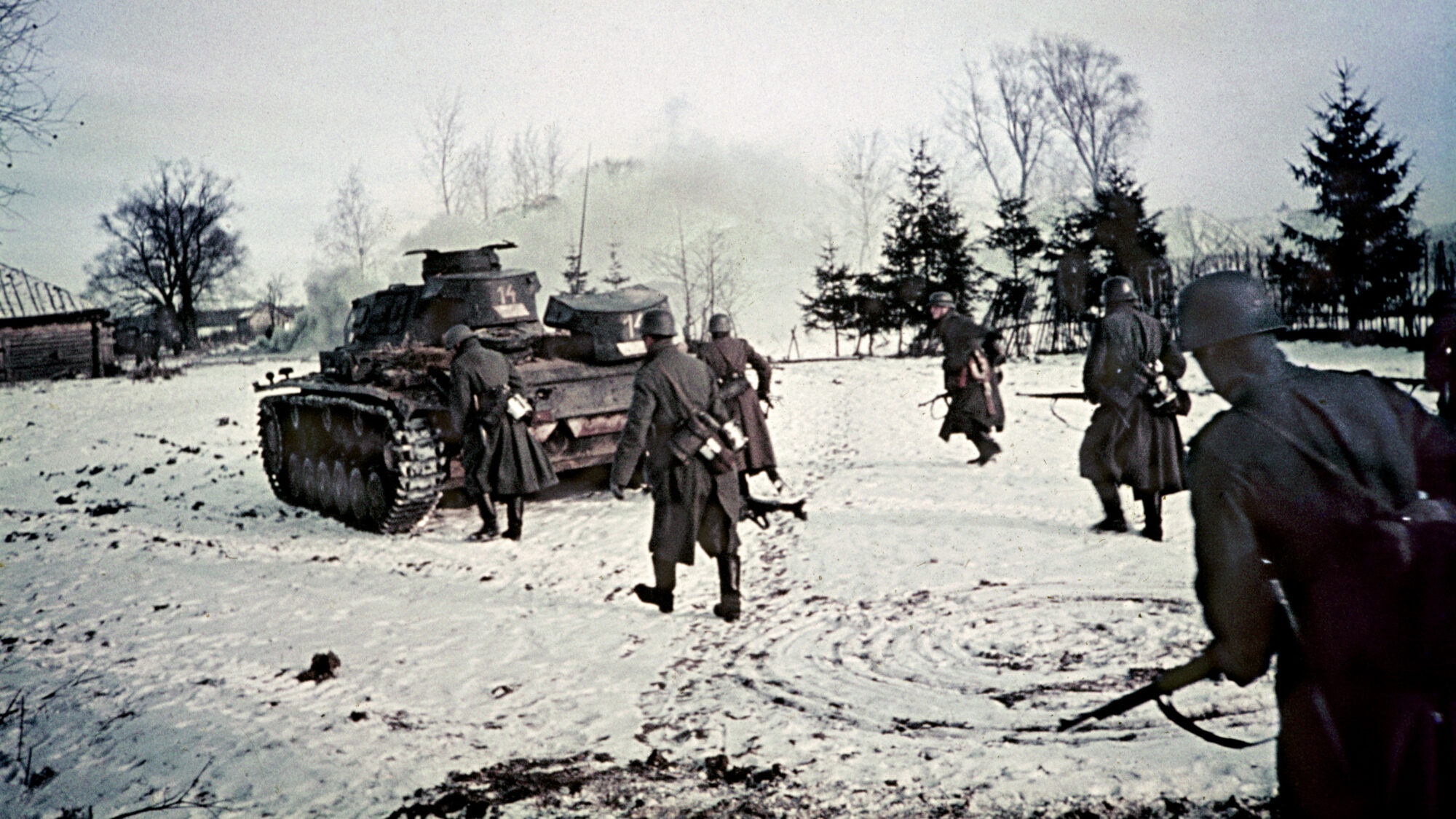
The Battle of Moscow: WWII’s First Critical Turning Point
When German armies invaded the USSR in 1941, Hitler thought victory would be quick and easy. It was neither.
This article appears in: Spring 2019
By Jeff Chrisman
Many consider the Battle of Moscow in late 1941 to be the first turning point of World War II on the Eastern Front . Some even consider the battle for Moscow as the only opportunity for the Germans to prevail in the East. By the middle of 1942, the Soviets had organized enough troops under arms that the Germans could not hope for anything better than a negotiated peace.
Even if the Soviet recapture of Stalingrad in 1942 had never happened and the Battle of Kursk in 1943 had been a German victory, Hitler still could not have won a total victory against the Soviets’ overwhelming numbers.
But, had the Germans been able to take Moscow, or isolated it very early, they might have dropped the Soviets to their knees and forced them to negotiate a cease-fire or perhaps even concede defeat.
After the war, German Field Marshal Albert Kesselring , commander of the Luftwaffe units assigned to Army Group Center, wrote: “The capture of Moscow would have been decisive in that the whole of European Russia would have been cut off from its Asiatic potential and the seizure of the vital economic centers of Leningrad, the Donets Basin, and the Maykop oil fields in 1942 would have been no insoluble task.” (Get a full view of the most ambitious military operation in the history of warfare inside our Operation Barbarossa special issue.)
Why Moscow Was So Important—To Everyone Except for Hitler
Moscow was the center of the Soviet empire. All government offices were there, and it was the main logistics hub and heart of communication and command for all the armed forces. Moscow was at the center of everything, and the Soviets would have been hard pressed without it. Fortunately for them, it never came to that, but it was close—very close.
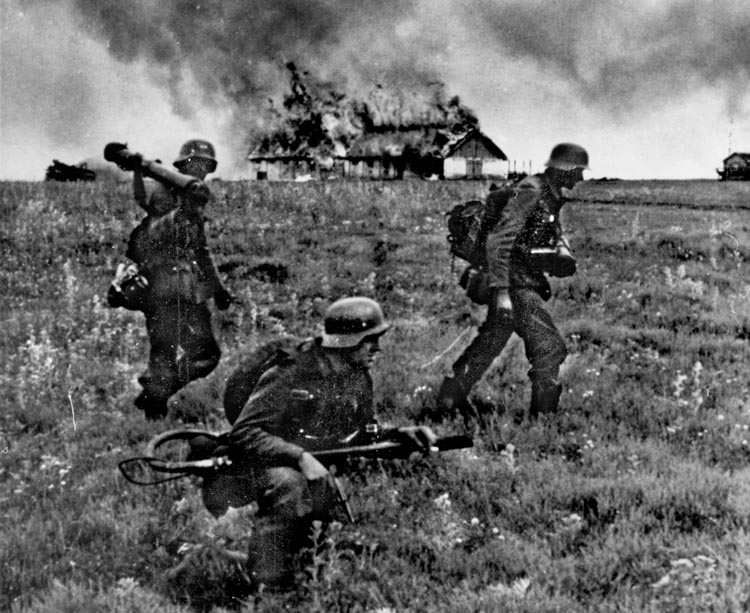
On June 22, 1941, the German Army attacked the Soviet Union with three army groups on a Continent-wide front from the Baltic coast in northern Lithuania south some 900 miles to the Black Sea coast in southern Romania. German Army Group Center was situated between Army Group North and Army Group South and, at that time, was the strongest of the three. In the first four weeks of the war, Army Group Center surged eastward some 400 miles through Belorussia and then captured Smolensk, a regional administrative city in western Russia only 234 miles from Moscow.
At that point Hitler wasn’t really sure what to do next, but General Franz Halder, chief of staff of the Army High Command (OKH), and Field Marshal Walter von Brauchitsch, commander of the German Army, knew just what to do: take Moscow! However, Hitler, calling Moscow “merely a mark on a map,” demurred. Instead, he ordered Army Group Center (AGC) to send half of its armored forces, Panzer Group 2, south to help Army Group South (AGS) capture the Ukraine, and the other half of its armored forces, Panzer Group 3, north to help Army Group North (AGN) take Leningrad.
The leaders of AGC were aghast. Army Group commander Field Marshal Fedor von Bock and his armored commanders, General Heinz Guderian of Panzer Group 2 and General Hermann Hoth of Panzer Group 3, protested loudly.
All had envisioned Moscow as their ultimate goal from the beginning and were stunned to find that Hitler didn’t agree. They all lobbied Hitler at every chance, individually and in groups, but to no avail. Once Hitler had made up his mind about something, he seldom, if ever, changed it, and so it was this time as the panzer groups were sent on their divergent ways on August 23.
On September 6, Hitler released Directive #35 for the continuation of the war in the East: “In the sector of Army Group Center. Prepare an operation against Army Group Timoshenko (Soviet West Theater) as quickly as possible so that we can go on the offensive in the general direction of Vyazma and destroy the enemy located in the region east of Smolensk by a double envelopment by powerful panzer forces concentrated on the flanks.”
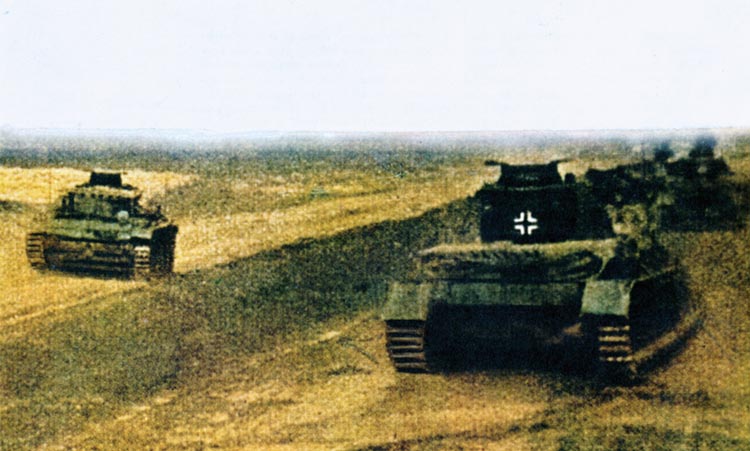
Still no mention of an attack on Moscow but at least it wasn’t precluded. AGC commander Bock and Army Chief of Staff Halder agreed that even though Moscow had not been mentioned, it was, in fact, the objective.
Ten days later, having received news of 2nd Panzer Army’s successful operations in Ukraine, Bock enlarged his army group’s mission. In addition to the encirclement east of Smolensk, Bock added another encirclement, this one in the area of Bryansk, to the south.
By the fourth week of September, all the operations on the flanks had run their course, and the armored units were returned to AGC command to begin realigning for the continuation of the attack eastward. Panzer Group 3’s attack to the north had been only marginally successful, and AGN never did capture Leningrad. But Panzer Group 2 became an integral part of the AGS’s swift capture of the Ukraine, destroying six Soviet armies and eliminating 665,000 enemy troops.
The 3rd and 4th Panzer Armies Mobilize
Up to this point, the Germans had been dominant; they had overrun or encircled nearly all the enemy they engaged. But the troops were becoming exhausted, and the equipment was badly in need of repair or replacement. Some of the panzer divisions did receive a few replacement tanks, but most other equipment was nearly worn out.
For the continuation of the attack, Army Group Center deployed a total of six armies—9th, 4th, and 2nd, as well as Panzer Groups 2, 3, and 4. All three panzer groups were the size of an army and would be renamed as panzer armies over the next three months, so for clarity here they will all be referred to as panzer armies. AGC had a total of 1,929,406 men in 49 infantry divisions, 14 panzer divisions, eight motorized divisions, and one cavalry division, with more than 1,000 tanks, 14,000 artillery pieces, and 1,390 combat aircraft.
AGC held a 450-mile-long north-south front about 200 miles west of Moscow. The 9th Army was deployed on the northern flank of the army group from Andreapol on the Daugava River northeast of Toropets, south to Berezhok on the Dnieper River 23 miles east of Smolensk.
The 3rd Panzer Army was deployed near the center of 9th Army, east of Velizh. South of 9th Army and in the center of the AGC front was 4th Army; its front ran south from Berezhok to Yekimovichi on the Desna River northeast of Roslavl.
The 4th Panzer Army was on the 4th Army’s southern flank; its front ran from Yekimovichi south along the Desna to near Zhukovka, while 2nd Army held the front south from Zhukovka to Pochep on the Sudost River southwest of Bryansk. The 2nd Panzer Army front ran south to the Army Group South front near Romny.
Facing the AGC attack and defending the western approaches to Moscow was the West Theater, commanded by Marshal Semen Timoshenko, composed of three Soviet fronts, a Soviet front being equivalent to a German army group. Combined, the three fronts had 1,250,000 men in 85 rifle divisions, eight cavalry divisions, four mechanized divisions, one tank division, and 14 tank brigades. Combined they had 7,600 artillery pieces, almost 1,000 tanks, and more than 360 aircraft.
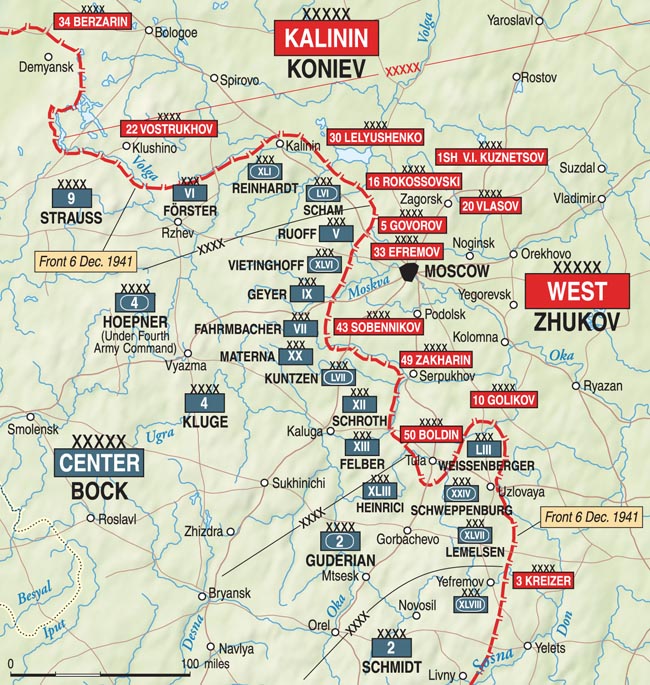
On the northern flank, facing 9th Army and 3rd Panzer Army was the Soviets’ Western Front with six armies: 22nd, 29th, 30th, 19th, 16th, and 20th. The Reserve Front had two Armies in the front line: 24th and 43rd south of the Western Front, facing the German 4th Army and 4th Panzer Army, and four Armies: 31st, 49th, 32nd, and 33rd lined up behind the Western Front in reserve. The southern end of the Soviet line was held by the Bryansk Front with three Armies (50th, 3rd, and 13th) facing the German 2nd Army and 2nd Panzer Army.
At the southern end of the attack front, 2nd Panzer Army was the farthest from Moscow at just over 300 miles, and it began the attack on the Soviet capital, Operation Typhoon, on September 30, two days earlier than the rest of the army group. In the center of the 2nd Panzer Army attack, XXIV Panzer Corps, at Glukhov, stepped off at first light on the 30th. All of the German panzer corps started the war as motorized corps, but all were eventually renamed as panzer corps, so for clarity here all will be referred to as panzer corps.
Exploding Dogs?
The corps’ lead element, 3rd Panzer Division, quickly became the first unit to encounter two of the Soviets’ new weapons of war. The division’s tanks were maneuvering across an open field when several dogs were spotted running loose. Closer inspection through field glasses revealed something strange; all the dogs had small sticks sticking up from their backs. One of the nearby dogs was shot and exploded! Exploding dogs?
The Russians had strapped TNT to the dogs’ backs with triggers attached to the sticks and had trained the dogs to run underneath a tank to find their food. When they did, the sticks were pushed back and tripped the explosives. The tankers had no choice but to shoot all the dogs.
As the dogs were being dealt with, their Russian handlers fled and called in another new Russian innovation. Suddenly, an eerie howling sound filled the air and the entire field erupted in a series of explosions—Katyusha rockets. This was Russia’s first use of the multiple-launch rockets, which were launched from racks on the back of an ordinary truck. Each truck could launch as many as 16 rockets at a time, and each rocket delivered 11 pounds of high explosive.
The “mine dogs” had little future as word of their dangerous mission quickly spread. The Katyusha rockets, on the other hand, became quite useful, and their numbers multiplied rapidly. The Germans even deployed their own multiple rocket system, the Panzerwerfer, a year and a half later. The first day of Operation Typhoon had demonstrated two innovative new ways for the Russians to kill an enemy. The Germans could only guess what surprises succeeding days might bring.
Prelude to the Battle of Moscow: the Germans Caught Sevsk Completely Unawares
The 3rd Panzer Division quickly recovered and captured Sevsk on October 1, while its running mate, 4th Panzer Division, surged 130 miles and got its own surprise as it reached Orel on October 3. The public transportation trams were still running—and full of commuters, as if it were peacetime!
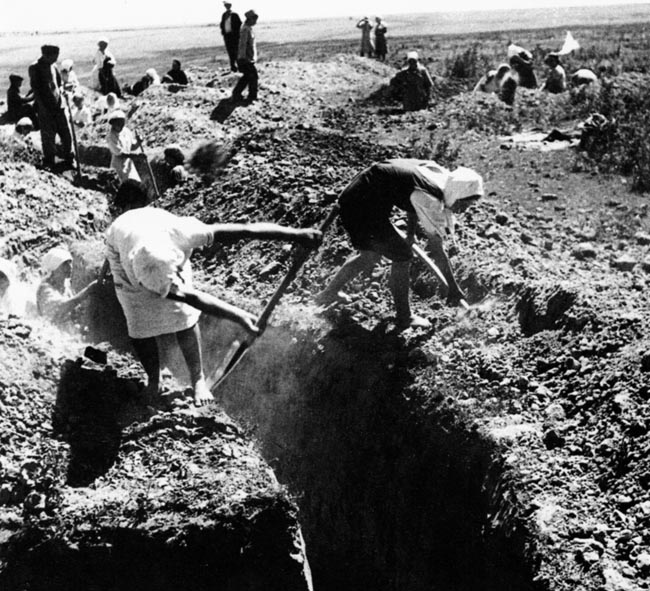
They also found great stocks of machinery on pallets along the roadside, waiting for relocation to the east and out of harm’s way. The division’s advance had been so rapid that it had outrun its own supply and had to wait in Orel for fuel to be airlifted in.
Soviet Bryansk Front commander General Andrei Eremenko thought that this attack on his southern flank was nothing but a diversion by a single corps, that the German main attack would come farther north near Bryansk. Consequently, he sent no forces south to reinforce the failing defenses there. Unfortunately for Eremenko, Guderian’s XXXXVII Panzer Corps, following behind XXIV Panzer Corps, abruptly wheeled north at Sevsk and surged toward Bryansk from the south.
As 2nd Panzer Army units surged through the Bryansk Front lines, Soviet Premier Josef Stalin became alarmed. He summoned one of the few armored leaders available, Maj. Gen. Dmitri Leliushenko, and sent him to Mtsensk on the Orel-Tula-Moscow road with orders to stop Guderian and push 2nd Panzer Army back. He sent a motorcycle regiment, the only troops at hand, with Leliushenko and told him that more troops would meet him at Mtsensk.
As he moved through the industrial city of Tula, Leliushenko commandeered all the guns at the artillery school there, but there were no tractors to tow the guns, so he also commandeered sufficient buses from the Tula Municipal Bus Line to tow them.
Stalin dispatched the 1st Tank Brigade to Leliushenko in Mtsensk the next day, and on the evening of October 6 it smashed into XXIV Panzer Corps units still awaiting fuel in Orel and dealt them significant losses.
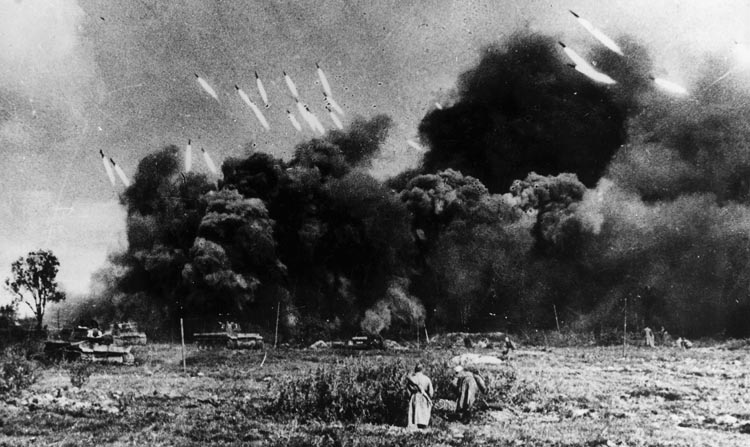
The rest of Army Group Center joined the attack on October 2 with the 3rd and 4th Panzer Armies leading the way. Late on October 3, 3rd Panzer Army’s LVI Panzer Corps captured Kholm-Zirkovski and two undamaged bridges over the Dnieper River. The next day, 4th Panzer Army’s XXXXVI Panzer Corps captured Spas-Demensk, and then on October 5 its XXXX Panzer Corps captured Yukhnov, just 110 miles from Moscow. The Soviets moved mostly by foot and simply couldn’t keep pace with the panzers. Then it started to rain.
On October 6, XXXXVII Panzer Corps’ 17th Panzer Division captured Bryansk and two undamaged bridges over the Desna River, as well as the headquarters of the Soviet Bryansk Front. Fortunately for the Soviets, most of the front’s command staff and its commander escaped.
Even greater satisfaction was gained that day by 3rd Panzer Army and 4th Panzer Army when their units converged on Vyazma and completed the encirclement of four Soviet Armies: 16th, 19th, 20th, and 32nd.
Hitler’s War Machine Makes it Halfway to Moscow
The 3rd Panzer Army was now operating with a new commander. Col. Gen. Hermann Hoth was transferred to Poltava on October 5 to take over the 17th Army of Army Group South. General of Panzer Troops Georg-Hans Reinhardt replaced Hoth at 3rd Panzer Army and the commander of the 3rd Panzer Division, while General of Panzer Troops Walter Model replaced Reinhardt at XXXXI Panzer Corps.
Much of the southern half of the attack front had been suffering through intermittent rain for the past few days, but that changed to snow, the first snow the Germans experienced in Russia. But that didn’t mean an improvement in the ground conditions, where the mud grew deeper with each passing vehicle.
The 2nd Army infantry units began catching up with the armored advance by October 6, as its XXXXIII Corps captured Zhizdra on the Moscow highway northeast of Bryansk. Two days later units from 2nd Panzer Army’s XXXXVII Panzer Corps to the south contacted the 112th Infantry Division in Zhizdra, encircling the Soviet 50th Army. The remainder of the Soviet Bryansk Front, 3rd Army and 13th Army, were simultaneously being encircled at Trubchevsk, southwest of Bryansk.
Barely a week into their offensive the Germans were halfway to Moscow, having eliminated seven enemy armies in three great encirclements. Many Soviet troops were able to find their way out of the encirclements, but it is estimated that the Soviets lost close to a million men.
Now the snow had turned back into rain and sometimes came down in sheets, producing torrents of mud. German wheeled vehicles had to be abandoned, horses sank up to their bellies in the muck. All units began building corduroy roads, laying cut-down tree trunks side by side in a laborious process. The movement of supplies, including gasoline and ammunition, became difficult.
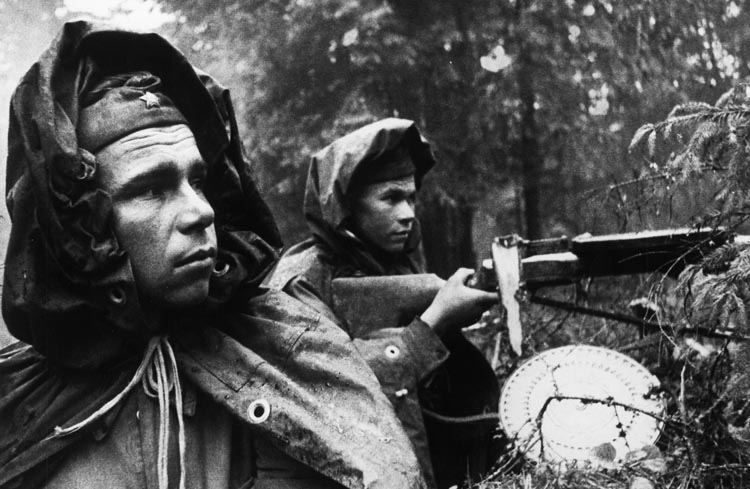
The weather was not as bad on the northern flank, but the ground conditions there were more difficult. Dense forest surrounds primordial swamps for miles on end, constricting traffic to major chokepoints. On October 8, the 9th Army’s VI Corps and 3rd Panzer Army’s XXXXI Panzer Corps were directed to turn north to assist the infantry units trying to advance there.
On the 10th they captured Sychevka, a railroad center on a main north-south line. One of the biggest problems they dealt with was abandoned Soviet cars and trucks blocking the few roads for miles; the rail line gave them a chance to work around that problem.
The BBC, on their October 10 evening newscast, announced the German victory at Vyazma, calling it Hitler’s most successful victory of the war and stating, “It had always been believed that the door to Moscow had been firmly barred. That obviously, is not the case!”
Leaders in Moscow had no clue what was happening on their Western Front; unlike the Bryansk Front, there had been no reports of the attack from either the Western Front or the Reserve Front. When stragglers from the Reserve Front reached Maloyaroslavets and reported on the situation, their information was discredited and they were jailed as panic mongers.
Unknown to Moscow, all long-distance telephone facilities in the West had been disrupted. The Soviet command relied heavily on telephone communication, and most higher headquarters had no long-range radios because of a widespread fear of German signal intercept capabilities.
When the Soviet monitoring service reported on Hitler’s radio address to the German people about the attack, the Soviet leaders were incredulous. Aerial reconnaissance planes returned with word of massive German tank columns surging past Spa-Demensk and Yukhnov. Marshal Boris Shaposhnikov, chief of the general staff, still didn’t believe it, so more flights were sent to verify the reports. Finally, although he was still confused and doubtful, Shaposhnikov went to Stalin with the news.
Later that day, phone communications with the Reserve Front were temporarily restored, and Stalin got through to the front headquarters. General Semyon Budenny, the front commander, was missing in action, but his chief of staff confirmed Stalin’s worst fears. The next day Stalin ordered General Georgi Zhukov, who had been commander in chief of the Leningrad Front for less than a month, to Mozhaisk to get a clear picture of the situation.
After reporting his findings to Stalin by phone, Zhukov learned that he had been made the new commander of the Western Front and that the surviving Reserve Front forces would be incorporated into the Western Front. Stalin ordered Zhukov to establish a defensive line at Volokolamsk-Mozhaisk-Maloyaroslavets and hold it.
Stalin Prepares for the Battle of Moscow
Stalin started gathering forces from all over the USSR for the defense of Moscow and quickly ordered 14 new rifle divisions, 14 new tank brigades, and 40 new artillery regiments dispatched to hold the Mozhaisk defensive zone. He also mobilized the civilian population of Moscow; some quarter of a million civilians, most of them women, commenced digging trenches and antitank ditches for the Moscow Defensive Zone.
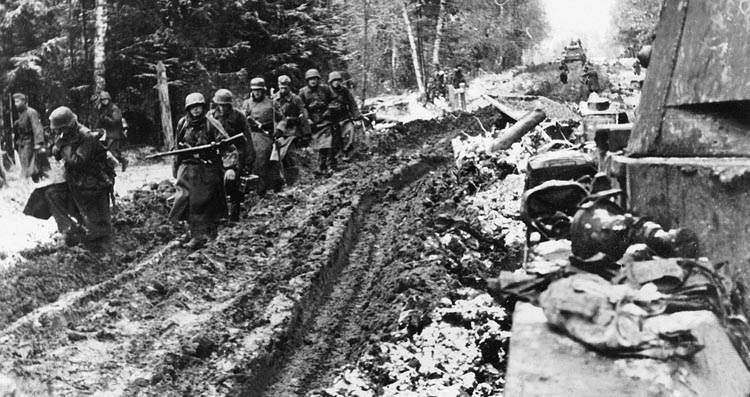
Fuel was still a problem for the Germans and became so bad that 3rd Panzer Army’s XXXXI Panzer Corps consolidated all of its fuel and formed a special motorized Kampfgruppe with infantry, tanks, and artillery. The Kampfgruppe’s mission was to capture Kalinin, 90 miles to the northeast, and its bridge over the Upper Volga River. Making excellent progress it approached the great bridge in the early morning darkness of the 13th. The dispirited Soviet guards unit didn’t even put up a fight, leaving guns, equipment, and supplies, as it fled.
But now the poor weather spread over the northern flank, too. The rain changed to sleet, then snow, then back to rain, incessantly for days. The fall muddy season, or the “Rasputitsa,” as it is known in Russia, began in mid-October and quickly became more severe than any other in memory. Armored and motorized units couldn’t move; the infantry units slowly began to overtake the stranded mobile formations, but even walking was difficult.
On the south flank, XXIV Panzer Corps’ 4th Panzer Division was still struggling against the same problems: mud and lack of fuel. A small amount of fuel had been flown to them in Orel, allowing them to push up the road toward Mtsensk, but the armored units that Stalin had sent to block their advance did just that. The Soviet 1st Tank Brigade’s T-34 tanks, with their wider tracks, were able to maneuver in the mud while the German tanks couldn’t, and they would hit the 4th hard from one direction, then move to another angle and hit them again.
On October 12, XXIV Panzer Corps commander General Leo Geyr von Schweppenburg requested permission to pull his few remaining 4th Panzer Division tanks out of the Mtsensk battle, turn it over to his panzergrenadiers, and await reinforcements and supplies. With his units spread all over sealing pockets and held up by the mud and the lack of supplies, General Guderian agreed.
In the center of the army group attack front, 4th Army continued struggling through the mud eastward. The XIII Army Corps captured a bridge over the Ugra River just west of Kaluga on the 10th, then captured Kaluga and its bridges over the Oka River two days later. On October 14, the LVII Panzer Corps’ 3rd Motorized Division captured Borovsk, barely 52 miles from Moscow.
The German Advance Gets Stuck in the Mud
But the mud ground all operations to a halt. The only things still mobile were the small local “panje” carts, with their two big wooden wheels pulled by a small native pony. Robbed of their mobility, German units were strung out over hundreds of miles of sodden, soupy landscape with troops from different units mixed together.
Mother Nature had accomplished what the Soviets couldn’t: bring the German advance to a halt. Only when the ground had frozen completely could the assault be resumed in earnest. Unfortunately for the Germans, the soggy ground was not their only problem as the weather grew colder. Not only were their uniforms in tatters, they were summer uniforms. There was no winter clothing. They resorted to stripping the enemy of their heavy coats and hats. Hitler had expected that Operation Barbarossa would be successfully wrapped up in just a few months, so no preparations for dealing with cold weather were made.
Another growing problem was the flood of Soviet troops without organization or guidance across the landscape. Having individually escaped encirclement or just gotten separated from their units, they were still armed, and most knew the lay of the land better than the Germans. They struggled to reach their own lines that they only knew were somewhere to the east and were a constant threat, moving behind the Germans who faced their known enemy in the east.
After a bitter two-day battle, troops of the SS Division “Das Reich” of the 4th Panzer Army captured Borodino on October 15, just 66 miles west of Moscow. Borodino was famous as the site of Napoleon’s pyrrhic victory on the way to defeat at Moscow in 1812. The division commander, SS Obergruppenführer Paul Hausser, known as “Papa Hausser” as the founder of the Waffen SS, was badly wounded in the head and lost his left eye.
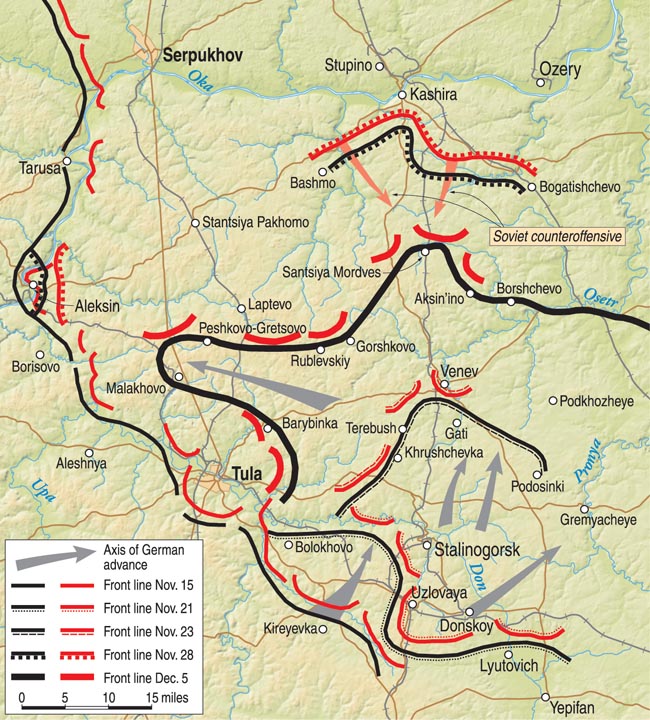
On October 17, panic spread through Moscow as the Soviet government offices begin to evacuate to Kuybyshev, widespread looting took place, party members were attacked in the street, and civilians begin to flee the city. The government quickly declared marshal law.
Stalin Tries to Hold the Line Outside Moscow
Also on the 17th, Stalin created a new front, the Kalinin Front, intended to force the Germans out of its namesake city and hold the vital northwestern corner of the Moscow defense line. The front was to be made up of four of the Soviet armies that had escaped encirclement and were commanded by the former commander of the West Front, General Ivan Konev.
By the third week in October, many of the pockets of encircled Soviet troops behind German lines had surrendered, freeing German troops to move up to the front. Of course, they still had to deal with their most vexing problems: the shortage of fuel, food, and ammunition, not to mention the Soviet defensive front, which was growing stronger by the day.
The center of the German attack still advanced, but only slowly as the mud became deeper and enemy defenses stronger. On the 18th, the German 4th Army came up against the still-forming “Mozhaisk Defensive Zone” when they took Maloyaroslavets and the next day when 4th Panzer Army captured Mozhaisk. On the 22nd, the 4th Army captured a bridgehead over the Nara River at Tashirovo, only 38 miles from Moscow. These fierce battles decimated both sides. Regiments were reduced to the size of companies with fewer than 200 men each. But the Germans moved inexorably forward, closing in on Moscow from three sides.
It was a violent days-long struggle for each of these places, where the Germans managed to bring more forces to bear more quickly and ensure victory at that spot. But the Soviets were moving all the forces they could to the Volokolamsk, Mozhaisk, Maloyaroslavets, and Kaluga axes, as these were the main access points west of Moscow.
On the southern flank of the attack, units of 2nd Panzer Army were still able to advance slowly in fits and starts, but they still had the farthest to go. General Guderian had taken all the tank forces of his XXIV Panzer Corps—panzer regiments from its 3rd and 4th Panzer Divisions, as well as a battalion of tanks from the 18th Panzer Division—and combined them with the elite Grossdeutschland Panzergrenadier Regiment and an artillery regiment into a single attack force, all under the command of Colonel Heinrich Eberbach, panzer brigade commander of the 4th Panzer Division. With Kampfgruppe Eberbach, they could pool the paltry supplies of the corps and remain in action.
Once the combat bridging equipment had finally slogged forward through the mud, the engineers were able to construct a bridge over the Susha River just north of Mtsensk; Kampfgruppe Eberbach was able to cross on the 23rd. This flanking movement prompted the Soviet 1st Tank Brigade to pull its heavy tanks out of Mtsensk.
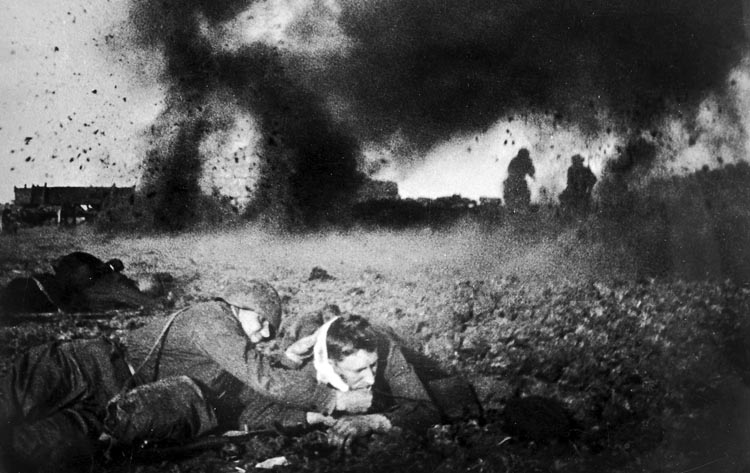
The next day Kampfgruppe Eberbach, bypassing Mtsensk, seized Chern, 159 miles from Moscow. This left the large blocking force that the Soviets had installed in Mtsensk with nothing to block.
Pushing up the Tula highway and pursuing the troops retreating from Mtsensk, Eberbach seized Yasnaya Polyana on the 28th—only 111 miles south of Moscow. The only reason that they were able to advance at all is that they could use the hard-surface Kharkov-Orel-Tula-Moscow highway as well as the railroad tracks, which paralleled the highway for much of its run.
In the middle of the 20th century, parts of Russia were still fairly primitive. Most roads were nothing more than dirt pathways, the main roads between towns being hard, compacted earth. Hard-surface macadam roads were limited to those routes connecting Moscow to a handful of large cities.
On October 28, the 9th Army was ordered to go on the defense along the northern flank of the advance. It was to tie in with 3rd Panzer Army at Kalinin and AGN to the west near Ostashkov and protect the army group’s advance from the north.
In the last week of October, the 2nd Army was transferred to the southern flank of the army group, taking command of the XXXIV and XXXV Army Corps and the XXXXVIII Panzer Corps that were already there. This allowed the 2nd Panzer Army to concentrate on the Moscow offensive while 2nd Army concentrated on clearing the southern flank of the army group and maintaining contact with Army Group South.
Although the XXXIV and XXXV Army Corps, as well as the XXXXVIII Panzer, were mostly immobilized by the mud in the wide-open spaces between Orel and Kursk, they devised a plan to utilize a captured Soviet armored train to attack Kursk and secure the Orel-Kursk rail line. Colonel Carl Andre, with two reinforced battalions from his 521st Infantry Regiment, was placed in command of the captured train while other troops from the 296th Infantry Division manned the train’s guns.
The Germans Approach a Lightly Defended Kursk
On November 2, while the armored train successfully secured the rail line, XXXXVIII Panzer Corps troops approached Kursk slowly from the northwest. To everyone’s surprise, most of the Soviet troops in Kursk had already withdrawn, and the remaining troops did so as the Germans arrived. This was fully a year and a half before that name would be written near the top of the list of great battles in the war.
The 4th Army attack, in the middle of the army group, slowed to positional warfare by the end of October. The combination of the mud, dwindling supplies, and stiffening enemy resistance left the commander, Field Marshal Gunther von Kluge, with no choice.
The 4th Panzer Army was similarly affected as its advance slowly ground to a halt. The slow but steady German advance against determined resistance was a war of attrition. The troops were just about spent. Just moving around in the knee-deep mud was exhausting.
Hitler’s “Continuation Plan” for the Encirclement of Moscow
During the second week of November, with most of their forces stuck in the mud, the German generals were making plans for the continuation of the attack once the ground froze. Halder, after a conference with principle staff officers of the army group, realized that it was weaker than he had thought and that it would not be able to take Moscow in 1941.
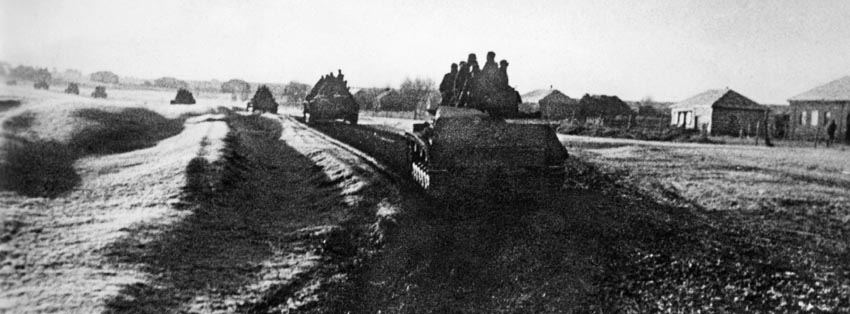
But now Hitler was adamant. Moscow must be taken! He saw that the morale of the German public was waning because earlier pronouncements had raised expectations that weren’t being met. Moscow must be taken or at least isolated to reassure the German public of Hitler’s strength and resolve. Hitler finally came around to the need of taking Moscow just as his leading generals were having second thoughts.
The Continuation Plan called for two mobile groups to strike at the Soviet flanks and encircle Moscow, 3rd Panzer Army on the north and 2nd Panzer Army on the south, meeting in the Orekhova-Zueva area east of Moscow. The 4th Army and 4th Panzer Army were to assault Moscow frontally from the west, drawing any enemy reinforcements away from the flanks while 9th Army and 2nd Army would cover the north and south flanks, respectively.
After a few days’ rest, the troops were refreshed. They had their first hot meal in days and had been resupplied with ammunition and other essentials. They were as ready as they could be.
The ground was beginning to firm up, thanks to continuing cold weather, making movement more possible by the day. But the Germans were also beginning to confront a new obstacle. Fresh Soviet troops from as far away as Siberia had begun manning the defenses around Moscow—well-trained, experienced troops that didn’t panic at the first sight of a German tank.
By the middle of November, the Soviets had an impressive array of 12 armies facing Bock’s troops. The Western Front had the 5th, 16th, 33rd, 43rd, 49th, and 50th Armies lined up from Volokolamsk south to Tula. The Kalinin Front had the 22nd, 29th, 30th, and 31st Armies on the north flank from Volokolamsk north to Kalinin then west to Ostashkov. The newly constituted Southwest Front held the southern approaches from Efremov and Yelets with the 3rd and 13th Armies. These don’t include the 59 rifle divisions, 13 cavalry divisions, 75 rifle brigades, and 20 tank brigades held in reserve, nor the 65,000-man Peoples Militia manning the complex series of barricades and strongpoints ringing Moscow.
The ground became frozen, but the temperature kept right on dropping; -15°C on November 12, -8°C on the 13th, and -13°C on the 14th, making the winter of 1941-1942 one of the most severe on record. The first week of December the low temperature in the western approaches to Moscow dropped 28°C, down to -33°C on December 7.
Engines of all types had to be left running lest they freeze, making gasoline all the more vital, and the mechanisms of guns of all calibers did freeze. Then there was the problem that replaced the mud more directly—snow, and lots of it.
In addition to their growing manpower pool, the Soviets had two major advantages: they fought from well-prepared defensive positions from Kalinin in the north all the way south to Tula while the Germans only dug holes in the snow. And they were supplied through short “inside” lines. They were backed right up to Moscow, from where their supplies came. The Germans were hundreds of miles from their main supply depots and were now depending on air dropped supplies to survive.
To disrupt German efforts to resume the attack, Stalin ordered Zhukov to launch a series of spoiling attacks at the major access points west of Moscow. Zhukov thought that it was too late for that, but he complied. He ordered the 16th Army to attack the north flank of the 4th Panzer Army above Volokolamsk, the 49th Army to attack 4th Army’s southern flank west of Serpukhov, and the 49th and 50th Armies to attack 2nd Panzer Army’s spearheads north and south of Tula.
The 16th Army’s spoiling attack on the 4th Panzer Army included the 3rd Cavalry Corps, which was made up of newly arrived forces from the Far East. On November 17, following up on the slightly successful initial attack, the Corps’ 44th Mongolian Cavalry Division was ordered to exploit that success with an attack on the German 106th Infantry Division near Musino.
A Scene from Another Era: Mounted Soviets Charge the Germans with Extended Sabers
Bent low in the saddle, their sabers thrust high, the division’s 1st Mounted Regiment charged across the fields toward the German position—a scene from the 1800s. Suddenly, the field erupted with explosion after explosion. The 106th’s artillery regiment had the field completely zeroed in; it was only a matter of pulling the lanyards. Men, horses, and pieces of flesh flew through the air in sickening repetition, until there was no longer any movement.
Then, incredibly, the Division’s 2nd Mounted Regiment formed up and charged across the very same field—with the very same result: 2,000 horsemen and their mounts obliterated in a little over a quarter of an hour. The Soviet attack collapsed. The defending 106th suffered no casualties.
The Soviet spoiling attack against 4th Army’s southern flank at Serpukhov fared somewhat better. The XIII Army Corps held the longest front in the 4th Army—nearly 50 miles from Dubrovka on the Nara River east of Maloyaroslavets south to Petrovka on the Oka River southwest of Aleksin—with only three divisions.
The initial attack on November 15 came as a complete surprise. The 5th Guards Division led the attack with its tank battalion and made several penetrations along the northern half of the corps front near Voronina.
Field Marshal von Kluge dispatched parts of several units that had been set aside for the renewal of the offensive to shore up the XIII Corps defense. After three days of desperate combat, they began to push the enemy back. At that point Zhukov sent in a follow-up attack by newly arrived units that once again had the Germans struggling. Fortunately for them, the Soviet attack subsided on the 19th as Zhukov was forced to move units to face the renewed 4th Panzer Army attack against his right flank.
Farther south, Zhukov’s spoiling attack on 2nd Panzer Army bore some fruit on the 17th when elements of the German 112th Infantry Division of the LIII Corps, which had no effective antitank weapons, broke and ran when attacked by T-34 tanks south of Uslovia. Guderian later pointed out that the division had already lost more than 1,000 men to frostbite and that its automatic weapons were inoperable due to the sub-zero temperatures.
In spite of the spoiling attacks, Army Group Center resumed its attack toward Moscow on the morning of November 15. The XXVII Army Corps, on the right wing of 9th Army, surged southeast from Kalinin along the southern bank of the Volga River to its confluence with the Lama River near Redkino.
The 3rd Panzer Army also attacked that day when the LVI Panzer Corps troops struck out from their positions north of Volokolamsk near Lotoshino, eastward toward the Kalinin-Moscow highway. The 6th Panzer Division pushed ahead of the others and crossed the Lama River the next day. On the 17th, the 6th Panzer contacted XXVII Army Corps units on the Kalinin-Moscow highway near Savidovo.
The 4th Panzer Army was not able to resume the attack on the 15th as it was still busy trying to handle the Soviet spoiling attack on its northern flank. It was the same in the 4th Army sector, where they were trying to keep enemy attacks from overwhelming their southern flank.
In the panzer army zone, most of its units were unable to resume the assault on the 15th because they, too, were still under attack; XXXXIII Army Corps had been under intense attack just south of Aleksin by the Soviet 49th and 50th Armies since November 11, and LIII Army Corps was still dealing with the enemy spoiling attack. On the 18th, the XXIV Panzer Corps was finally able to resume its attack south of Tula toward Venev. In a surprise move, panzer corps units quickly captured Dedilovo and the only intact bridge over the Upa River.
On the far southern flank of the army group, 2nd Army’s XXXIV Army Corps also resumed the advance on the 15th against light opposition, quickly occupying Ponyri in the afternoon. The XXXV Army Corps joined the attack on the 18th, pushing eastward from Novosil against only moderate resistance.
A Serious Supply Issue Hits the German Advance
Although the ground was frozen and motorized traffic was once again able to move, the supply situation was still critical, and units were stranded for lack of gasoline. Then there was the continuing problem of the weather. Fresh snow fell virtually every day, quite often in blizzard conditions, and snow depths of one to two feet were not uncommon.
The 4th Panzer Army was finally able to resume its attack on the 18th, at least with its three left flank corps—XXXX and XXXXVI Panzer Corps and V Army Corps—but ran into a very stubborn enemy entrenched in deep, fortified emplacements. After three days of slugging in brutal weather conditions, they had gained only four miles on average.
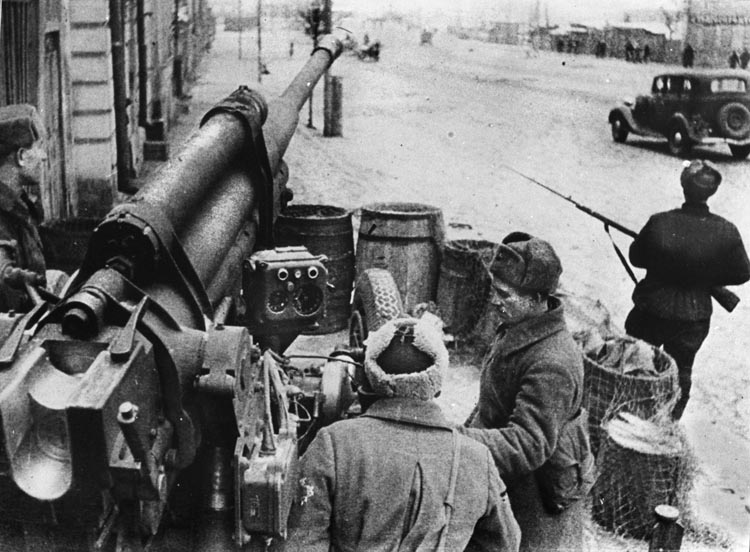
Frustrated, General Hoepner threw in his last reserves, and in two days they surged 14 miles through the seam between 16th Army and 30th Army. When they could not be contained, Zhukov had no reserves on hand to throw at them because he had used them all in the Stalin-ordered spoiling attacks.
General Halder called Bock on the 18th wanting to know why 4th Army had not resumed the attack. Bock told him that 4th Army was still fending off the strong Russian attacks on its southern flank and that von Kluge had sent his only reserves there. Bock counseled patience and told Halder that von Kluge would resume the offensive just as soon as he could. Bock and Halder agreed that both combatants were near the end of their strength and that victory would go to the side with the strongest will.
The 9th Army, on the AGC northern flank, went over to the defense on the 19th. The 9th was holding a northeast-facing front along the Volga River from Savidovo northwest to Kalinin then west about 100 miles and connecting with Army Group North near Ostashkov. There was little offensive action on that front; they were just guarding the back of the army group units attacking toward Moscow.
By November 20, the remainder of 3rd Panzer Army’s LVI Panzer Corps had closed up with the 6th Panzer Division on the Kalinin-Moscow highway and turned south. Two days later they captured Klin, 47 miles north of Moscow.
If LVI Panzer Corps could continue south, it could possibly slice in behind the Soviet 16th Army troops fighting 4th Panzer Army troops to the southwest. This wasn’t lost on the Soviets, who quietly began looking over their shoulder.
Not surprisingly, the 4th Panzer Army began pushing steadily forward. On the 18th, XXXX Panzer Corps units captured Mozhaisk, and on the 21st, XXXXVI Panzer Corps units captured Novopetrovskoye, only 42 miles from Moscow.
It was on the army’s northern flank, farthest from Moscow, where the V Army Corps was able to move forward the most quickly. It reached the Kalinin-Moscow highway about 10 miles south of Klin on the 21st, turned south, and on the 23rd captured Solnechnogorsk, just 32 miles from Moscow. That same unit, 2nd Panzer Division, captured Krasnaya Polyana two days later and stood only 15 miles north of Moscow.
With the 4th Panzer Army units moving south on the Kalinin-Moscow highway, Bock changed the orders for 3rd Panzer Army. Rather than continue south on the highway behind 4th Panzer Army, they were now to turn east and push as far as possible while still covering the 4th Panzer Army’s left flank.
The southern half of the encirclement attack was also picking up speed. The 2nd Panzer Army’s XXIV Panzer Corps, after a vicious fight, captured Uslovia on the 20th, then Novomoskvosk on the 22nd and Venev on the 24th. Likewise with the XXXXVII Panzer Corps on their right, which captured Efremov on November 20 and Michailov on the 24th. But Guderian told Bock that fresh, well-armed Siberian troops “keen for battle” were flooding in on his eastern flank.
On November 27, Bock ordered Guderian to forget about striking northeast for the moment and concentrate on taking Tula, the long festering sore that was the anchor for the Soviets on the southern flank of Moscow. The Soviet 50th Army had been holding Tula since the beginning of the German attack and had launched almost daily attacks against the 2nd Panzer Army as it closed in.
Tula was not encircled, but the 2nd Panzer Army held three sides around it with a 30-mile-wide opening on the north. The current plan was for 2nd Panzer Army’s XXXXIII Corps to attack toward the east from Aleksin and meet XXIV Panzer Corps units attacking from the east, closing the encirclement.
The Luftwaffe’s Role in the Battle of Moscow
The Luftwaffe also played a significant part in German operations in Russia. Air Fleet 2, commanded by Field Marshal Albert Kesselring, was attached to Army Group Center from the beginning, and his Junkers Ju-87 Stuka ground attack aircraft led almost every large assault that the Germans undertook. In addition to leading the ground assault, by the end of November Air Fleet 2 had destroyed 6,670 Russian aircraft, 1,900 tanks, 26,000 motor vehicles, and 2,800 trains.
Surprisingly, at the end of November, Air Fleet 2 was transferred to Italy to help the flagging Axis effort in the Mediterranean. This, of course, left AGC drastically short of combat aircraft. Consequently, the Red Air Force immediately claimed air superiority and would hold it for the foreseeable future.
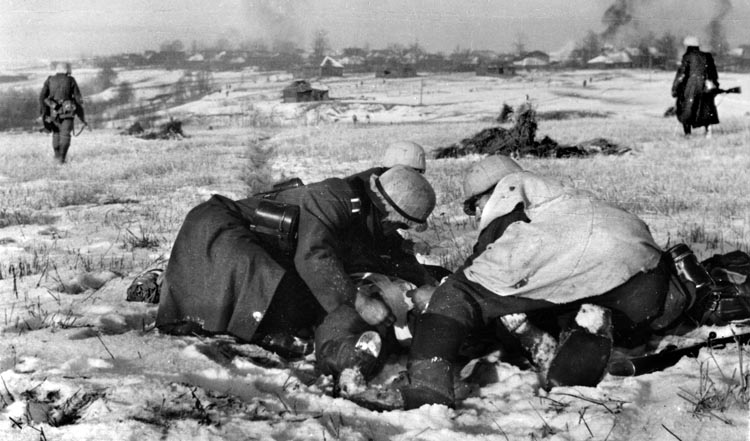
While 4th Panzer Army’s V Army Corps moved south on the Kalinin-Moscow highway, 3rd Panzer Army pushed east behind it. That was when something unusual happened, something that no one could recall ever happening during this campaign. As German units neared, the Soviets withdrew without putting up a fight, and they didn’t burn down the villages as they left. Some thought that they must be expecting to return soon; others thought they were becoming disillusioned and were just in a hurry to get out. Units of the LVI Panzer Corps soon reached the Volga-Moscow canal near Dmitrov, 37 miles due north of Moscow.
With 4th Panzer Army having opened a gap between the Soviet 16th and 30th Armies and 3rd Panzer Army quickly moving eastward through the gap, a crisis erupted in Moscow. The 3rd Panzer Army’s move pushed the Soviet 30th Army into the corner between the Volga River on the north and the Volga-Moscow canal on the east—thus opening a 27-mile gap in Russian lines between 3rd Panzer Army at Dmitrov on the canal and 4th Panzer Army at Krasnaya Polyana.
It is not clear whether the Germans realized their opportunity, but LVI Panzer Corps’ 7th Panzer Division quickly grabbed a bridgehead over the canal at Jakhroma, four miles south of Dmitrov. Army Commander Reinhardt wanted to attack eastward, but Bock ordered him to continue south, west of the canal, covering 4th Panzer Army’s left flank.
“Doubts of Success Are Beginning to Take Definite Form”
On the 28th, the 4th Panzer Army’s XXXX Panzer Corps, closing in from the northwest, captured Lenino, 18 miles from Moscow. Two days later, XXXXVI Panzer Corps’ 11th Panzer Division captured Kryukovo, just 16 miles from Moscow.
That same day a combat group from V Army Corps’ 2nd Panzer Division, fighting its way south on the Kalinin-Moscow highway, reached Ozeretskoye, the terminus of the Moscow tram system, and Lobnja, where they blew up railroad tracks just 13 miles from Moscow. Late in the day a motorcycle patrol from the division reached Khimki, barely six miles from Moscow. If the troops could continue the pressure, Moscow could be theirs.
Not only that, but 4th Army finally joined the attack on December 1, and on the 2nd XX Army Corps units captured Yushkovo, 23 miles southwest of Moscow. That prompted Bock to tell his army commanders that the enemy was close to breaking. With all his armies on the attack and closing in on Moscow, Bock had every reason to be optimistic.
Stalin then released two new armies: the 20th Army and the 1st Shock Army, to Zhukov to fill the gap between the 16th and 30th Armies north of Moscow. They would fill in along the entire front from north of Dmitrov south along the canal to the Lobnja area, then in an arc to the west and southwest to the Smolensk highway near Kubinka.
The 2nd Army, on the far south flank of the army group, went over to defense on December 1. The army was in only sporadic contact with the enemy and holding a front from Volovo south to Efremov then Yelets, then southwest to Tim, where it contacted Army Group South.
On the 2nd, the 1st Shock Army’s first action came against 3rd Panzer Army units on the Volga-Moscow canal. The area west of the canal was swampy, and the only parallel road was heavily mined. So, when the Soviets brought together enough strength, they were able to stop the advance cold.
That evening Bock told Halder, “Doubts of success are beginning to take definite form.” But, “an enemy attack is unlikely as the enemy does not have enough forces!”
That same day, 4th Panzer Army’s 78th Infantry Division reached Zvenigorod, just 24 miles from Moscow, but it could go no farther due to the cold, snow, the enemy, and exhaustion. It was the same story with the 252nd Infantry Division on its left, which reached Pokrovskoye, 26 miles from Moscow, but could go no farther. The next day, General Hoepner, on his own authority, called a halt and ordered his units over to the defensive. He later reported that his units’ offensive strength was completely exhausted.
Ironically, on December 3, the 258th Infantry Division that had captured Yushkovo on the 2nd and brought momentary optimism to Bock was itself encircled and forced to break out westward.
That evening, in a call from Berlin, Bock told German Army Commander Brauchitsch that his troops were exhausted and that fighting over the last 14 days had shown that the notion that the enemy in front of AGC was about to collapse was fantasy.
The next day, with his XX Army Corps in danger of being cut off, von Kluge ordered the 4th Army attacking units, LVII Panzer Corps and XX Army Corps, to withdraw behind the Nara River and take up defensive positions.
Units of 2nd Panzer Army’s XXIV Panzer Corps, fighting through a blizzard, managed to claw their way across much of the 30-mile neck of the pocket around Tula and blocked the Tula-Moscow highway, but they could go no farther.
XXXXIII Army Corps units had taken Aleksin in equally appalling conditions but were unable to meet the XXIV Panzer Corps. Consequently, on December 4 Guderian called off the attack and ordered his units over to the defense, too.
The 3rd Panzer Army units attacking at the Volga-Moscow canal north of Moscow were the only units still attacking. They had been in near constant action for a week against 1st Shock Army units that were being constantly reinforced. Obviously, they couldn’t last much longer either.
The German Attack on Moscow Stumbles to a Halt
Every German involved in the Battle of Moscow, from the highest field marshal to the lowest private, knew that their attack was stumbling to a halt. But few of them realized that they had just lost the Battle of Moscow.
This was what the Soviets had been waiting for. They knew that the moment the Germans stopped advancing was the moment that they must take the offensive. They could not let the Germans prepare positions or bring forward units to hold the line—they must strike whether their assault units were in position or not.
That is exactly what they did; the order for the counteroffensive went out on the night of the 4th—attack!
During Operation Typhoon, Army Group Center pushed the Soviets back some 200 miles, to the very gates of Moscow. During the offensive, AGC lost 305,338 men killed, wounded, and missing in action. On the other side, the Soviet West Theater lost 422,161 men killed and missing in action.
Since the beginning of Operation Barbarossa, the Soviet West Theater had received 75 divisions from the Stavka reserve. During that same time period, AGC received no units from the German high command reserve.
In little over two months, the Soviets would push Army Group Center back anywhere from 50 to 200 miles. They would not achieve their stated goal of encircling and destroying AGC, but the Germans would never again threaten Moscow.
Back to the issue this appears in
Share This Article
- via= " class="share-btn twitter">
Related Articles
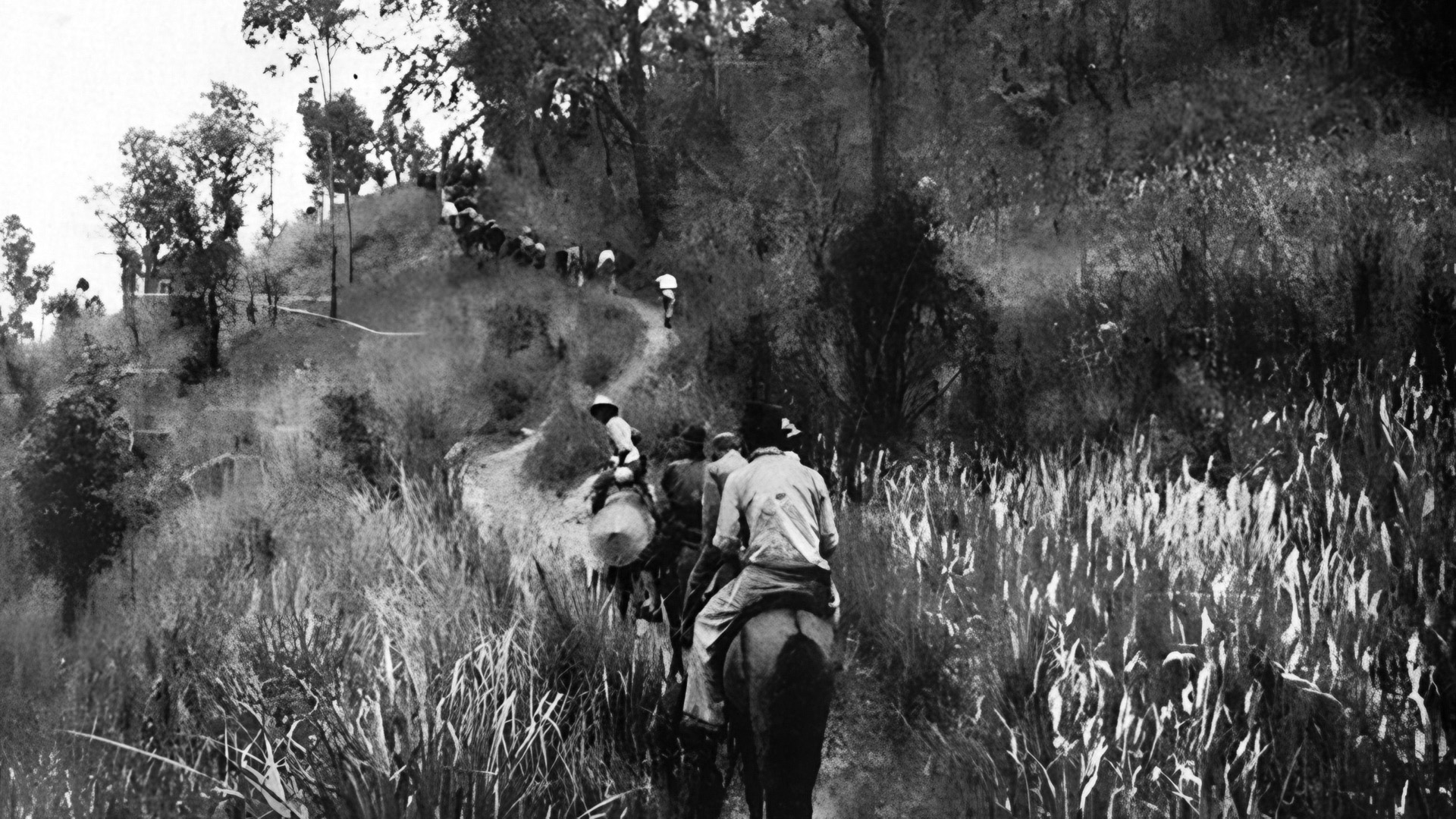
Siam Secrecy: The Thai Resistance in World War II
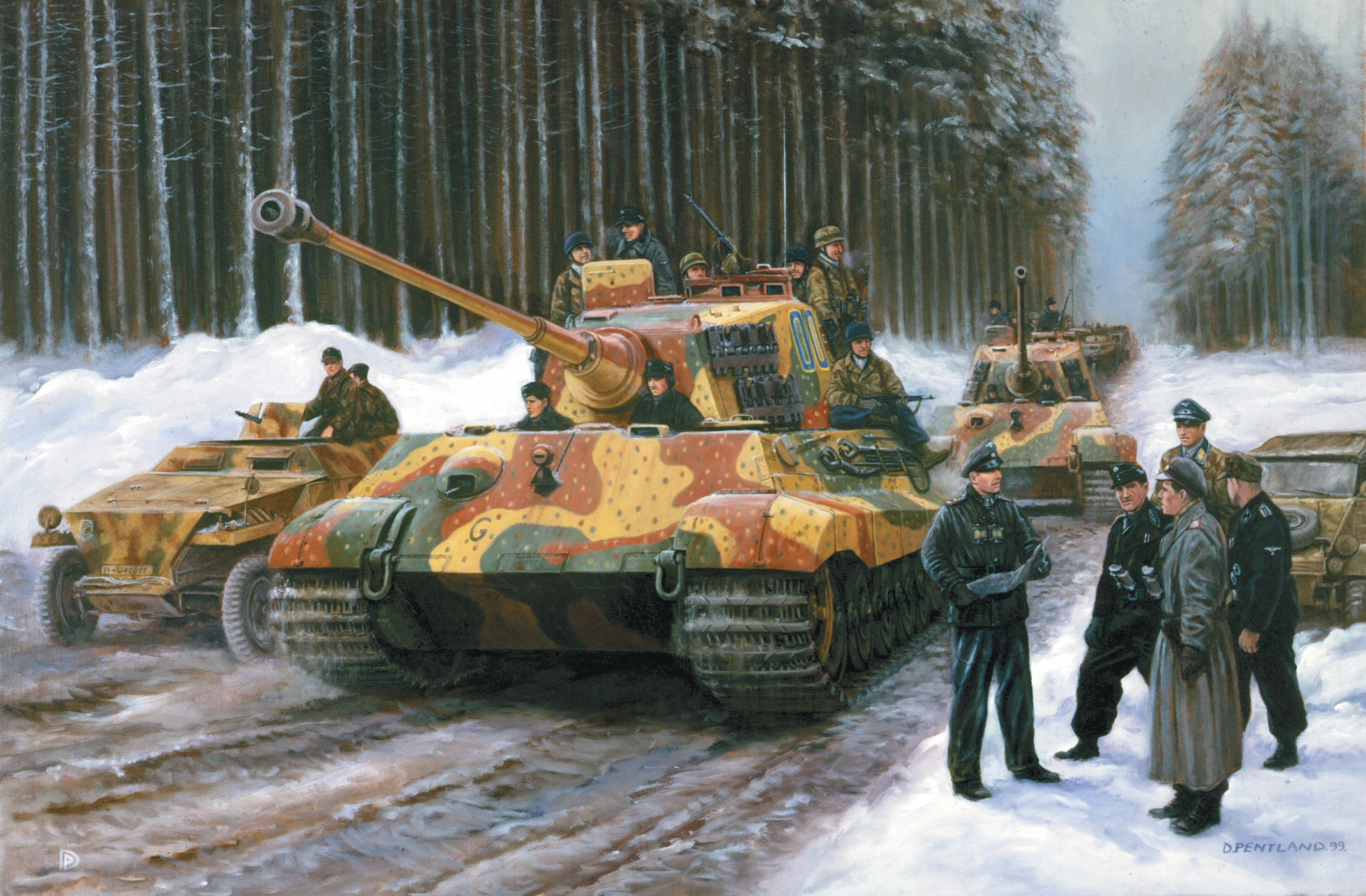
Joachim Peiper’s Escape from the Battle Of the Bulge
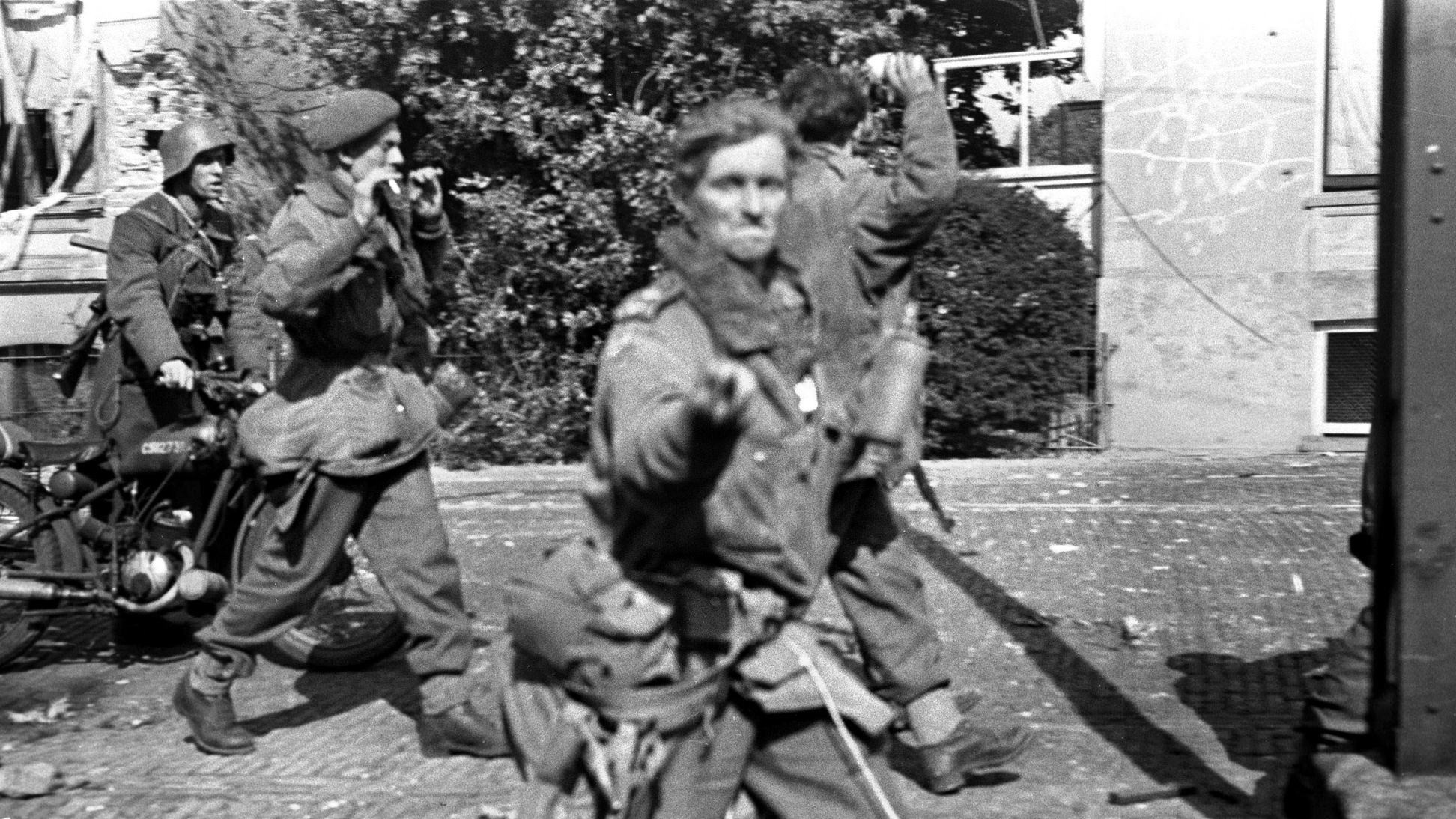
European Theater
Montgomery’s Bridge Too Far
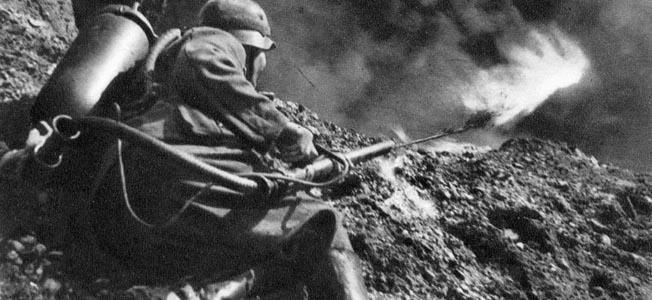
WWII Weapons: Flamethrowers of the Wehrmacht
From around the network.

The 1862 Battle of Richmond: The Confederacy in the Balance
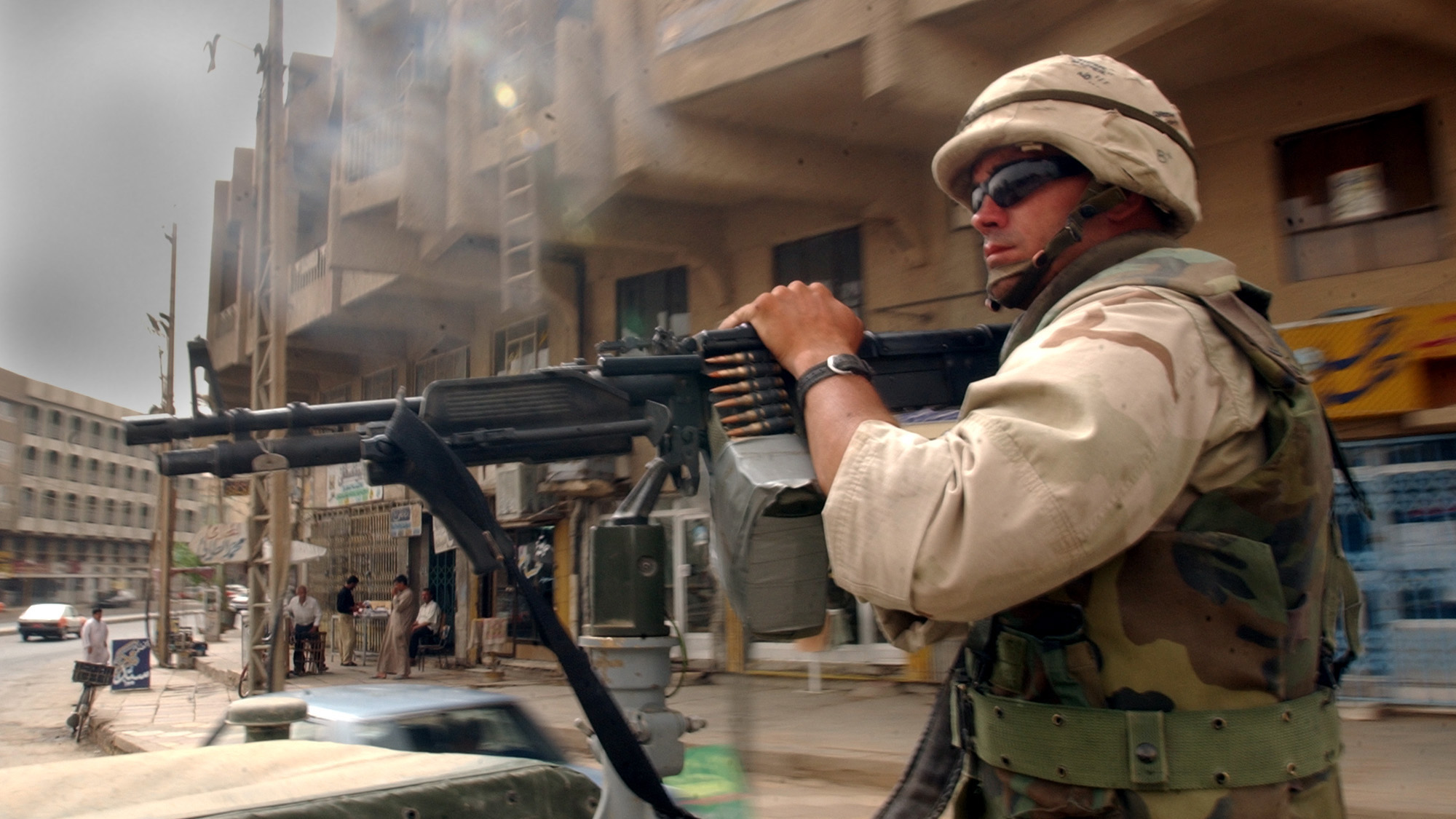
Book Reviews
Kelly Eads and Daniel S. Morgan ‘Black Hearts and Painted Guns’
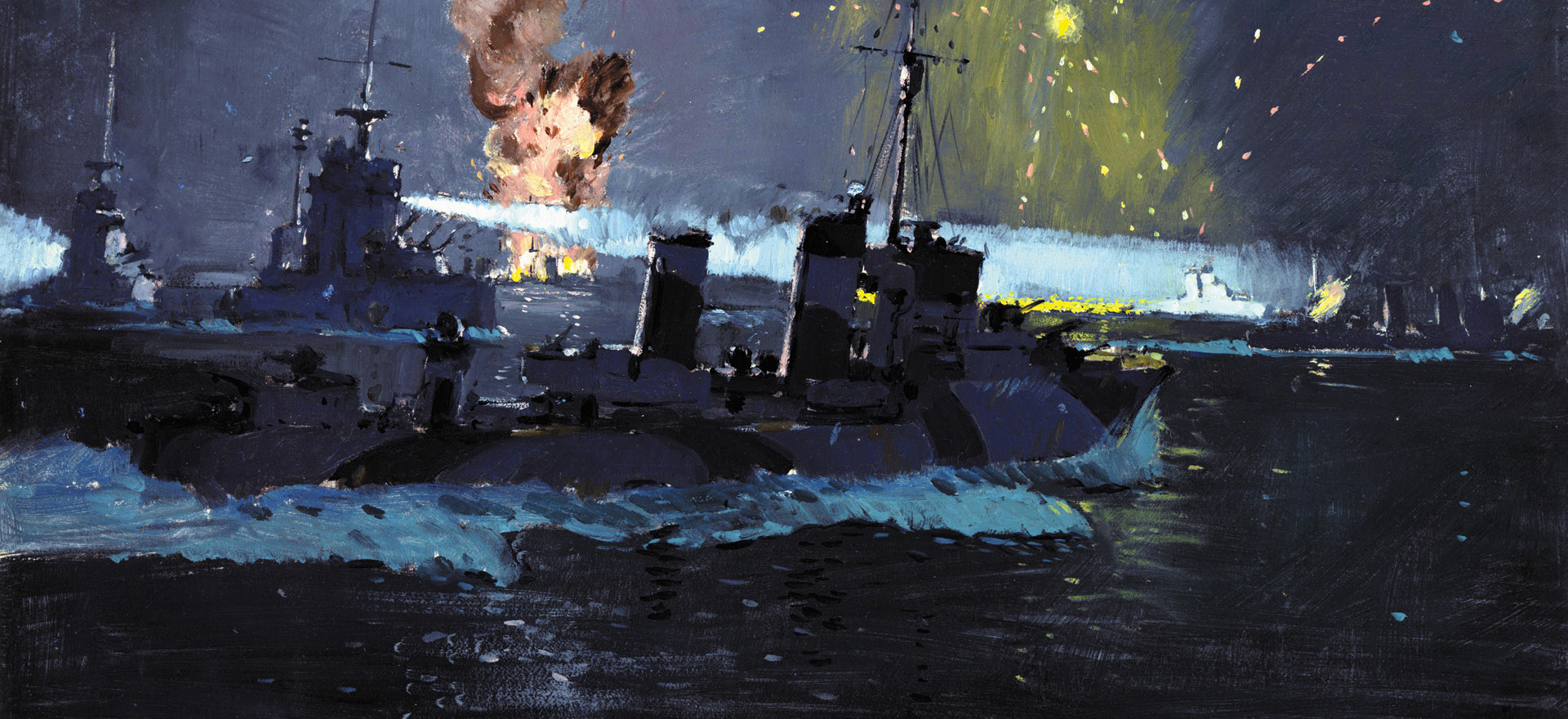
Cape Matapan Triumph
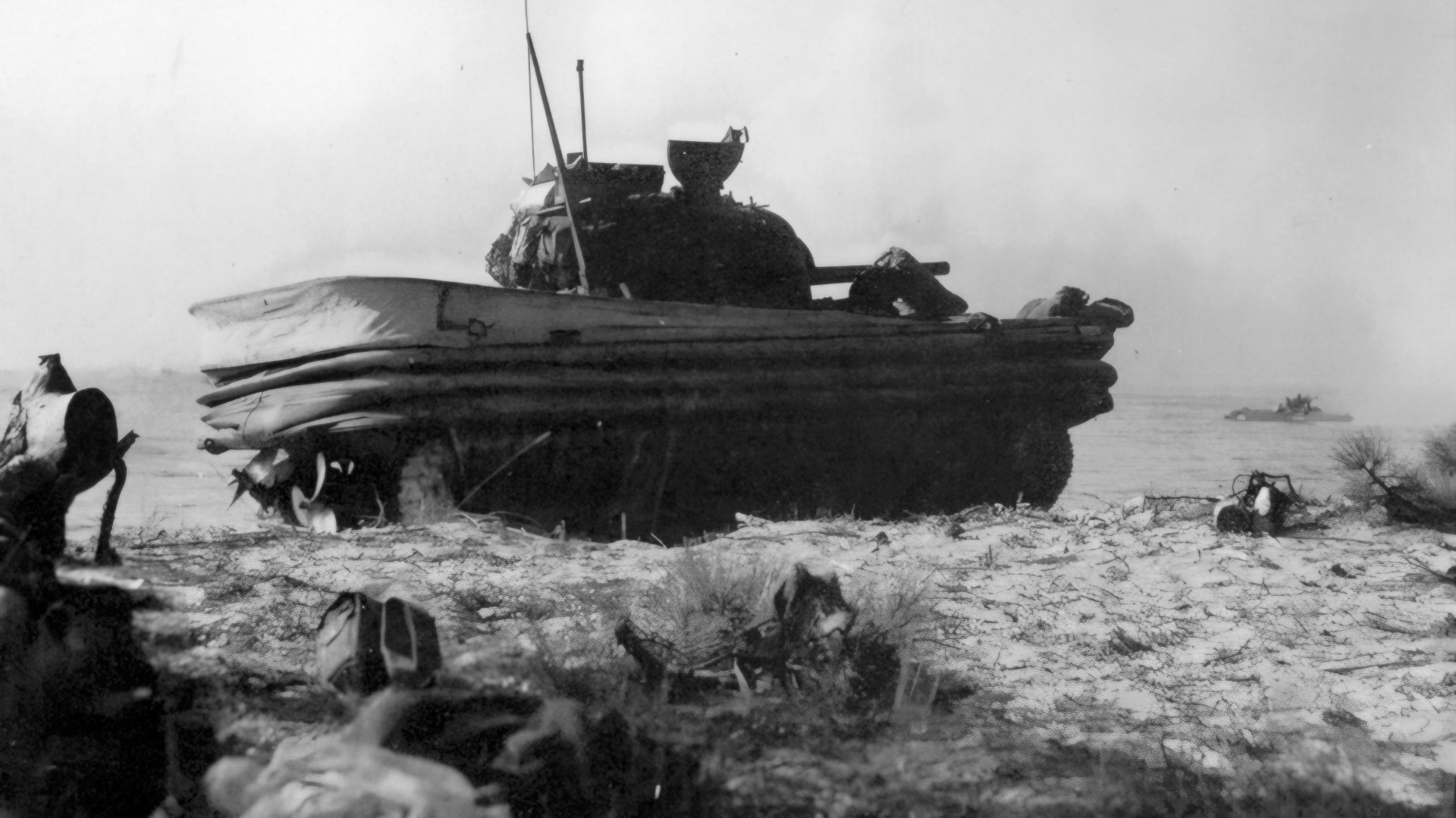
D-Day Funnies: No Joke to the Nazis

Travel Itinerary For One Week in Moscow: The Best of Moscow!
I just got back from one week in Moscow. And, as you might have already guessed, it was a mind-boggling experience. It was not my first trip to the Russian capital. But I hardly ever got enough time to explore this sprawling city. Visiting places for business rarely leaves enough time for sightseeing. I think that if you’ve got one week in Russia, you can also consider splitting your time between its largest cities (i.e. Saint Petersburg ) to get the most out of your trip. Seven days will let you see the majority of the main sights and go beyond just scratching the surface. In this post, I’m going to share with you my idea of the perfect travel itinerary for one week in Moscow.
Moscow is perhaps both the business and cultural hub of Russia. There is a lot more to see here than just the Kremlin and Saint Basil’s Cathedral. Centuries-old churches with onion-shaped domes dotted around the city are in stark contrast with newly completed impressive skyscrapers of Moscow City dominating the skyline. I spent a lot of time thinking about my Moscow itinerary before I left. And this city lived up to all of my expectations.

Travel Itinerary For One Week in Moscow
Day 1 – red square and the kremlin.
Metro Station: Okhotny Ryad on Red Line.
No trip to Moscow would be complete without seeing its main attraction. The Red Square is just a stone’s throw away from several metro stations. It is home to some of the most impressive architectural masterpieces in the city. The first thing you’ll probably notice after entering it and passing vendors selling weird fur hats is the fairytale-like looking Saint Basil’s Cathedral. It was built to commemorate one of the major victories of Ivan the Terrible. I once spent 20 minutes gazing at it, trying to find the perfect angle to snap it. It was easier said than done because of the hordes of locals and tourists.
As you continue strolling around Red Square, there’s no way you can miss Gum. It was widely known as the main department store during the Soviet Era. Now this large (yet historic) shopping mall is filled with expensive boutiques, pricey eateries, etc. During my trip to Moscow, I was on a tight budget. So I only took a retro-style stroll in Gum to get a rare glimpse of a place where Soviet leaders used to grocery shop and buy their stuff. In case you want some modern shopping experience, head to the Okhotny Ryad Shopping Center with stores like New Yorker, Zara, and Adidas.

Read Next: Things To Do on Socotra
To continue this Moscow itinerary, next you may want to go inside the Kremlin walls. This is the center of Russian political power and the president’s official residence. If you’re planning to pay Kremlin a visit do your best to visit Ivan the Great Bell Tower as well. Go there as early as possible to avoid crowds and get an incredible bird’s-eye view. There are a couple of museums that are available during designated visiting hours. Make sure to book your ticket online and avoid lines.
Day 2 – Cathedral of Christ the Saviour, the Tretyakov Gallery, and the Arbat Street
Metro Station: Kropotkinskaya on Red Line
As soon as you start creating a Moscow itinerary for your second day, you’ll discover that there are plenty of metro stations that are much closer to certain sites. Depending on your route, take a closer look at the metro map to pick the closest.
The white marble walls of Christ the Saviour Cathedral are awe-inspiring. As you approach this tallest Orthodox Christian church, you may notice the bronze sculptures, magnificent arches, and cupolas that were created to commemorate Russia’s victory against Napoleon.

How to Get a Decent Haircut in a Foreign Country
Unfortunately, the current Cathedral is a replica, since original was blown to bits in 1931 by the Soviet government. The new cathedral basically follows the original design, but they have added some new elements such as marble high reliefs.
Home to some precious collection of artworks, in Tretyakov Gallery you can find more than 150,000 of works spanning centuries of artistic endeavor. Originally a privately owned gallery, it now has become one of the largest museums in Russia. The Gallery is often considered essential to visit. But I have encountered a lot of locals who have never been there.
Famous for its souvenirs, musicians, and theaters, Arbat street is among the few in Moscow that were turned into pedestrian zones. Arbat street is usually very busy with tourists and locals alike. My local friend once called it the oldest street in Moscow dating back to 1493. It is a kilometer long walking street filled with fancy gift shops, small cozy restaurants, lots of cute cafes, and street artists. It is closed to any vehicular traffic, so you can easily stroll it with kids.
Day 3 – Moscow River Boat Ride, Poklonnaya Hill Victory Park, the Moscow City
Metro Station: Kievskaya and Park Pobedy on Dark Blue Line / Vystavochnaya on Light Blue Line
Voyaging along the Moscow River is definitely one of the best ways to catch a glimpse of the city and see the attractions from a bit different perspective. Depending on your Moscow itinerary, travel budget and the time of the year, there are various types of boats available. In the summer there is no shortage of boats, and you’ll be spoiled for choice.

Travel Itinerary for One Week in Beijing
If you find yourself in Moscow during the winter months, I’d recommend going with Radisson boat cruise. These are often more expensive (yet comfy). They offer refreshments like tea, coffee, hot chocolate, and, of course, alcoholic drinks. Prices may vary but mostly depend on your food and drink selection. Find their main pier near the opulent Ukraine hotel . The hotel is one of the “Seven Sisters”, so if you’re into the charm of Stalinist architecture don’t miss a chance to stay there.
The area near Poklonnaya Hill has the closest relation to the country’s recent past. The memorial complex was completed in the mid-1990s to commemorate the Victory and WW2 casualties. Also known as the Great Patriotic War Museum, activities here include indoor attractions while the grounds around host an open-air museum with old tanks and other vehicles used on the battlefield.
How I Planned My Trip to Vietnam
The hallmark of the memorial complex and the first thing you see as you exit metro is the statue of Nike mounted to its column. This is a very impressive Obelisk with a statue of Saint George slaying the dragon at its base.
Maybe not as impressive as Shanghai’s Oriental Pearl Tower , the skyscrapers of the Moscow City (otherwise known as Moscow International Business Center) are so drastically different from dull Soviet architecture. With 239 meters and 60 floors, the Empire Tower is the seventh highest building in the business district.
The observation deck occupies 56 floor from where you have some panoramic views of the city. I loved the view in the direction of Moscow State University and Luzhniki stadium as well to the other side with residential quarters. The entrance fee is pricey, but if you’re want to get a bird’s eye view, the skyscraper is one of the best places for doing just that.
Day 4 – VDNKh, Worker and Collective Farm Woman Monument, The Ostankino TV Tower
Metro Station: VDNKh on Orange Line
VDNKh is one of my favorite attractions in Moscow. The weird abbreviation actually stands for Russian vystavka dostizheniy narodnogo khozyaystva (Exhibition of Achievements of the National Economy). With more than 200 buildings and 30 pavilions on the grounds, VDNKh serves as an open-air museum. You can easily spend a full day here since the park occupies a very large area.

Places to Visit in Barcelona That Aren’t Beaches
First, there are pavilions that used to showcase different cultures the USSR was made of. Additionally, there is a number of shopping pavilions, as well as Moskvarium (an Oceanarium) that features a variety of marine species. VDNKh is a popular venue for events and fairs. There is always something going on, so I’d recommend checking their website if you want to see some particular exhibition.
A stone’s throw away from VDNKh there is a very distinctive 25-meters high monument. Originally built in 1937 for the world fair in Paris, the hulking figures of men and women holding a hammer and a sickle represent the Soviet idea of united workers and farmers. It doesn’t take much time to see the monument, but visiting it gives some idea of the Soviet Union’s grandiose aspirations.
I have a thing for tall buildings. So to continue my travel itinerary for one week in Moscow I decided to climb the fourth highest TV tower in the world. This iconic 540m tower is a fixture of the skyline. You can see it virtually from everywhere in Moscow, and this is where you can get the best panoramic views (yep, even better than Empire skyscraper).

Parts of the floor are made of tempered glass, so it can be quite scary to exit the elevator. But trust me, as you start observing buildings and cars below, you won’t want to leave. There is only a limited number of tickets per day, so you may want to book online. Insider tip: the first tour is cheaper, you can save up to $10 if go there early.
Day 5 – A Tour To Moscow Manor Houses
Metro Station: Kolomenskoye, Tsaritsyno on Dark Green Line / Kuskovo on Purple Line
I love visiting the manor houses and palaces in Moscow. These opulent buildings were generally built to house Russian aristocratic families and monarchs. Houses tend to be rather grand affairs with impressive architecture. And, depending on the whims of the owners, some form of a landscaped garden.
During the early part of the 20th century though, many of Russia’s aristocratic families (including the family of the last emperor) ended up being killed or moving abroad . Their manor houses were nationalized. Some time later (after the fall of the USSR) these were open to the public. It means that today a great many of Moscow’s finest manor houses and palaces are open for touring.

20 Travel Tips I’ve Learned From Travelling The World
There are 20 manor houses scattered throughout the city and more than 25 in the area around. But not all of them easily accessible and exploring them often takes a lot of time. I’d recommend focusing on three most popular estates in Moscow that are some 30-minute metro ride away from Kremlin.
Sandwiched between the Moscow River and the Andropov Avenue, Kolomenskoye is a UNESCO site that became a public park in the 1920’s. Once a former royal estate, now it is one of the most tranquil parks in the city with gorgeous views. The Ascension Church, The White Column, and the grounds are a truly grand place to visit.
You could easily spend a full day here, exploring a traditional Russian village (that is, in fact, a market), picnicking by the river, enjoying the Eastern Orthodox church architecture, hiking the grounds as well as and wandering the park and gardens with wildflower meadows, apple orchards, and birch and maple groves. The estate museum showcases Russian nature at its finest year-round.
12 Stunning National Parks and Regional Parks In France
If my travel itinerary for one week in Moscow was a family tree, Tsaritsyno Park would probably be the crazy uncle that no-one talks about. It’s a large park in the south of the city of mind-boggling proportions, unbelievable in so many ways, and yet most travelers have never heard of it.
The palace was supposed to be a summer home for Empress Catherine the Great. But since the construction didn’t meet with her approval the palace was abandoned. Since the early 1990’s the palace, the pond, and the grounds have been undergoing renovations. The entire complex is now looking brighter and more elaborately decorated than at possibly any other time during its history. Like most parks in Moscow, you can visit Tsaritsyno free of charge, but there is a small fee if you want to visit the palace.

How To Stop Procrastinating When Trip Planning
Last, but by no means least on my Moscow itinerary is Kuskovo Park . This is definitely an off-the-beaten-path place. While it is not easily accessible, you will be rewarded with a lack of crowds. This 18th-century summer country house of the Sheremetev family was one of the first summer country estates of the Russian nobility. And when you visit you’ll quickly realize why locals love this park.
Like many other estates, Kuskovo has just been renovated. So there are lovely French formal garden, a grotto, and the Dutch house to explore. Make sure to plan your itinerary well because the estate is some way from a metro station.
Day 6 – Explore the Golden Ring
Creating the Moscow itinerary may keep you busy for days with the seemingly endless amount of things to do. Visiting the so-called Golden Ring is like stepping back in time. Golden Ring is a “theme route” devised by promotion-minded journalist and writer Yuri Bychkov.
Having started in Moscow the route will take you through a number of historical cities. It now includes Suzdal, Vladimir, Kostroma, Yaroslavl and Sergiev Posad. All these awe-inspiring towns have their own smaller kremlins and feature dramatic churches with onion-shaped domes, tranquil residential areas, and other architectural landmarks.
Two Weeks In Thailand: The Perfect 14-Day Itinerary
I only visited two out of eight cities included on the route. It is a no-brainer that Sergiev Posad is the nearest and the easiest city to see on a day trip from Moscow. That being said, you can explore its main attractions in just one day. Located some 70 km north-east of the Russian capital, this tiny and overlooked town is home to Trinity Lavra of St. Sergius, UNESCO Site.

You Will Also Like: 3-Day London Itinerary
Sergiev Posad is often described as being at the heart of Russian spiritual life. So it is uncommon to see the crowds of Russian pilgrims showing a deep reverence for their religion. If you’re traveling independently and using public transport, you can reach Sergiev Posad by bus (departs from VDNKh) or by suburban commuter train from Yaroslavskaya Railway Station (Bahnhof). It takes about one and a half hours to reach the town.
Trinity Lavra of St. Sergius is a great place to get a glimpse of filling and warming Russian lunch, specifically at the “ Gostevaya Izba ” restaurant. Try the duck breast, hearty potato and vegetables, and the awesome Napoleon cake.
Day 7 – Gorky Park, Izmailovo Kremlin, Patriarch’s Ponds
Metro Station: Park Kultury or Oktyabrskaya on Circle Line / Partizanskaya on Dark Blue Line / Pushkinskaya on Dark Green Line
Gorky Park is in the heart of Moscow. It offers many different types of outdoor activities, such as dancing, cycling, skateboarding, walking, jogging, and anything else you can do in a park. Named after Maxim Gorky, this sprawling and lovely park is where locals go on a picnic, relax and enjoy free yoga classes. It’s a popular place to bike around, and there is a Muzeon Art Park not far from here. A dynamic location with a younger vibe. There is also a pier, so you can take a cruise along the river too.

How to Save Money While Traveling in Europe
The Kremlin in Izmailovo is by no means like the one you can find near the Red Square. Originally built for decorative purposes, it now features the Vernissage flea market and a number of frequent fairs, exhibitions, and conferences. Every weekend, there’s a giant flea market in Izmailovo, where dozens of stalls sell Soviet propaganda crap, Russian nesting dolls, vinyl records, jewelry and just about any object you can imagine. Go early in the morning if you want to beat the crowds.
All the Bulgakov’s fans should pay a visit to Patriarch’s Ponds (yup, that is plural). With a lovely small city park and the only one (!) pond in the middle, the location is where the opening scene of Bulgakov’s novel Master and Margarita was set. The novel is centered around a visit by Devil to the atheistic Soviet Union is considered by many critics to be one of the best novels of the 20th century. I spent great two hours strolling the nearby streets and having lunch in the hipster cafe.
Conclusion and Recommendations
To conclude, Moscow is a safe city to visit. I have never had a problem with getting around and most locals are really friendly once they know you’re a foreigner. Moscow has undergone some serious reconstruction over the last few years. So you can expect some places to be completely different. I hope my one week Moscow itinerary was helpful! If you have less time, say 4 days or 5 days, I would cut out day 6 and day 7. You could save the Golden Ring for a separate trip entirely as there’s lots to see!
What are your thoughts on this one week Moscow itinerary? Are you excited about your first time in the city? Let me know in the comments below!
JOIN MY FREE WEEKLY NEWSLETTER!
Email Address *
YOU WILL ALSO LIKE

10 Dishes You Must Try When Going To Moscow

15 Fantastic and Easy Day Trips Close to Moscow

When Is the Best Time To Visit Russia
24 comments.
Ann Snook-Moreau
Moscow looks so beautiful and historic! Thanks for including public transit information for those of us who don’t like to rent cars.
MindTheTravel
Yup, that is me 🙂 Rarely rent + stick to the metro = Full wallet!
Mariella Blago
Looks like you had loads of fun! Well done. Also great value post for travel lovers.
Thanks, Mariella!
I have always wanted to go to Russia, especially Moscow. These sights look absolutely beautiful to see and there is so much history there!
Agree! Moscow is a thousand-year-old city and there is definitely something for everyone.
Tara Pittman
Those are amazing buildings. Looks like a place that would be amazing to visit.
Adriana Lopez
Never been to Moscow or Russia but my family has. Many great spots and a lot of culture. Your itinerary sounds fantastic and covers a lot despite it is only a short period of time.
What was their favourite thing about Russia?
Gladys Parker
I know very little about Moscow or Russia for the\at matter. I do know I would have to see the Red Square and all of its exquisite architectural masterpieces. Also the CATHEDRAL OF CHRIST THE SAVIOUR. Thanks for shedding some light on visiting Moscow.
Thanks for swinging by! The Red Square is a great starting point, but there way too many places and things to discover aside from it!
Ruthy @ Percolate Kitchen
You are making me so jealous!! I’ve always wanted to see Russia.
Moscow is in my bucket list, I don’t know when I can visit there, your post is really useful. As a culture rich place we need to spend at least week.
DANA GUTKOWSKI
Looks like you had a great trip! Thanks for all the great info! I’ve never been in to Russia, but this post makes me wanna go now!
Wow this is amazing! Moscow is on my bucket list – such an amazing place to visit I can imagine! I can’t wait to go there one day!
The building on the second picture looks familiar. I keep seeing that on TV.
Reesa Lewandowski
What beautiful moments! I always wish I had the personality to travel more like this!
Perfect itinerary for spending a week in Moscow! So many places to visit and it looks like you had a wonderful time. I would love to climb that tower. The views I am sure must have been amazing!
I was lucky enough to see the skyline of Moscow from this TV Tower and it is definitely mind-blowing.
Chelsea Pearl
Moscow is definitely up there on my travel bucket list. So much history and iconic architecture!
Thumbs up! 🙂
Blair Villanueva
OMG I dream to visit Moscow someday! Hope the visa processing would be okay (and become more affordable) so I could pursue my dream trip!
Yup, visa processing is the major downside! Agree! Time and the money consuming process…
Save my name, email, and website in this browser for the next time I comment.

- Privacy Overview
- Strictly Necessary Cookies
My website uses cookies so that I can provide you with the best user experience possible. Cookie information is stored in your browser and performs functions such as recognising you when you return to my website and helping me to understand which sections of Mind The Travel you find most interesting and useful.
You can adjust all of your cookie settings by navigating the tabs on the left hand side.
Strictly Necessary Cookie should be enabled at all times so that I can save your preferences for cookie settings.
If you disable this cookie, I will not be able to save your preferences. This means that every time you visit my website you will need to enable or disable cookies again.
- Meet the Team
- Work with Us
- Czech Republic
- Netherlands
- Switzerland
- Scandinavia
- Philippines
- South Korea
- New Zealand
- South Africa
- Budget Travel
- Work & Travel
- The Broke Backpacker Manifesto
- Travel Resources
- How to Travel on $10/day
Home » Europe » Moscow
EPIC MOSCOW Itinerary! (2024)
Moscow is the heart of Mother Russia. Just the mention of this city conjures images of colorful bulbous pointed domes, crisp temperatures, and a uniquely original spirit!
Moscow has an incredibly turbulent history, a seemingly resilient culture, and a unique enchantment that pulls countless tourists to the city each year! Although the warmer months make exploring Moscow’s attractions more favorable, there’s just something about a fresh snowfall that only enhances the appearance of the city’s iconic sites!
If you’re a first-time visitor to Moscow, or simply wanting to see as much of the city as possible, this Moscow itinerary will help you do just that!

Unlock Our GREATEST Travel Secrets!
Sign up for our newsletter and get the best travel tips delivered right to your inbox.
Best Time To Visit Moscow
Where to stay in moscow, moscow itinerary, day 1 itinerary in moscow, day 2 itinerary in moscow, day 3 and beyond, staying safe in moscow, day trips from moscow, faq on moscow itinerary.
Here is a quick look at the seasons so you can decide when to visit Moscow!
The summer months (June-August) are a great time to travel to Moscow to take advantage of the enjoyable mild temperatures. This is considered peak travel season. Bear in mind that hotel prices rise along with the temperatures!

If you’re planning a trip to Moscow during fall (September-November) try to plan for early fall. This way the temperatures will still be pleasant and winter won’t be threatening.
Russian winters (December-February) are not for the faint of heart as Napoleon learned to his peril. Some days the sun will be out for less than an hour, and snow is guaranteed. Although winters are exceptionally cold, this is when you’ll get a true glimpse of the Moscow experience!
The best time to visit Moscow is during spring (March-May). The temperatures will begin to creep up and the sun begins to shine for significant portions of the day. Hotel rates will also have yet to skyrocket into peak ranges!

With a Moscow City Pass , you can experience the best of Moscow at the CHEAPEST prices. Discounts, attractions, tickets, and even public transport are all standards in any good city pass – be sure invest now and save them $$$ when you arrive!
Moscow is a large city with many accommodation options to choose from. Staying in a location that fits with your travel plans will only enhance your Moscow itinerary. Here is a brief introduction to a few great areas of the city we recommend checking out!
The best place to stay in Moscow to be close to all the action is Kitay-Gorod. This charming neighborhood will put you within walking distance to Moscow’s famous Red Square, thus cutting down on travel time. This will allow you to see more of the city in a shorter amount of time!

It’s surrounded by restaurants, cafes, bars, and shops. If you’re a first-time visitor to Moscow, or just planning a quick weekend in Moscow, then this area is perfect for you!
Another great area to consider is the Zamoskvorechye district. This area of the city offers a blend of new and old Moscow. It has an artsy vibe and there are plenty of fun sites you can explore outside of the main touristy areas of Moscow.
Of course, as in all areas of Moscow, it’s close to public transportation that will quickly connect you with the rest of the city and make your Moscow itinerary super accessible!
Best Airbnb in Moscow – Exclusive Apartment in Old Moscow

Modern and cozy, this apartment is in the heart of Old Moscow. Bordering the Basmanny and Kitay-Gorod districts, this two-bedroom flat is walking distance to the Kremlin and Red Square. Safe, quiet, and comfortable, this is the best Airbnb in Moscow, no question!
Best Budget Hotel in Moscow – Izmailovo Alfa Hotel

The Izmailovo Alfa Hotel is a very highly rated accommodation that provides all the components necessary for a comfortable trip to Moscow. There is an on-site restaurant, bar, fitness center, and an airport shuttle service. The rooms are modern and spacious and are equipped with a TV, heating/air conditioning, minibar, and more!
Best Luxury Hotel in Moscow – Crowne Plaza Moscow World Trade Centre

If you’re touring Moscow in luxury, the Crowne Plaza Moscow World Trade Centre is the hotel for you! Elegantly furnished rooms are equipped with a minibar, flat-screen TV, in-room safes, as well as tea and coffee making facilities! Bathrooms come with bathrobes, slippers, and free toiletries. There is also an onsite restaurant, bar, and fitness center.
Best Hostel in Moscow – Godzillas Hostel

Godzillas Hostel is located in the center of Moscow, just a short walk from all the major tourist attractions and the metro station. Guests will enjoy all the usual hostel perks such as self-catering facilities, 24-hour reception, Free Wi-Fi, and security lockers. This is one of the best hostels in Moscow and its wonderful social atmosphere and will make your vacation in Moscow extra special!
An important aspect of planning any trip is figuring out the transportation situation. You’re probably wondering how you’re going to get to all of your Moscow points of interest right? Luckily, this sprawling city has an excellent network of public transportation that will make traveling a breeze!
The underground metro system is the quickest and most efficient way to travel around Moscow. Most visitors rely exclusively on this super-efficient transportation system, which allows you to get to pretty much anywhere in the city! It’s also a great option if you’re planning a Moscow itinerary during the colder months, as you’ll be sheltered from the snow and freezing temperatures!

If you prefer above-ground transportation, buses, trams, and trolleybuses, run throughout the city and provide a rather comfortable alternative to the metro.
Moscow’s metro, buses, trams, and trolleybuses are all accessible with a ‘Troika’ card. This card can be topped up with any sum of money at a metro cash desk. The ticket is simple, convenient, and even refundable upon return to a cashier!
No matter which method you choose, you’ll never find yourself without an easy means of getting from point A to point B!
Red Square | Moscow Kremlin | Lenin’s Mausoleum | St. Basil’s Cathedral | GUM Department Store
Spend the first day of your itinerary taking your own self guided Moscow walking tour around the historic Red Square! This is Moscow’s compact city center and every stop on this list is within easy walking distance to the next! Get ready to see all of the top Moscow landmarks!
Day 1 / Stop 1 – The Red Square
- Why it’s awesome: The Red Square is the most recognizable area in Moscow, it has mesmerizing architecture and centuries worth of history attached to its name.
- Cost: Free to walk around, individual attractions in the square have separate fees.
- Food nearby: Check out Bar BQ Cafe for friendly service and good food in a great location! The atmosphere is upbeat and they’re open 24/7!
The Red Square is Moscow’s historic fortress and the center of the Russian government. The origins of the square date back to the late 15th century, when Ivan the Great decided to expand the Kremlin to reflect Moscow’s growing power and prestige!
During the 20th century, the square became famous as the site for demonstrations designed to showcase Soviet strength. Visiting the Red Square today, you’ll find it teeming with tourists, who come to witness its magical architecture up close!

The square is the picture postcard of Russian tourism, so make sure to bring your camera when you visit! No matter the season, or the time of day, it’s delightfully photogenic!
It’s also home to some of Russia’s most distinguishing and important landmarks, which we’ve made sure to include further down in this itinerary. It’s an important center of Russia’s cultural life and one of the top places to visit in Moscow!
In 1990, UNESCO designated Russia’s Red Square as a World Heritage site. Visiting this historic site is a true bucket-list event and essential addition to your itinerary for Moscow!
Day 1 / Stop 2 – The Moscow Kremlin
- Why it’s awesome: The Moscow Kremlin complex includes several palaces and cathedrals and is surrounded by the Kremlin wall. It also houses the principal museum of Russia (the Kremlin Armory).
- Cost: USD $15.00
- Food nearby: Bosco Cafe is a charming place to grat a casual bite to eat. They have excellent coffee and wonderful views of the Red Square and the Moscow Kremlin!
The iconic Moscow Kremlin , also known as the Kremlin museum complex, sits on Borovitsky Hill, rising above the Moscow River. It is a fortified complex in the center of the city, overlooking several iconic buildings in the Red Square!
It’s the best known of the Russian Kremlins – citadels or fortress’ protecting and dominating a city. During the early decades of the Soviet era, the Kremlin was a private enclave where the state’s governing elite lived and worked.
The Kremlin is outlined by an irregularly shaped triangular wall that encloses an area of 68 acres! The existing walls and towers were built from 1485 to 1495. Inside the Kremlin museum complex, there are five palaces, four cathedrals, and the enclosing Kremlin Wall with Kremlin towers.
The Armoury Chamber is a part of the Grand Kremlin Palace’s complex and is one of the oldest museums of Moscow, established in 1851. It showcases Russian history and displays many cherished relics. Definitely make sure to check out this museum while you’re here!

The churches inside the Moscow Kremlin are the Cathedral of the Dormition, Church of the Archangel, Church of the Annunciation, and the bell tower of Ivan Veliki (a church tower).
The five-domed Cathedral of the Dormition is considered the most famous. It was built from 1475–1479 by an Italian architect and has served as a wedding and coronation place for great princes, tsars, and emperors of Russia. Church services are given in the Kremlin’s numerous cathedrals on a regular basis.
The Grand Kremlin Palace was the former Tsar’s Moscow residence and today it serves as the official workplace of the President of the Russian Federation (Vladimir Putin seems to have bagged that title for life) .
Insider Tip: The Kremlin is closed every Thursday! Make sure to plan this stop on your Moscow itinerary for any other day of the week!
Day 1 / Stop 3 – Lenin’s Mausoleum
- Why it’s awesome: The mausoleum displays the preserved body of Soviet leader Vladimir Lenin .
- Cost: Free!
- Food nearby: Khinkal’naya is a charming Georgian restaurant with vaulted ceilings and exposed brick. It’s a popular place with locals and right next to the Red Square!
Lenin’s Mausoleum, also known as Lenin’s Tomb, is the modernist mausoleum for the revolutionary leader Vladimir Lenin. It’s located within the Red Square and serves as the resting place for the Soviet leader! His preserved body has been on public display since shortly after his death in 1924.
It’s located just a few steps away from the Kremlin Wall and is one of the most controversial yet popular Moscow attractions!
Admission is free for everyone, you’ll only need to pay if you need to check a bag. Before visitors are allowed to enter the mausoleum, they have to go through a metal detector first. No metal objects, liquids, or large bags are allowed in the mausoleum!

Expect a line to enter the building, and while you’re inside the building, you’ll be constantly moving in line with other visitors. This means you won’t be able to spend as long as you’d like viewing the mausoleum, but you’ll still be able to get a good look. Pictures and filming while inside the building are strictly prohibited, and security guards will stop you if they see you breaking this rule.
The mausoleum is only open on Tuesday, Wednesday, Thursday, and Saturday – unless it’s a public holiday or a day scheduled for maintenance. The hours it’s open for each day are limited, make sure to check online before you visit to make sure you can fit this into your Moscow itinerary for that day!
Insider Tip: The Lenin’s Museum is there for people to pay their respect; remember to keep silent and move along quickly, it’s not intended for people to congregate around. Also, men are not allowed to wear hats and everyone must take their hands out of their pockets when inside the building.
Day 1 / Stop 4 – St. Basil’s Cathedral
- Why it’s awesome: A dazzling designed cathedral that showcases Russia’s unique architecture. This cathedral is one of the most recognizable symbols of the country!
- Cost: USD $8.00
- Food nearby: Moskovskiy Chaynyy Klub is a cozy cafe serving food items and pipping hot tea; it’s the perfect place to go if you’re visiting Moscow during the winter months!
Located in the Red Square, the ornate 16th-century St. Basil’s Cathedral is probably the building you picture when you think of Moscow’s unique architecture. Its colorful onion-shaped domes tower over the Moscow skyline!
The cathedral was built from 1555-1561 by order of Tsar Ivan the Terrible. It was designed with an iconic onion dome facade and enchanting colors that captivate all who see it. Fun fact: If you’re wondering why Russian churches have onion domes, they are popularly believed to symbolize burning candles!
This iconic cathedral has become a symbol of Russia due to its distinguishing architecture and prominent position inside the Red Square. It’s one of the most beautiful, wonderful, and mesmerizing historical cathedrals in the world!

The interior of the church surprises most people when they visit. In contrast to the large exterior, the inside is not so much one large area, but rather a collection of smaller areas, with many corridors and small rooms. There are 9 small chapels and one mausoleum grouped around a central tower.
Visiting the inside is like walking through a maze, there are even small signs all around the cathedral tracing where to walk, and pointing you in the right direction! The walls are meticulously decorated and painted with intricate floral designs and religious themes.
The church rarely holds service and is instead a museum open for the public to visit.
Insider Tip: During the summer months the line to go inside the cathedral can get quite long! Make sure to arrive early or reserve your tickets online to guarantee quick access into the cathedral!
Day 1 / Stop 5 – GUM Department Store
- Why it’s awesome: This is Russia’s most famous shopping mall! It’s designed with elegant and opulent architecture and provides a real sense of nostalgia!
- Cost: Free to enter
- Food nearby: Stolovaya 57 is a cafeteria-style restaurant with a variety of inexpensive Russian cuisine menu items including soups, salads, meat dishes, and desserts. It’s also located inside the GUM department store, making it very easily accessible when you’re shopping!
The enormous GUM Department Store is located within the historic Red Square. It has a whimsical enchantment to it that sets it apart from your typical department store.
A massive domed glass ceiling lines the top of the building and fills the interior with natural sunlight. There are live plants and flowers placed throughout the mall that give the shopping complex a lively and cheerful feel! A playful fountain sits in the center, further adding to the malls inviting a sense of wonder and amusement!
The GUM department store opened on December 2, 1893. Today, it includes local and luxury stores, including Fendi, Louis Vuitton, Prada, and many more! There are numerous cafes, restaurants, and even a movie theater inside!

For a special treat, head into Gastronom 1. This 1950s-style shop sells gourmet food items, like wine, freshly-baked pastries, cheese, Russian chocolate, and of course, vodka! Also, be on the lookout for a bicycle pedaling ice cream truck with an employing selling ice cream!
The ambiance is simply amazing, a trip to this idyllic shopping mall is an absolute must on any Moscow itinerary!
Insider Tip: Make sure to carry some small change on you in case you need to use the restroom, you’ll need to pay 50 rubles – or about USD $0.80 to use the bathroom in GUM.

Wanna know how to pack like a pro? Well for a start you need the right gear….
These are packing cubes for the globetrotters and compression sacks for the real adventurers – these babies are a traveller’s best kept secret. They organise yo’ packing and minimise volume too so you can pack MORE.
Or, y’know… you can stick to just chucking it all in your backpack…
Novodevichy Convent | Gorky Park | State Tretyakov Gallery | All-Russian Exhibition Center | Bolshoi Theater
On your 2 day itinerary in Moscow, you’ll have a chance to use the city’s excellent public transportation service! You’ll explore a few more of Moscow’s historic highlight as well as some modern attractions. These sites are a little more spread out, but still very easily accessible thanks to the metro!
Day 2 / Stop 1 – Novodevichy Convent
- Why it’s awesome: The Novodevichy Convent is rich in imperial Russian history and contains some of Russia’s best examples of classical architecture!
- Cost: USD $5.00
- Food nearby: Culinary Shop Karavaevs Brothers is a cozy and simple place to have a quick bite, they also have vegetarian options!
The Novodevichy Convent is the best-known and most popular cloister of Moscow. The convent complex is contained within high walls, and there are many attractions this site is known for!
The six-pillared five-domed Smolensk Cathedral is the main attraction. It was built to resemble the Kremlin’s Assumption Cathedral and its facade boasts beautiful snowy white walls and a pristine golden onion dome as its centerpiece. It’s the oldest structure in the convent, built from 1524 -1525, and is situated in the center of the complex between the two entrance gates.
There are other churches inside the convent as well, all dating back from many centuries past. The convent is filled with an abundance of 16th and 17th-century religious artworks, including numerous large and extravagant frescos!

Just outside the convent’s grounds lies the Novodevichy Cemetery. Here, you can visit the graves of famous Russians, including esteemed authors, composers, and politicians. Probably the most intriguing gravestone belongs to Russian politician Nikita Khruschev!
The Novodevichy Convent is located near the Moscow River and offers a peaceful retreat from the busy city. In 2004, it was proclaimed a UNESCO World Heritage Site. The convent remains remarkably well-preserved and is an outstanding example of Moscow Baroque architecture!
Insider Tip: To enter the cathedrals inside the complex, women are advised to cover their heads and shoulders, while men should wear long pants.
Day 2 / Stop 2 – Gorky Central Park of Culture and Leisure
- Why it’s awesome: A large amusement area in the heart of the city offering many attractions!
- Cost: Free!
- Food nearby: Check out Mepkato, located inside Gorky Central Park for a casual meal in a cozy setting. There are indoor and outdoor seating options and the restaurant is child-friendly!
Gorky Central Park of Culture and Leisure is a large green space in the heart of Moscow. The park opened in 1928, and it stretches along the scenic embankment of the Moskva River. It covers an area of 300-acres and offers a lovely contrast from the compact city center.
You’ll find all sorts of wonderful attractions, from boat rides to bike rentals to tennis courts and ping-pong tables, and much more! there are an open-air cinema and festive events and concerts scheduled in the summer months. A wide selection of free fitness classes is also offered on a regular basis, including jogging, roller skating, and dancing!
Although many of the options you’ll find here are more suited for outdoor leisure during the summer, you’ll also a selection of winter attractions, including one of Europe’s largest ice rinks for ice-skating!

If you’re trying to decide what to do in Moscow with kids, the park also offers several venues designed specifically for kids. Check out the year-round Green School which offers hands-on classes in gardening and art! You can also feed the squirrels and birds at the Golitsinsky Ponds!
The park is very well maintained and kept clean and the entrance is free of charge, although most individual attractions cost money. There is also Wi-Fi available throughout the park.
With so many attractions, you could easily spend all day here! If you’re only planning a 2 day itinerary in Moscow, make sure to plan your time accordingly and map out all the areas you want to see beforehand!
Day 2 / Stop 3 – The State Tretyakov Gallery
- Why it’s awesome: The gallery’s collection consists entirely of Russian art made by Russian artists!
- Food nearby : Brothers Tretyakovs is located right across the street from the gallery. It’s a wonderfully atmospheric restaurant serving top quality food and drinks!
The State Tretyakov Gallery was founded in 1856 by influential merchant and collector Pavel Tretyakov. The gallery is a national treasury of Russian fine art and one of the most important museums in Russia!
It houses the world’s best collection of Russian art and contains more than 130, 000 paintings, sculptures, and graphics! These works have been created throughout the centuries by generations of Russia’s most talented artists!

The exhibits range from mysterious 12th-century images to politically charged canvases. The collection is rich and revealing and offers great insight into the history and attitudes of this long-suffering yet inspired people!
All pictures are also labeled in English. If you plan to take your time and see everything inside the museum it will take a good 3-4 hours, so make sure to plan your Moscow trip itinerary accordingly! This gallery is a must-see stop for art lovers, or anyone wanting to explore the local culture and history of Russia in a creative and insightful manner!
Insider Tip: When planning your 2 days in Moscow itinerary, keep in mind that most museums in Moscow are closed on Mondays, this includes The State Tretyakov Gallery!
Day 2 / Stop 4 – All-Russian Exhibition Center
- Why it’s awesome: This large exhibition center showcases the achievements of the Soviet Union in several different spheres.
- Food nearby: Varenichnaya No. 1 serves authentic and homestyle Russian cuisine in an intimate and casual setting.
The All-Russian Exhibition Center is a massive park that presents the glory of the Soviet era! It pays homage to the achievements of Soviet Russia with its many different sites found on the property.
The center was officially opened in 1939 to exhibit the achievements of the Soviet Union. It’s a huge complex of buildings and the largest exhibition center in Moscow. There are several exhibition halls dedicated to different achievements and every year there are more than one hundred and fifty specialized exhibitions!

The Peoples Friendship Fountain was constructed in 1954 and is a highlight of the park. The stunning gold fountain features 16 gilded statues of girls, each representing the former Soviet Union republics.
The Stone Flower Fountain was also built in 1954 and is worth checking out. The centerpiece of this large fountain is a flower carved from stones from the Ural Mountains! Along the side of the fountain are various bronze sculptures.
You will find many people zipping around on rollerblades and bicycles across the large area that the venue covers. It’s also home to amusement rides and carousels, making it the perfect place to stop with kids on your Moscow itinerary! Make sure to wear comfortable shoes and allow a few hours to explore all the areas that interest you!
Day 2 / Stop 5 – Bolshoi Theater
- Why it’s awesome: The Bolshoi Theater is a historic venue that hosts world-class ballet and opera performances!
- Cost: Prices vary largely between USD $2.00 – USD $228.00 based on seat location.
- Food nearby: Head to the Russian restaurant, Bolshoi for high-quality food and drinks and excellent service!
The Bolshoi Theater is among the oldest and most renowned ballet and opera companies in the world! It also boasts the world’s biggest ballet company, with more than 200 dancers!
The theater has been rebuilt and renovated several times during its long history. In 2011 it finished its most recent renovation after an extensive six-year restoration that started in 2005. The renovation included an improvement in acoustics and the restoration of the original Imperial decor.
The Bolshoi Theater has put on many of the world’s most famous ballet acts! Tchaikovsky’s ballet Swan Lake premiered at the theater in 1877 and other notable performances of the Bolshoi repertoire include Tchaikovsky’s The Sleeping Beauty and The Nutcracker!

Today, when you visit the theater, you can expect a magical performance from skilled singers, dancers, and musicians with the highest level of technique!
If you don’t have time to see a show, the theater also provides guided tours on select days of the week. Tours are given in both Russian and English and will provide visitors with a more intimate look at the different areas of the theater!
The stage of this iconic Russian theater has seen many outstanding performances. If you’re a fan of the performing arts, the Bolshoi Theater is one of the greatest and oldest ballet and opera companies in the world, making it a must-see attraction on your Moscow itinerary!

Godzillas Hostel
Godzillas Hostel is located in the center of Moscow, just a short walk from all the major tourist attractions and the metro station.
- Towels Included
Cosmonautics Museum | Alexander Garden | Ostankino Tower | Izmaylovo District | Soviet Arcade Museum
Now that we’ve covered what to do in Moscow in 2 days, if you’re able to spend more time in the city you’re going to need more attractions to fill your time. Here are a few more really cool things to do in Moscow we recommend!
Memorial Museum of Cosmonautics
- Hear the timeline of the ‘space race’ from the Russian perspective
- This museum is fun for both adults and children!
- Admission is USD $4.00
The Memorial Museum of Cosmonautics is a museum dedicated to space exploration! The museum explores the history of flight, astronomy, space exploration, space technology, and space in the arts. It houses a large assortment of Soviet and Russian space-related exhibits, and the museum’s collection holds approximately 85,000 different items!

The museum does an excellent job of telling the full story of the exciting space race between the USSR and the US! It highlights the brightest moments in Russian history and humanity and is very interesting and fun for all ages!
If you’re a fan of space or just curious about gaining insight into Russia’s fascinating history of space exploration, make sure to add this to your 3 day itinerary in Moscow!
The Alexander Garden
- A tranquil place to relax near the Red Square
- Green lawns dotted with sculptures and lovely water features
- The park is open every day and has no entrance fee
The Alexander Garden was one of the first urban public parks in Moscow! The garden premiered in 1821 and was built to celebrate Russia’s victory over Napoleon’s forces in 1812!
The park is beautiful and well maintained with paths to walk on and benches to rest on. The park contains three separate gardens: the upper garden, middle garden, and lower garden.

Located in the upper garden, towards the main entrance to the park is the Tomb of the Unknown Soldier with its eternal flame. This monument was created in 1967 and contains the body of a soldier who fell during the Great Patriotic War!
The park stretches along all the length of the western Kremlin wall for about half a mile. Due to its central location in the city, it’ll be easily accessible when you’re out exploring The Red Square.
It provides a bit of relief from the city’s high-energy city streets. Bring a picnic lunch, go for a walk, or just sit and people watch, this is one of the best Moscow sites to wind-down and relax!
Ostankino Television Tower
- Television and radio tower in Moscow
- Currently the tallest free-standing structure in Europe
- Make sure you bring your passport when you visit, you can’t go up without it!
For spectacular views of the city, make sure to add the Ostankino Television Tower to your itinerary for Moscow! This impressive free-standing structure provides stunning views of the city in every direction. The glass floor at the top also provides great alternative views of the city!

It takes just 58 seconds for visitors to reach the Tower’s observation deck by super fast elevator. The tower is open every day for long hours and is a great site in Moscow to check out! There is even a restaurant at the top where you can enjoy rotating views of the city while you dine on traditional Russian cuisine or European cuisine!
The tower is somewhat of an architectural surprise in a city that is not known for skyscrapers! To see the city from a new perspective, make sure to add this stop to your Moscow itinerary!
Izmaylovo District
- The most popular attractions in this district are the kremlin and the flea market
- Outside of the city center and easy to reach via metro
- Most popular during the summer and on weekends
Travel outside the city center and discover a unique area of the city! The Izmaylovo District is a popular destination for locals and tourists alike, and one of the coolest places to see in Moscow! The two main attractions we recommend checking out are the Kremlin and the flea market.
The Izmailovo Kremlin was established as a cultural center and molded after traditional Russian architecture. This colorful complex is home to several single-subject museums, including a Russian folk art museum and a vodka museum!

Next to the Kremlin is the Izmailovo open-air market, which dates back to the 17th century! The market is connected to the Izmailovo Kremlin by a wooden bridge. Pick up all your Russian souvenirs here, including traditional handicrafts, paintings, books, retro toys, and Soviet memorabilia!
You will find many hand-made and hand-painted options available at higher prices, as well as mass-produced souvenir options at lower prices!
Museum of Soviet Arcade Games
- Closed on Mondays
- Filled with old arcade games that visitors get to try out!
- The museum also includes a small cafe and burger shop
For something a little different, check out the Museum of Soviet Arcade Games! The museum features roughly 60 machines from the Soviet era, including video games, pinball machines, and collaborative hockey foosball! The machines inside the museum were produced in the USSR in the mid-1970s.

The best part is, most of the games are still playable! Purchase tickets and try the games out for yourself! The museum also has a neat little screening room that plays old Soviet cartoons and an area with Soviet magazines! This unique attraction is a fun addition to a 3 day itinerary in Moscow, and an attraction that all ages will enjoy!
Whether you’re spending one day in Moscow, or more, safety is an important thing to keep in mind when traveling to a big city! Overall, Moscow is a very safe place to visit. However, it is always recommended that tourists take certain precautions when traveling to a new destination!
The police in Moscow is extremely effective at making the city a safe place to visit and do their best to patrol all of the top Moscow, Russia tourist attractions. However, tourists can still be a target for pickpockets and scammers.
Moscow has a huge flow of tourists, therefore there is a risk for pickpocketing. Simple precautions will help eliminate your chances of being robbed. Stay vigilant, keep your items close to you at all times, and don’t flash your valuables!
If you’re planning a solo Moscow itinerary, you should have no need to worry, as the city is also considered safe for solo travelers, even women. Stay in the populated areas, try and not travel alone late at night, and never accept rides from strangers or taxis without a meter and correct signage.
The threat of natural disasters in Moscow is low, with the exception of severe winters when the temperature can dip below freezing! Bring a good, warm jacket if you visit in Winter.
However, please note that Russian views on homsexuality are far less accepting than those in Western Europe. Likewise, Non-Caucasian travellers may sadly encounter racism in Russia .
Don’t Forget Your Travel Insurance for Moscow
ALWAYS sort out your backpacker insurance before your trip. There’s plenty to choose from in that department, but a good place to start is Safety Wing .
They offer month-to-month payments, no lock-in contracts, and require absolutely no itineraries: that’s the exact kind of insurance long-term travellers and digital nomads need.

SafetyWing is cheap, easy, and admin-free: just sign up lickety-split so you can get back to it!
Click the button below to learn more about SafetyWing’s setup or read our insider review for the full tasty scoop.
Now that we’ve covered all the top things to see in Moscow, we thought we’d include some exciting day trips to other areas of the country!
Sergiev Posad (Golden Ring)

On this 7-hour guided tour, you’ll visit several scenic and historic areas of Russia. Start your day with hotel pick-up as you’re transferred by a comfortable car or minivan to Sergiev Posad. Admire the charming Russian countryside on your drive and enjoy a quick stop to visit the Russian village, Rudonezh!
You’ll see the majestic Saint Spring and the Church of Sergiev Radonezh. You’ll also visit the UNESCO World Heritage Site, Trinity Lavra of St. Sergius, one of the most famous Orthodox sites in Russia!
Lastly, you’ll swing by the local Matreshka market and enjoy a break in a nice Russian restaurant before returning to Moscow!
Day Trip to Vladimir and Suzdal

On this 13-hour trip, you’ll discover old Russia, with its picturesque landscapes and white-stoned beautiful churches! You’ll visit the main towns of the famous Golden Ring of Russia – the name for several cities and smaller towns north-east of Moscow.
Your first stop will be in the town of Vladimir, the ancient capital of all Russian principalities. The city dates back to the 11th century and is one of the oldest and the most important towns along the Ring! Next, you’ll visit Suzdal, a calm ancient Russian town north of Vladimir with only 13,000 inhabitants!
The old-style architecture and buildings of Suzdal are kept wonderfully intact. If you’re spending three days in Moscow, or more, this is a great option for exploring the charming areas outside the city!
Zvenigorod Day Trip and Russian Countryside

On this 9-hour private tour, you’ll explore the ancient town of Zvenigorod, one of the oldest towns in the Moscow region! As you leave Moscow you’ll enjoy the stunning scenery along the Moscow River, and make a few stops at old churches along the way to Zvenigorod.
Upon arrival, you’ll explore the medieval center, including the 14th-century Savvino-Storozhevsky Monastery. Next, you’ll take a break for lunch (own expense) where you’ll have the chance to try out the Russian cuisine! Next, you’ll visit the Museum of Russian Dessert and sip on tea at a Russian tea ceremony.
The final stop of the day is at the Ershovo Estate, a gorgeous place to walk around and enjoy nature!
Day Trip to St Petersburg by Train visiting Hermitage & Faberge

On this full-day tour, you’ll enjoy a a full round trip to St Petersburg where you’ll spend an exciting day exploring another popular Russian city! You’ll be picked up from your hotel in Moscow and be transferred to the train station where you’ll ride the high-speed train ‘Sapsan’ to St Petersburg.
Upon arrival, you’ll start the day by touring the Hermitage Museum and the Winter Palace. Next, you’ll visit the Faberge Museum, where you’ll explore the impressive collection of rare Faberge Eggs! In the afternoon, enjoy a sightseeing boat ride and a traditional 3-course Russian lunch.
If you’re spending 3 days in Moscow, or more, this is an excellent trip to take!
Trip to Kolomna – Authentic Cultural Experience from Moscow

On this 10-hour tour, you’ll escape the city and travel to the historic town of Kolomna! First, you’ll visit the 14th-century Kolomna Kremlin, home to the Assumption Cathedral and an abundance of museums!
Next, enjoy lunch at a local cafe (own expense) before embarking on a tour of the Marshmallow Museum – of course, a marshmallow tasting is provided! Your final stop is the Museum of Forging Settlements, where displays include armor and accessories for fishing and hunting.
Discover this beautiful Russian fairytale city on a private trip, where all of the planning is taken care of for you!

Stash your cash safely with this money belt. It will keep your valuables safely concealed, no matter where you go.
It looks exactly like a normal belt except for a SECRET interior pocket perfectly designed to hide a wad of cash, a passport photocopy or anything else you may wish to hide. Never get caught with your pants down again! (Unless you want to…)
Find out what people want to know when planning their Moscow itinerary.
How many days you need in Moscow?
We recommend that you spend at least two or three days in Moscow to take it all in.
What’s the best month to visit Moscow?
The best time to visit Moscow is over the spring, from March to May as temperatures are mild, crowds are thin and prices are reasonable.
What are some unusual things to do in Moscow?
I mean, queuing up to see an almost 100 year old corpse is pretty unsual! Check out Lenin’s Mausoleum if you fancy it!
What are some fun things to do in Moscow?
The Memorial Museum of Cosmonautics is a fun place to explore the famous space race from the perspective of the ‘other side’!
We hope you enjoyed our Moscow itinerary! We’ve made sure to cover all the Moscow must-sees as well as some unique attractions in the city! Our addition of insider tips, favorite food stops, and day trips from Moscow is an added bonus and will guarantee you make the most out of your exciting Russian vacation!
Immerse yourself in the modern and traditional Russian lifestyle! Get lost in museums, witness awe-inspiring architecture, and indulge in Russian cuisine! Spend the day strolling through all of the charming sites of Moscow, admiring the beautiful scenery and discovering the city’s fairytale-like enchantment!

And for transparency’s sake, please know that some of the links in our content are affiliate links . That means that if you book your accommodation, buy your gear, or sort your insurance through our link, we earn a small commission (at no extra cost to you). That said, we only link to the gear we trust and never recommend services we don’t believe are up to scratch. Again, thank you!

Alya and Campbell

Share or save this post

Leave a Reply Cancel reply
Your email address will not be published. Required fields are marked *
Save my name, email, and website in this browser for the next time I comment.
Notify me of followup comments via e-mail.

IMAGES
VIDEO
COMMENTS
Paul took at least three missionary journeys covering Cyprus, Syria, Asia Minor, Macedonia, and Greece before he was wrongly accused in Jerusalem and imprisoned, first in Caesarea and then in Rome. What happened after this point is unclear. Some say that Paul's trip from Caesarea to Rome for his first Roman imprisonment constitutes his "fourth journey," while others say he embarked on ...
Paul's Fourth Missionary Journey. The evidence from the 'pastoral letters' suggests that the outcome of Paul's trial before Nero in 62AD was positive, and Paul was acquitted at that time (see 2 Timothy 4:16, where Paul refers to his 'first' trial). This is hardly surprising as over two years earlier, in Caesarea in 59AD, the Roman ...
Paul took four missionary journeys. Paul's first three missionary journeys are recorded in the book of Acts. The fourth is alluded to in Paul's letters. On the first missionary journey Paul went through Cyrus, Pamphylia, and Galatia. On his second missionary journey he went through Galatia, Macedonia, and Achaia.
The order, however, is somewhat uncertain. But I will place the events of Paul's fourth missionary journey in the sequence I find most plausible. Paul appeared before Nero some time during his house arrest in Rome. (God had promised Paul in a vision in Acts 27:24 that he would stand before Caesar.) Paul was released by Nero.
In the Autumn of 60 A.D. Paul, along with several other prisoners, boards a boat bound for Rome. His travel to Rome is considered his fourth evangelistic journey. The prisoners are escorted to Rome by a Roman Centurion named Julius (Acts 27:1 - 2). From Caesarea they set sail and soon arrive at Sidon.
Paul's missionary journeys helped spread the gospel throughout much of the ancient world. Over the course of his ministry, the Apostle Paul traveled more than 10,000 miles and established at least 14 churches. The Book of Acts records three separate missionary journeys that took Paul through Greece, Turkey, Syria, and numerous regions you won ...
Outline of Paul's Fourth Journey. This is our fourth lesson on Paul's journeys. His fourth journey was from Jerusalem to Rome. He made this journey as a prisoner. Between the third missionary journey and the journey to Rome, Paul is in Jerusalem and Caesarea. The book of Acts devotes six chapters to this troubled prelude to Paul's journey to ...
In that particular map there are three missionary journeys marked, but also a fourth arrow that outlines his trip to Rome. Some would also consider a fourth missionary journey to Spain. ... Paul's 3 rd missionary journey begins in Acts 18:23 and goes through Acts 20:38. Paul's third journey was essentially the same as his second journey but ...
But I will place the events of Paul's fourth missionary journey in the sequence I find most plausible. Paul appeared before Nero some time during his house arrest in Rome. (God had promised Paul in a vision in Acts 27:24 that he would stand before Caesar.) Paul was released by Nero. (You see Paul expecting to be released in Philemon 22, and ...
7. Paul and Timothy must have traveled here together after Paul was released from Roman imprisonment in Rome. It is the first geographical information about Paul's fourth missionary journey. Notice he was moving on to Macedonia. 8.
And Julius treated Paul kindly, allowing him to go to his friends to refresh himself (Acts 27:1, 3). The first part of Paul's journey to Rome is somewhat uneventful. After boarding another ship in Myra bound for Italy, however, the trip begins to take a turn for the worse. The ship leaves Myra with 276 total people aboard her (Acts 27:37).
you can understand the bible! paul's fourth missionary journey: i timothy, titus, and ii timothy bob utley professor of hermeneutics (biblical interpretation) study guide commentary series new testament, vol. 9 bible lessons international, marshall, texas
Paul's Fourth Missionary Journey - NIV First-Century Study Bible - Bible Gateway. BEST VALUE in digital Bible study. Start for FREE. New International Version (NIV) Bible Book List. Font Size.
Two proofs of a 5th missionary journey (second pass through Asia & Macedonia) A. Paul told Timothy from Corinth that he was intending on returning to Ephesus area: 1. 1 Tim 4:13 Until I come, give attention to the public reading of Scripture, to exhortation and teaching. 2.
Chapter 22: Paul's Fourth Missionary Journey. Chapter 22: Paul's Fourth Missionary Journey. Paul arrived in Rome early in the year 61 A.D. He remained there two years ( Acts 28:30) before appearing before Nero in 63. Nero's early years are called his "Golden Years," because he was a relatively good ruler. But absolute power corrupted ...
Paul's Fourth Missionary Journey: I Timothy, Titus, and II Timothy. Related Media. Study Guide Commentary Series, New Testament, Vol. 9. See attached PDF (172 pages) Introduction to the Pastoral Letters: 1 & 2 Timothy and Titus. 1 Timothy 1.
Paul's 4th Missionary Journey. There has been a teaching going around the grace movement that is incorrect. The teaching is as follows: In 1st Corinthians 13 Paul said, "8 Charity never faileth: but whether there be prophecies, they shall fail; whether there be tongues, they shall cease; whether there be knowledge, it shall vanish away. 9 For ...
June: 17 °C. July: 20 °C. August: 19 °C. Autumn. September: 10 °C. October: 5 °C. November: -1 °C. Winter in Moscow usually goes by with lack of sunshine and the long dark nights. The first snow usually appears in the middle of November, but the most snowy months are January and February.
The division commander, SS Obergruppenführer Paul Hausser, known as "Papa Hausser" as the founder of the Waffen SS, was badly wounded in the head and lost his left eye. ... The 4th Army and 4th Panzer Army were to assault Moscow frontally from the west, drawing any enemy reinforcements away from the flanks while 9th Army and 2nd Army would ...
Day 6 - Explore the Golden Ring. Creating the Moscow itinerary may keep you busy for days with the seemingly endless amount of things to do. Visiting the so-called Golden Ring is like stepping back in time. Golden Ring is a "theme route" devised by promotion-minded journalist and writer Yuri Bychkov.
Paul's Fourth Missionary Journey: 1 Timothy, Titus & 2 Timothy By Dr. Bob Utley, retired professor of hermeneutics (Biblical interpretation) ... The United Bible Society's Greek text is the revised fourth edition (UBS4). This text was paragraphed by modern textual scholars. 2. The New King James Version (NKJV) is a word-for-word literal ...
EPIC MOSCOW Itinerary! (2024) Moscow is the heart of Mother Russia. Just the mention of this city conjures images of colorful bulbous pointed domes, crisp temperatures, and a uniquely original spirit! Moscow has an incredibly turbulent history, a seemingly resilient culture, and a unique enchantment that pulls countless tourists to the city ...